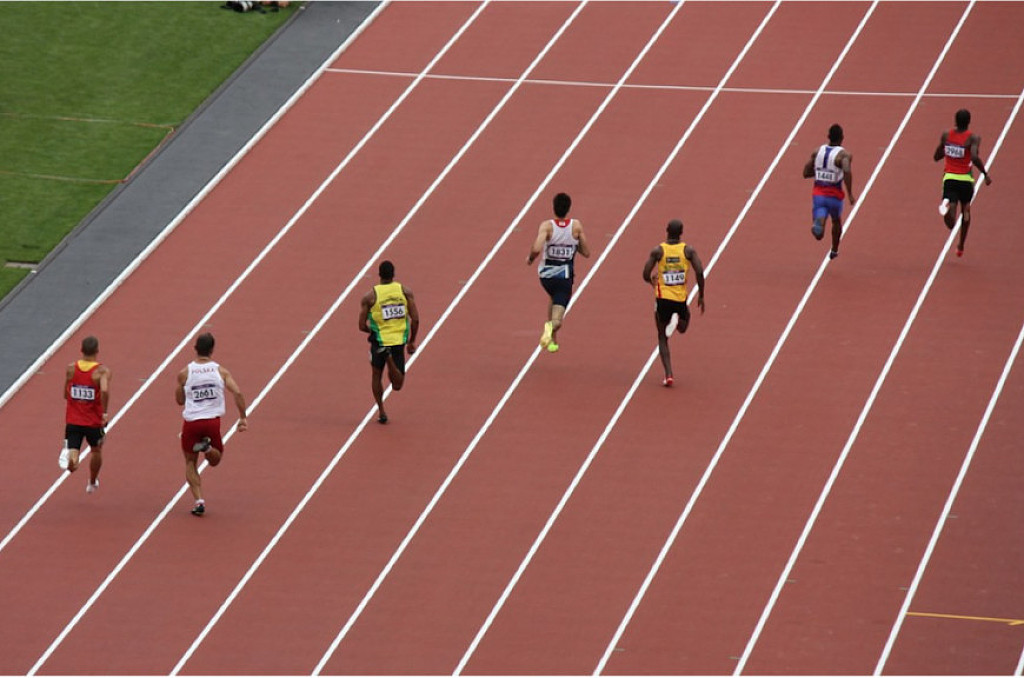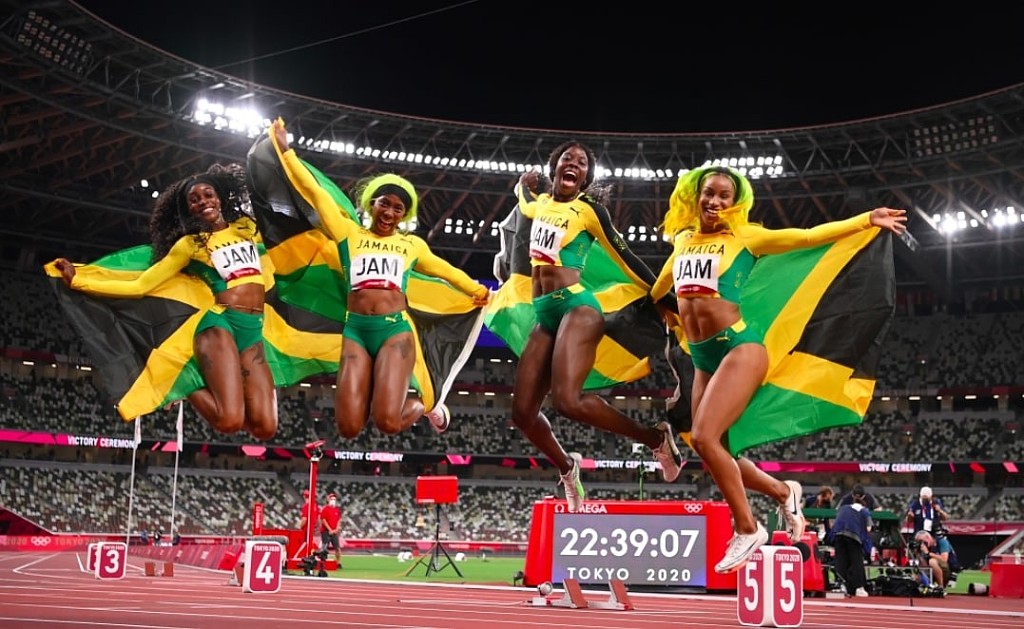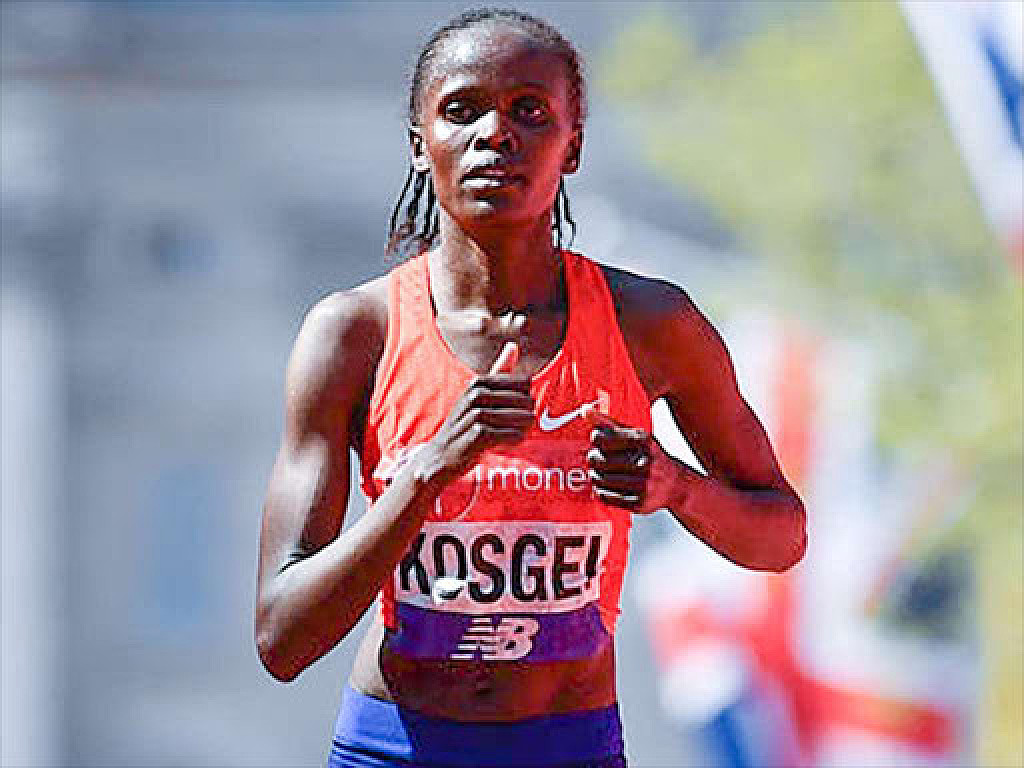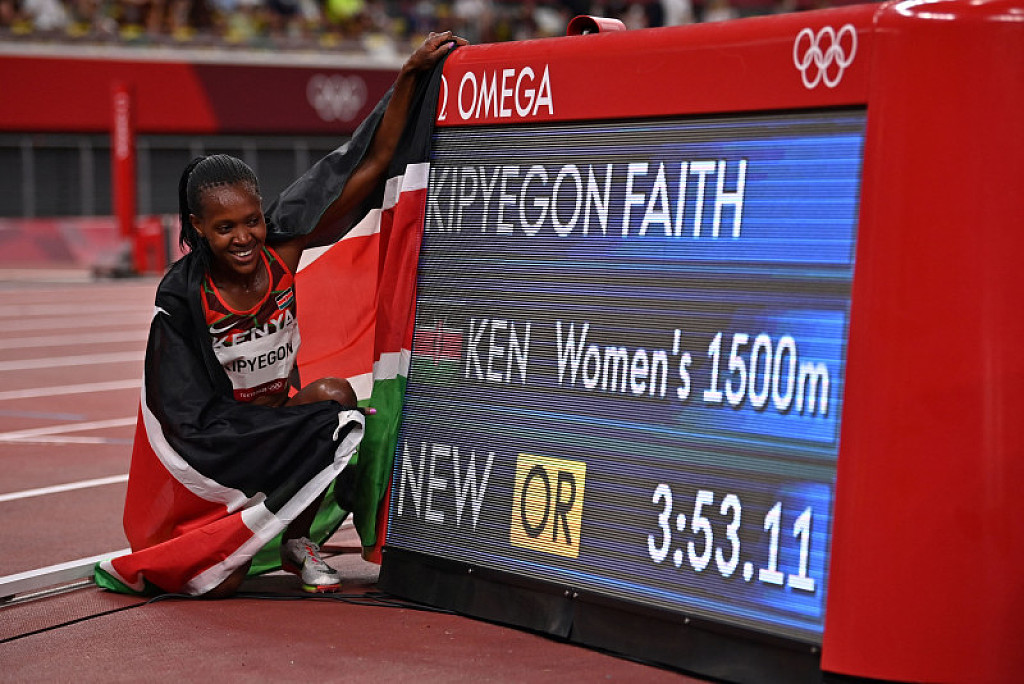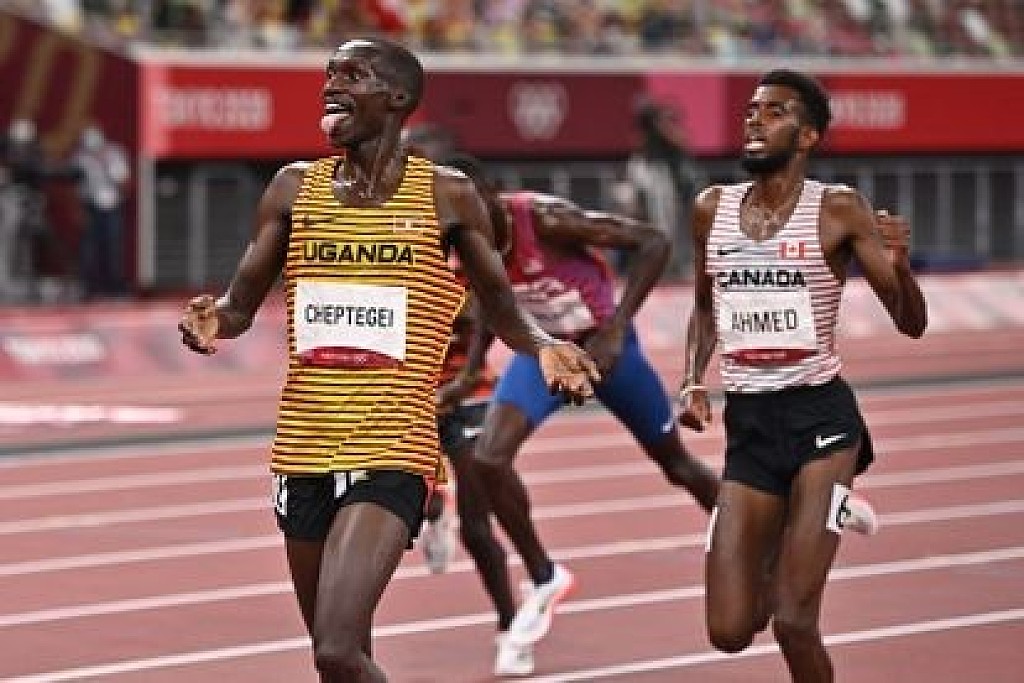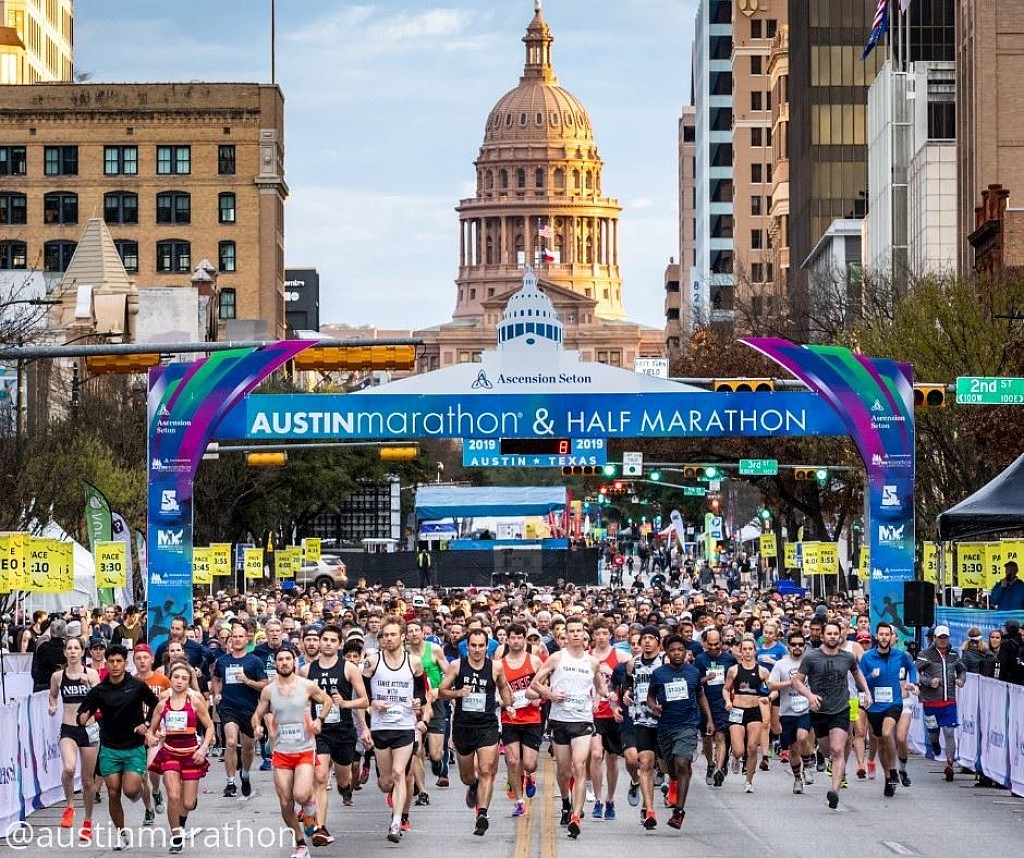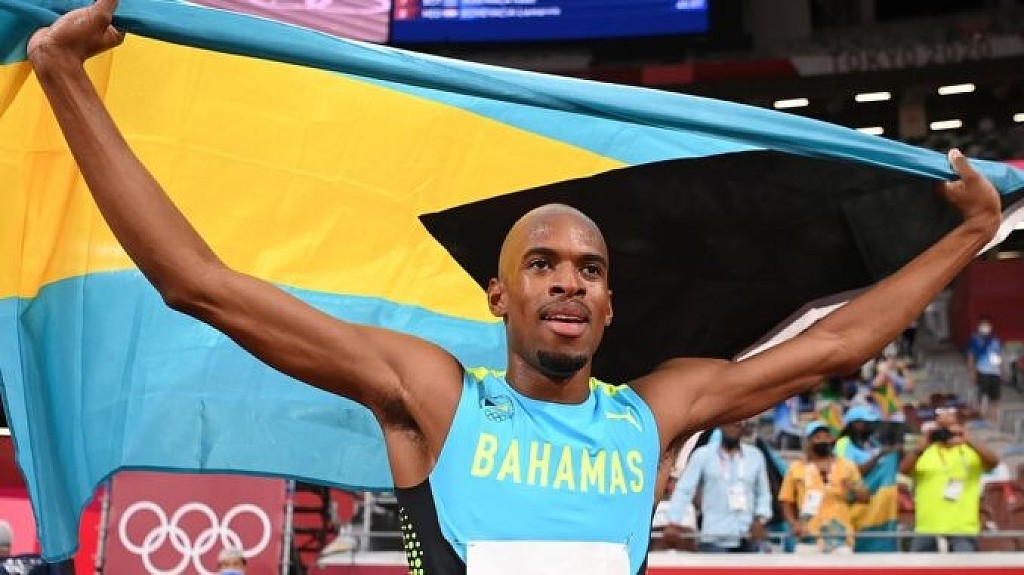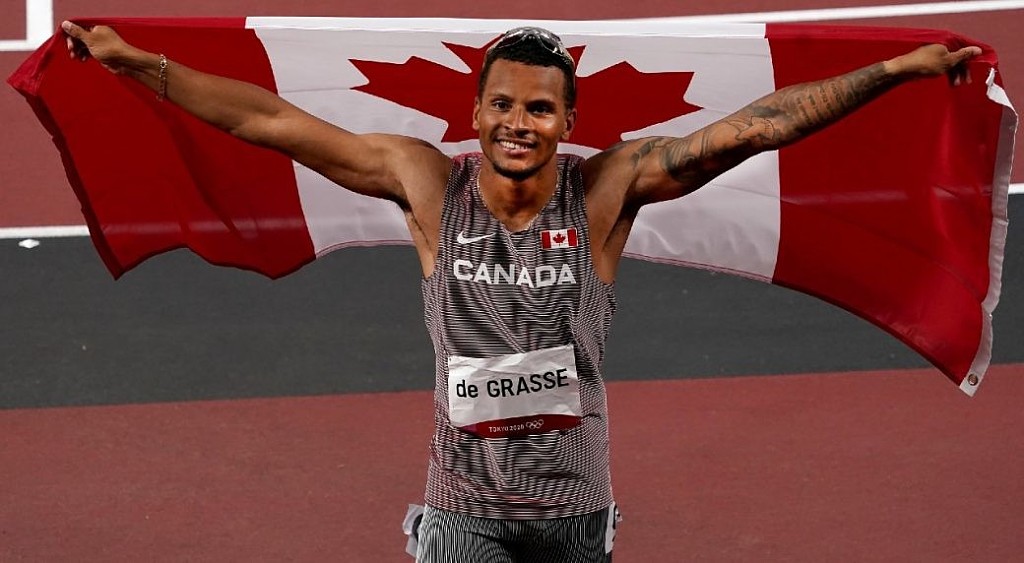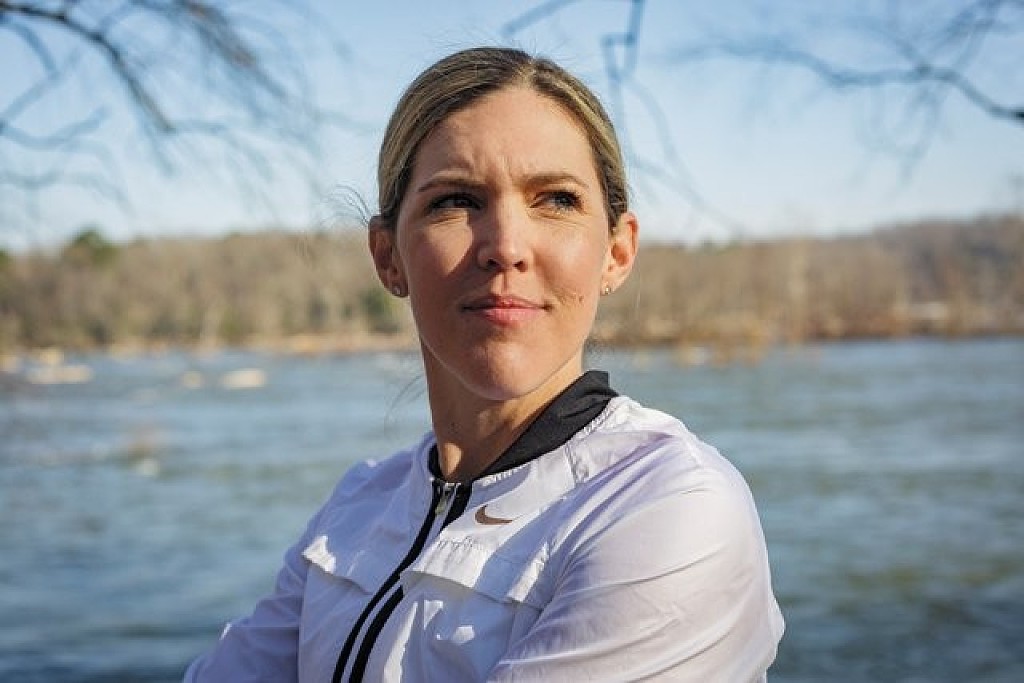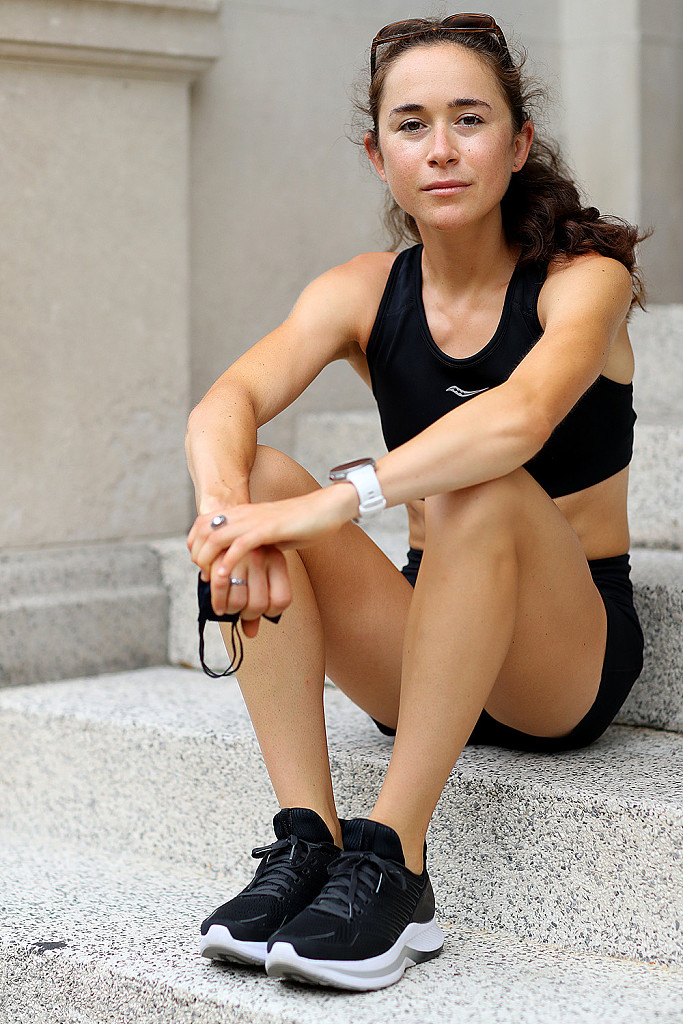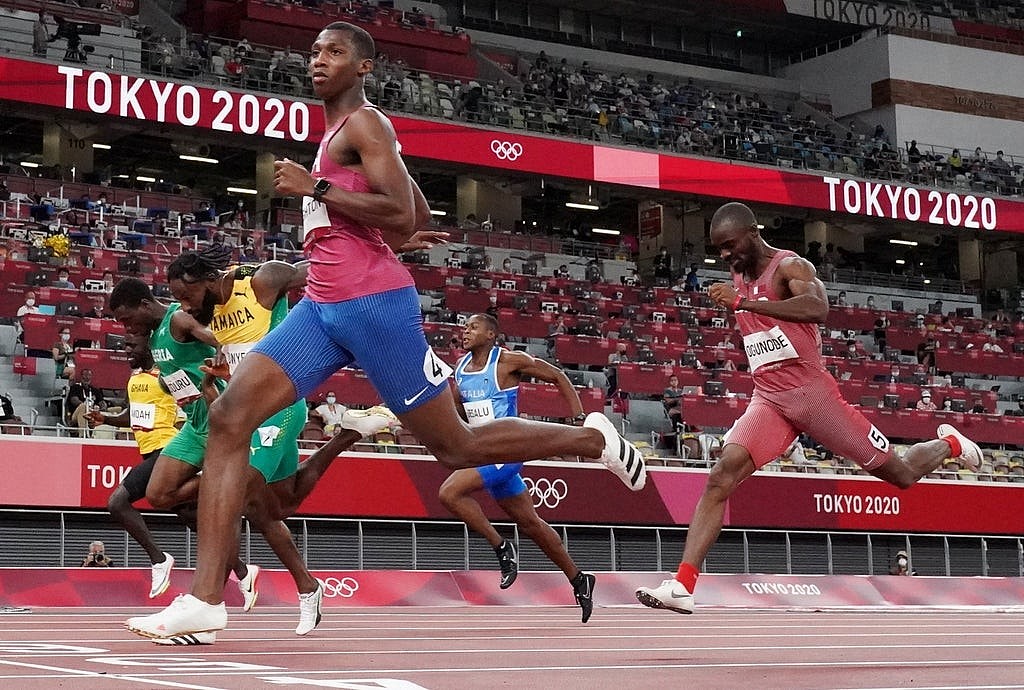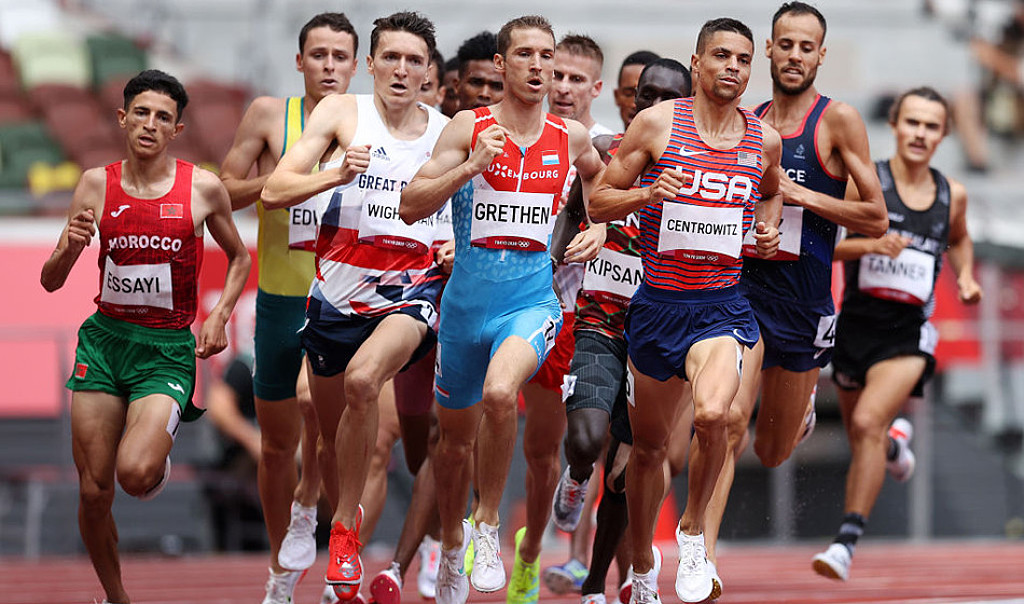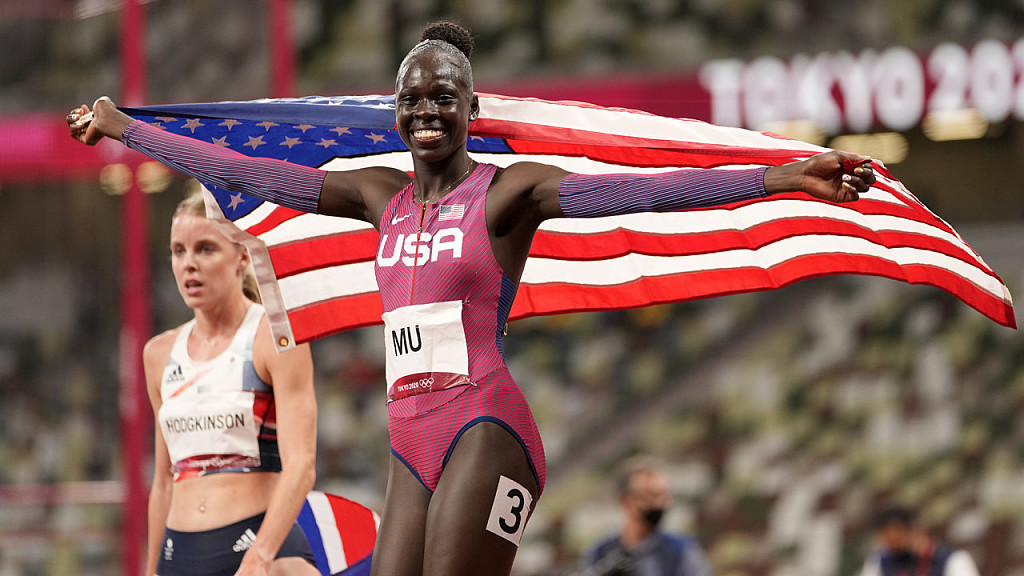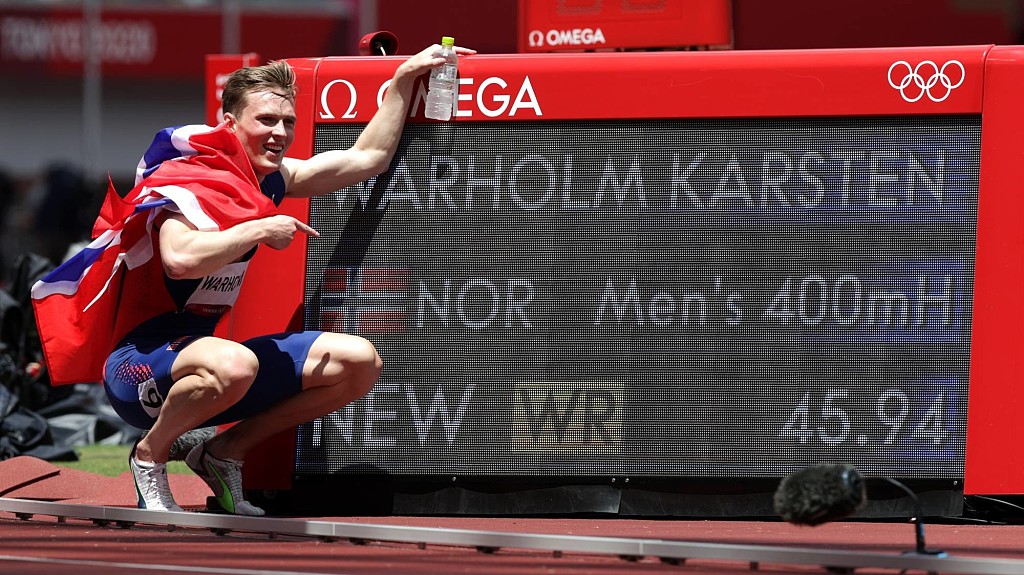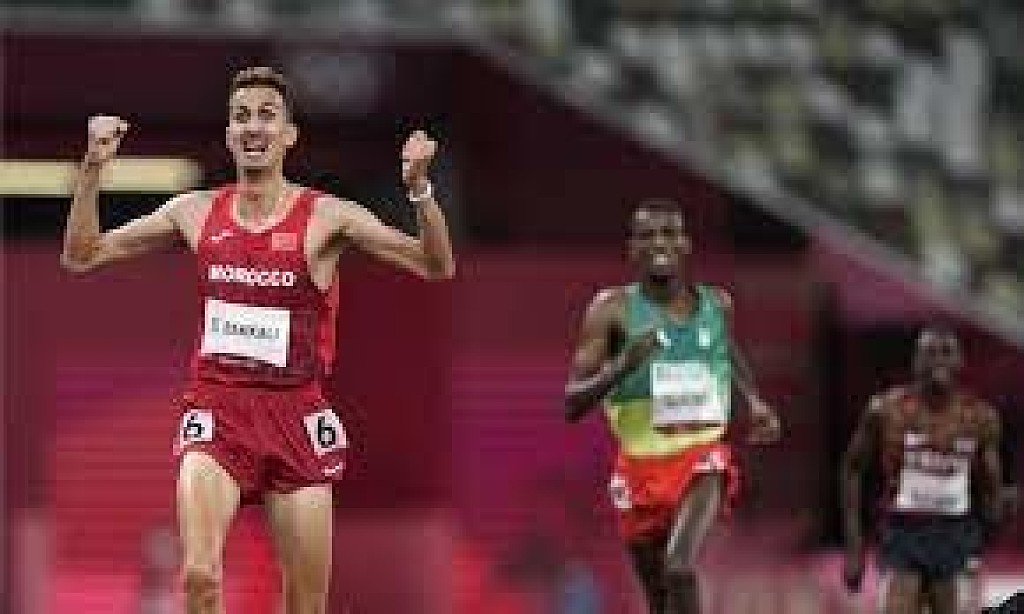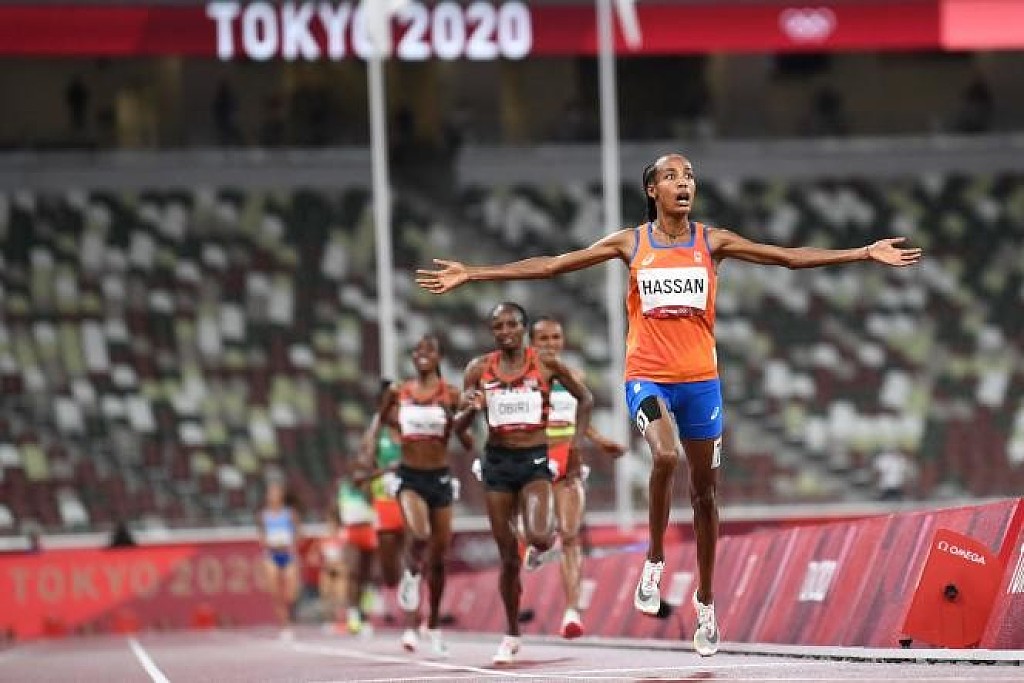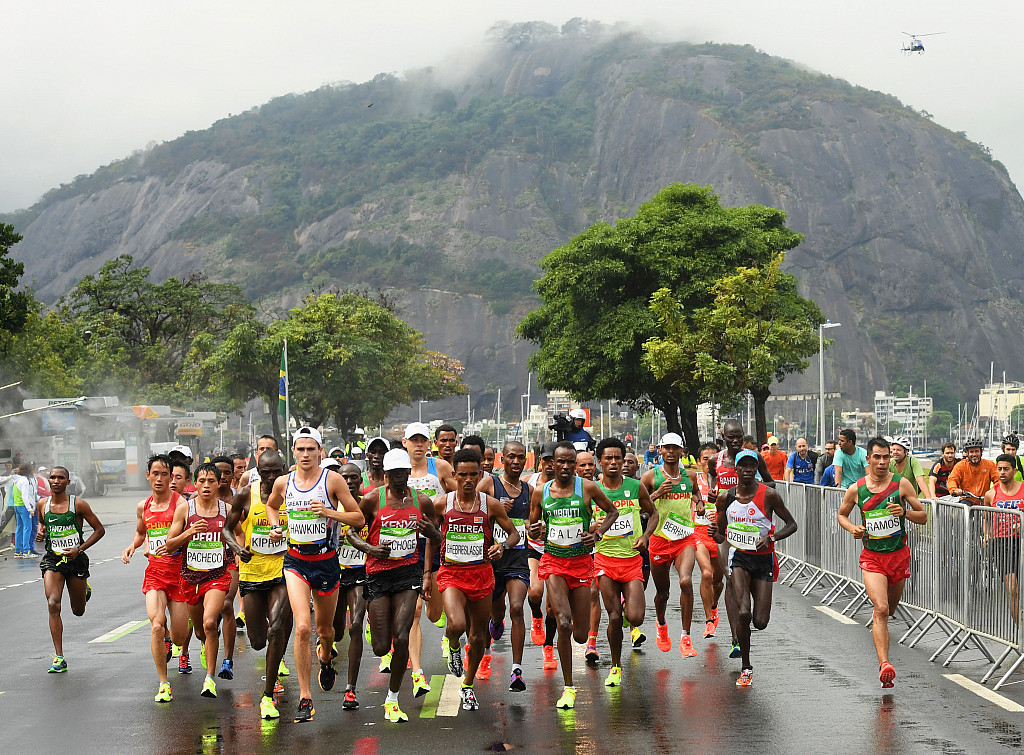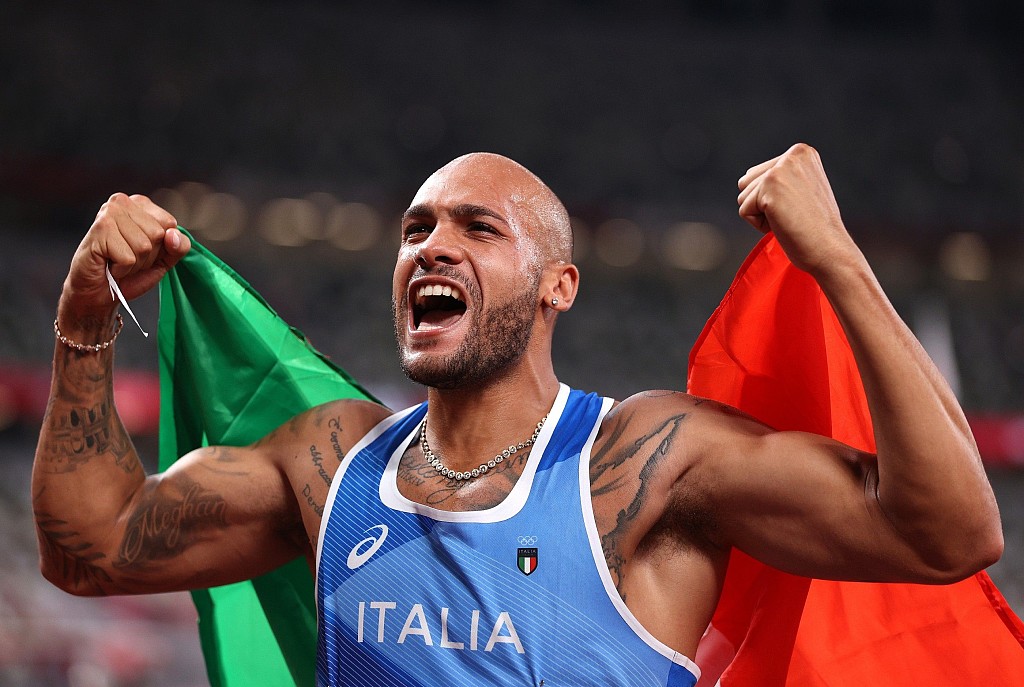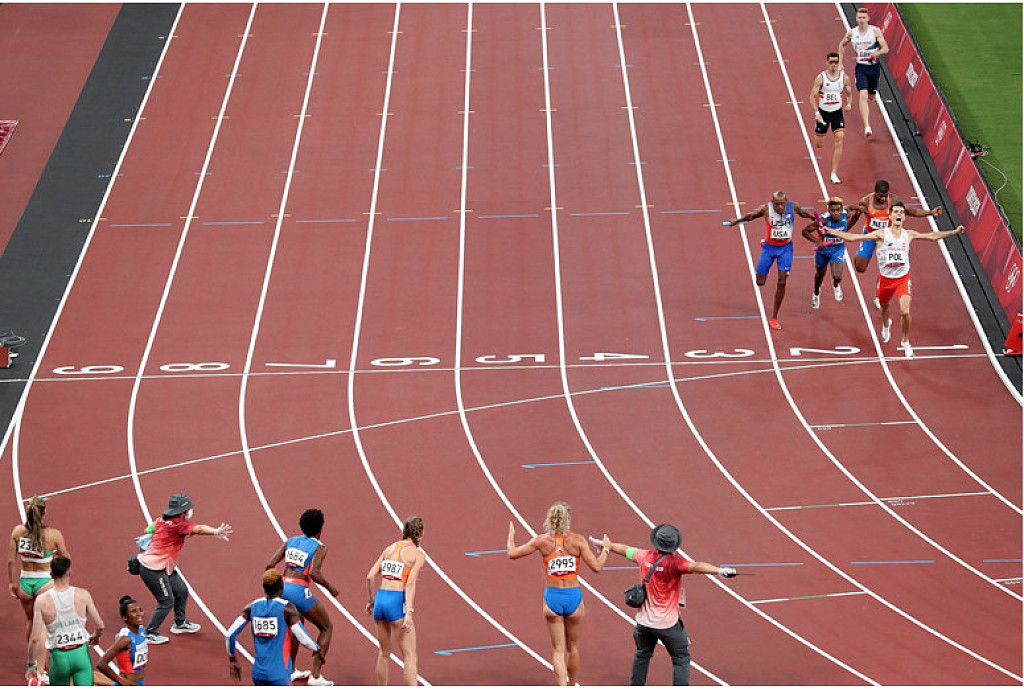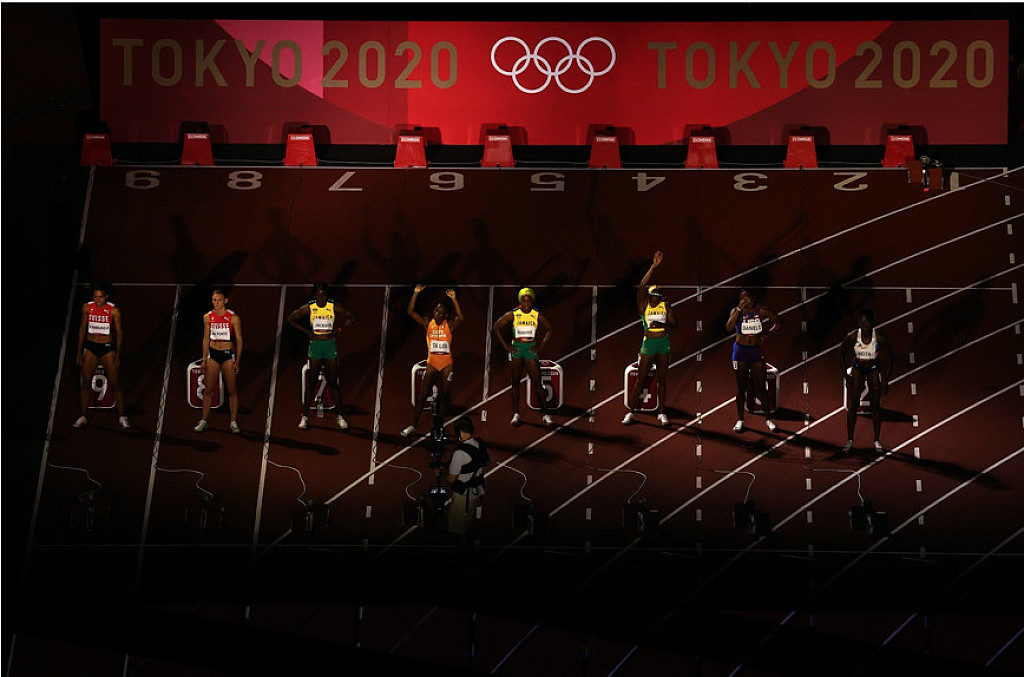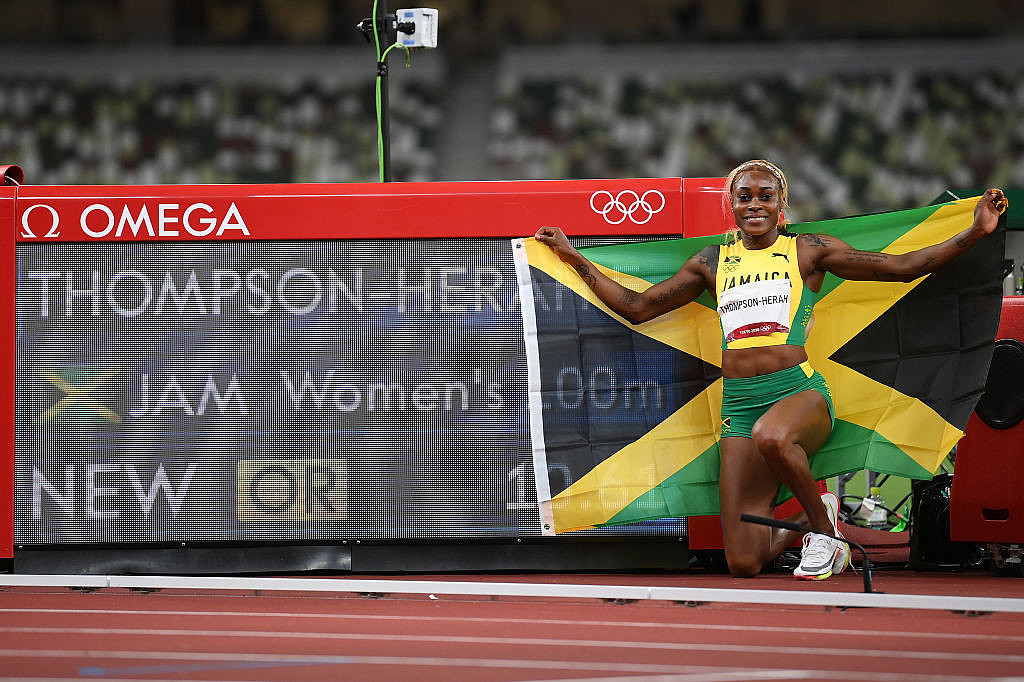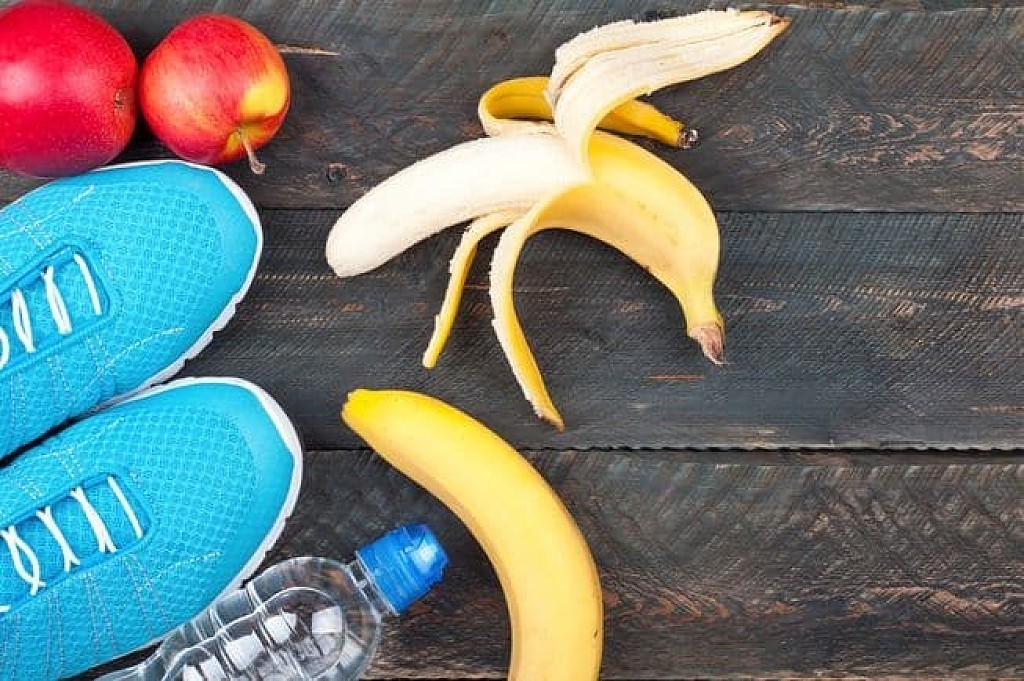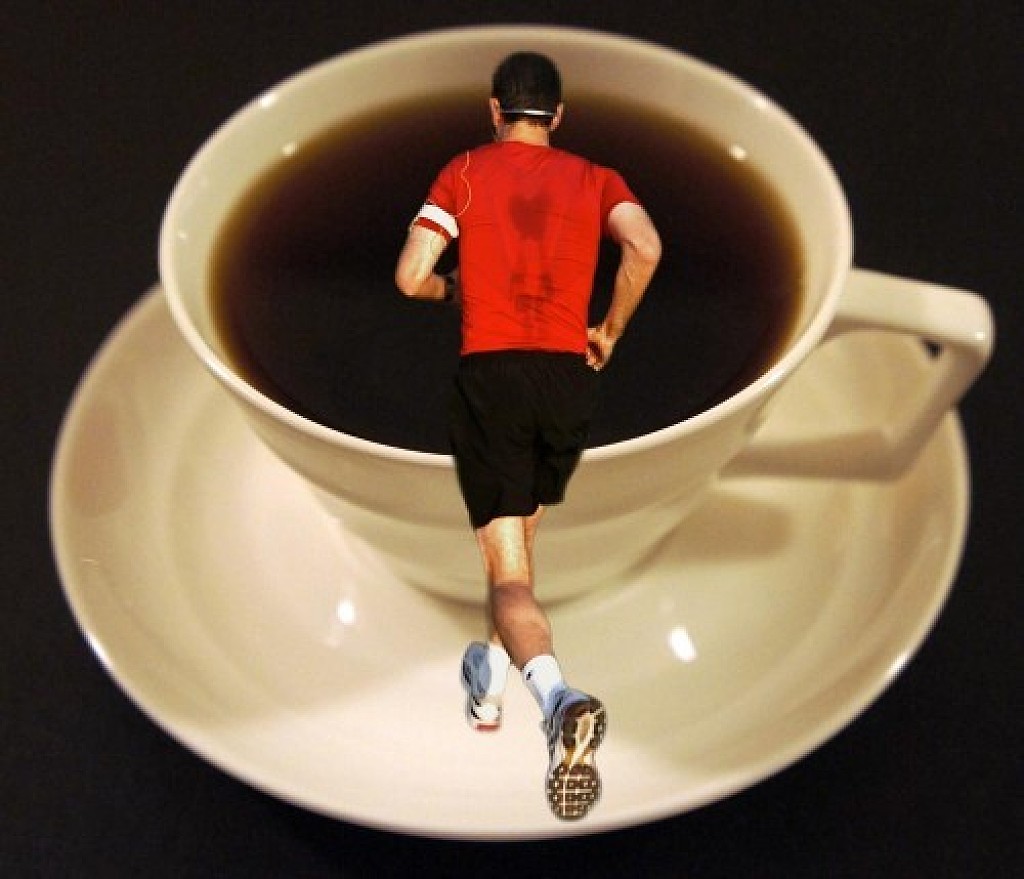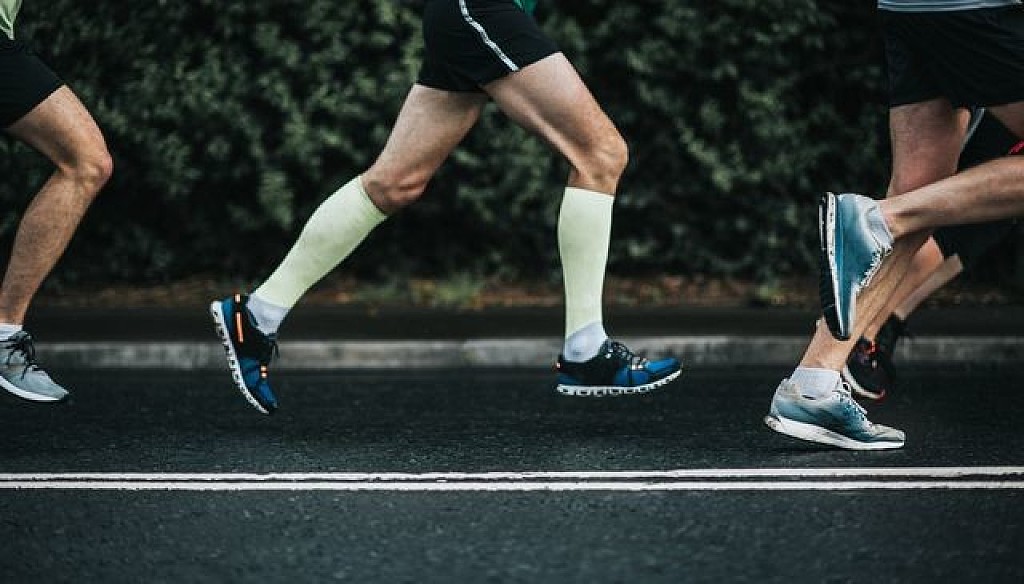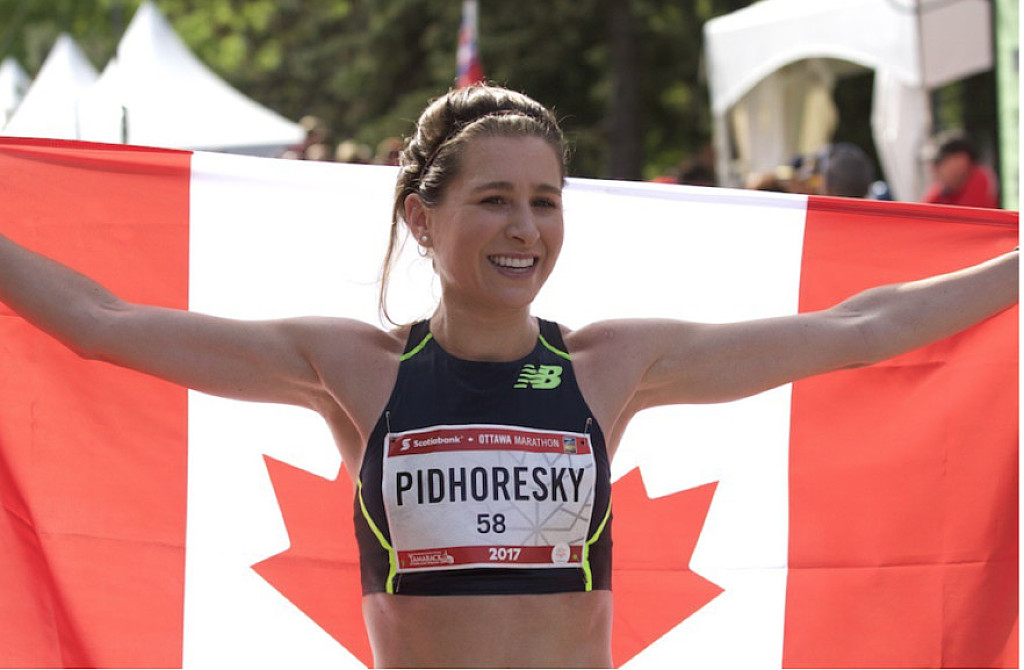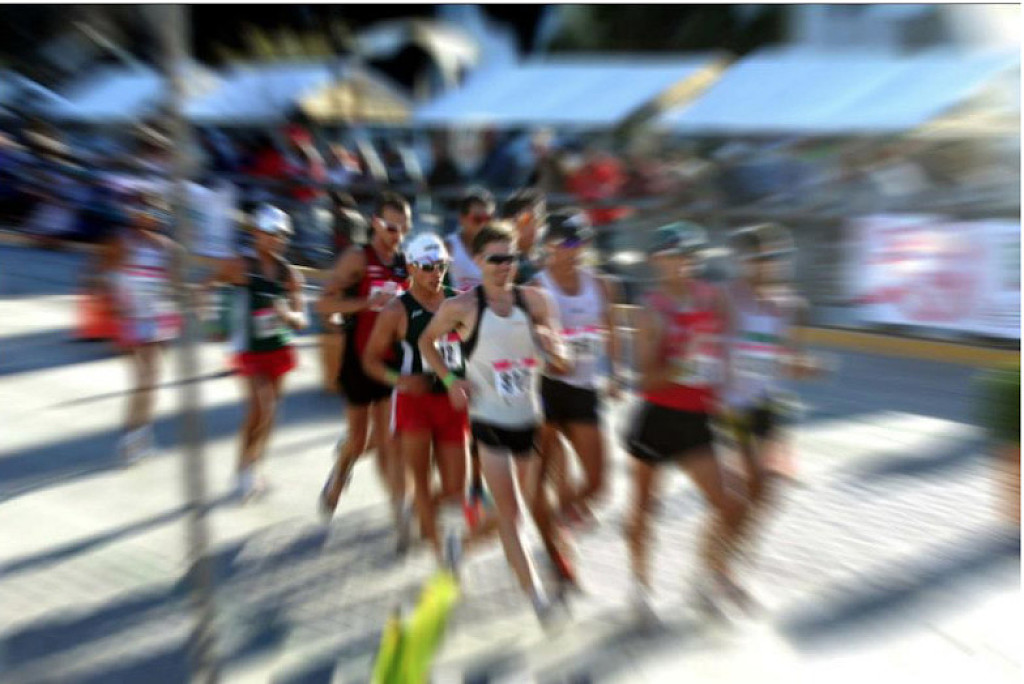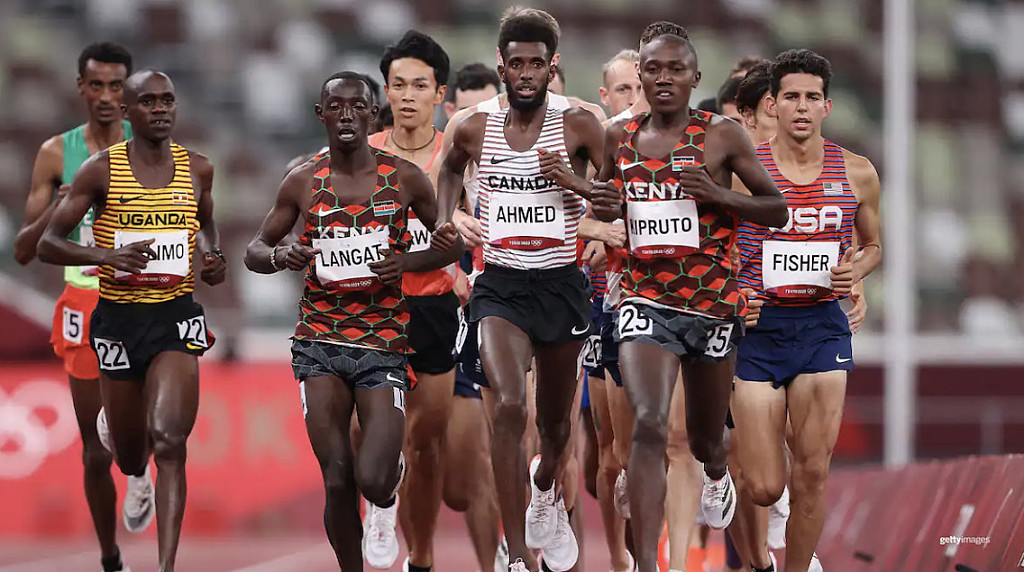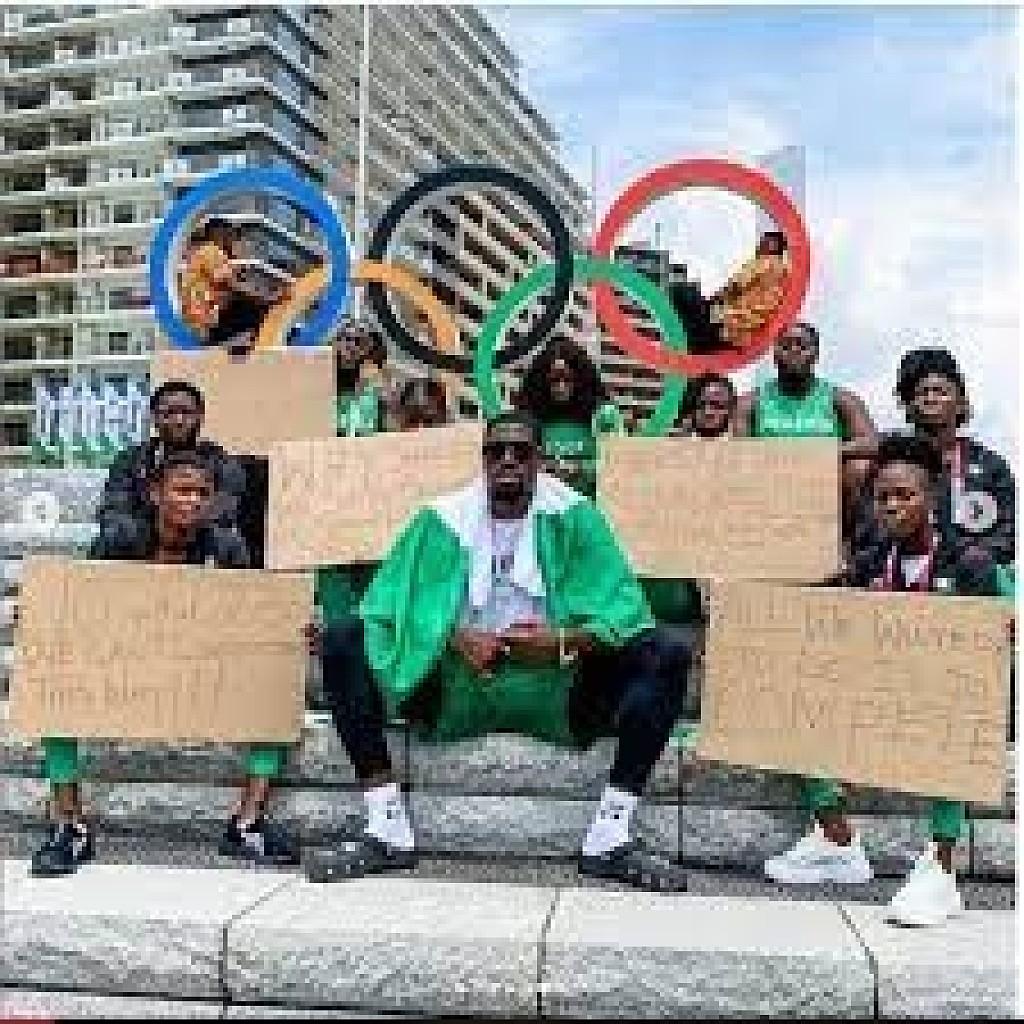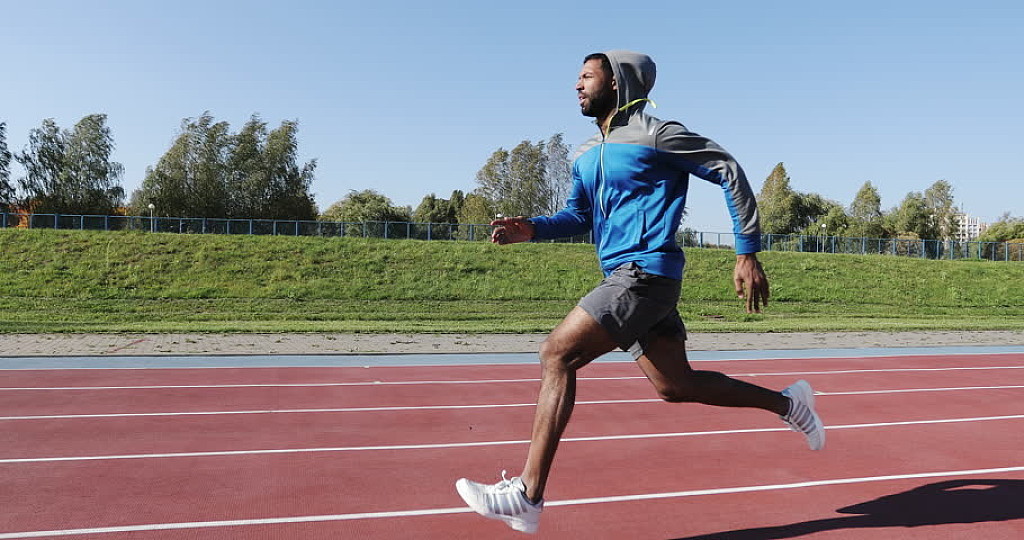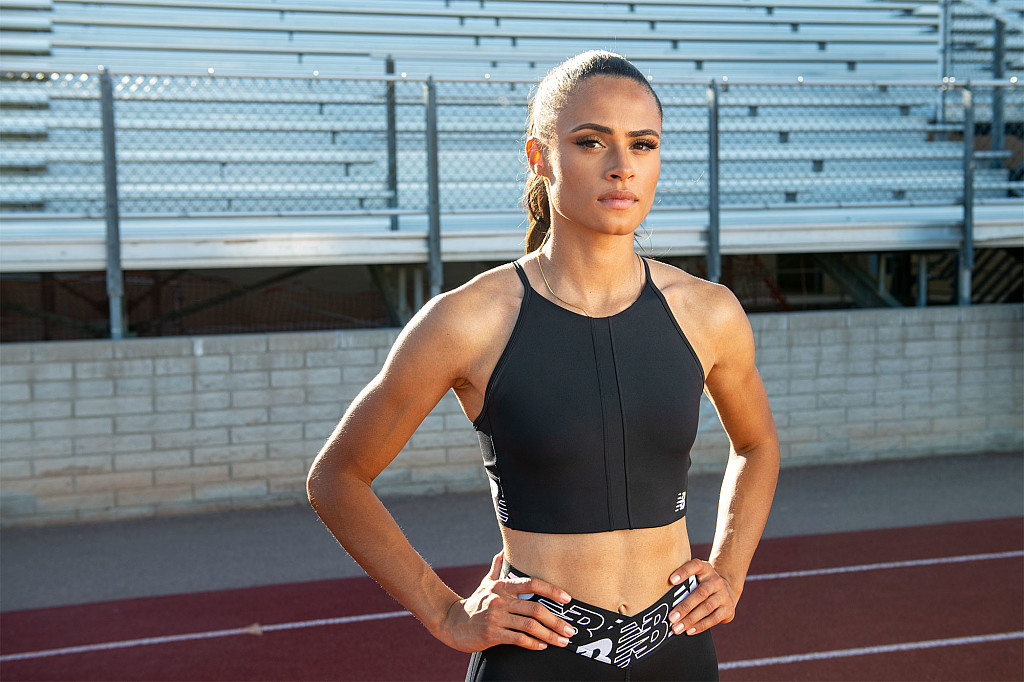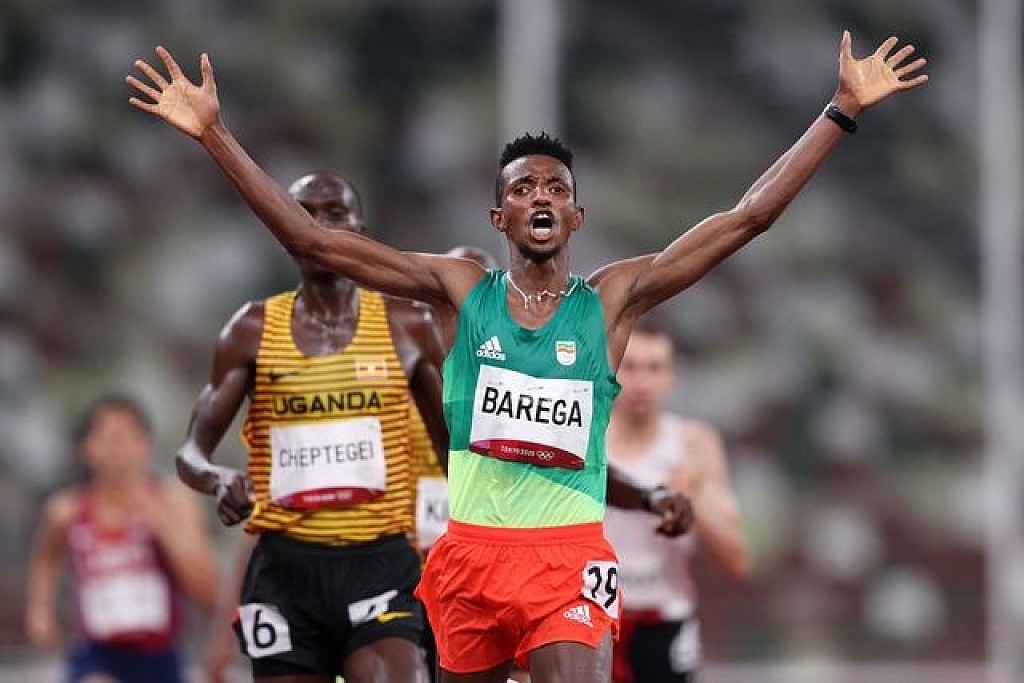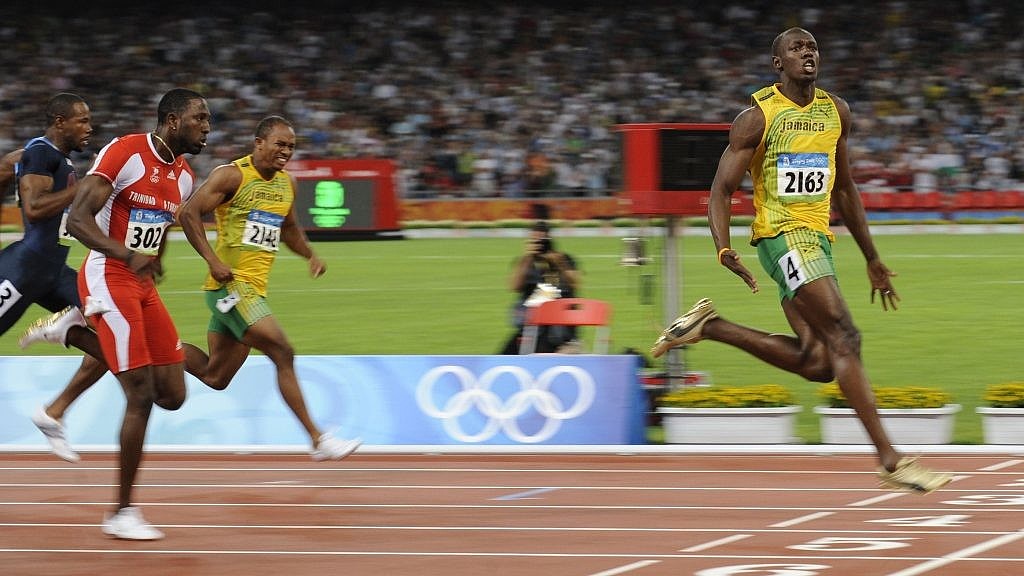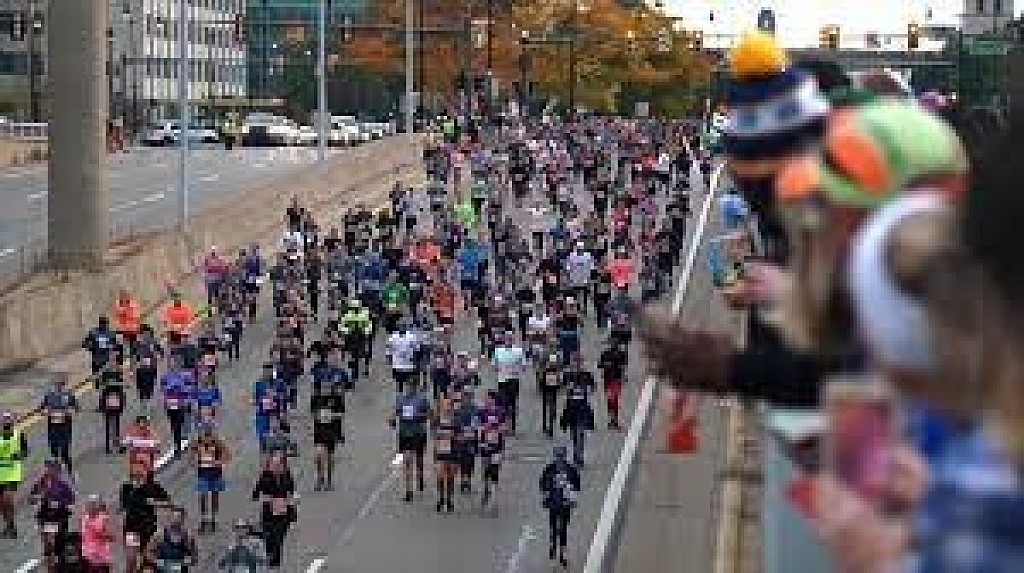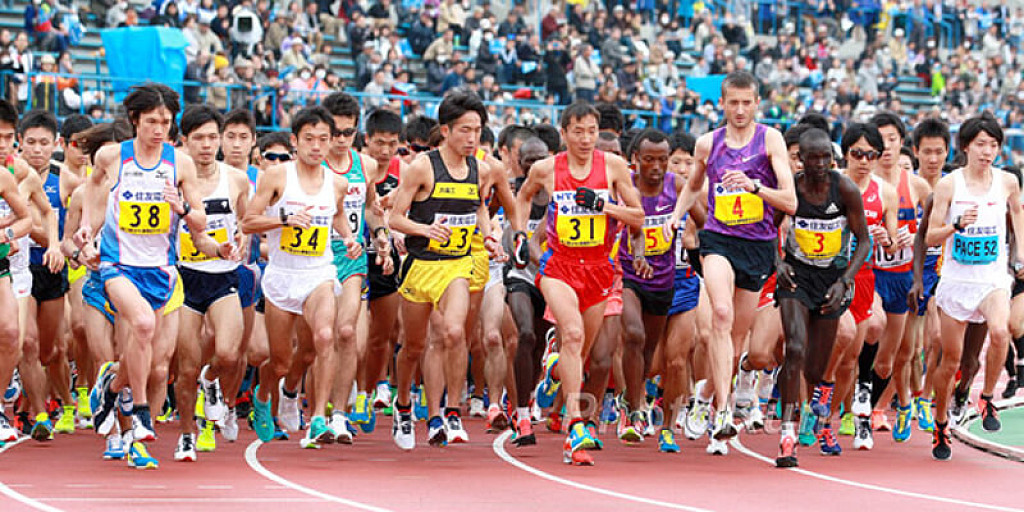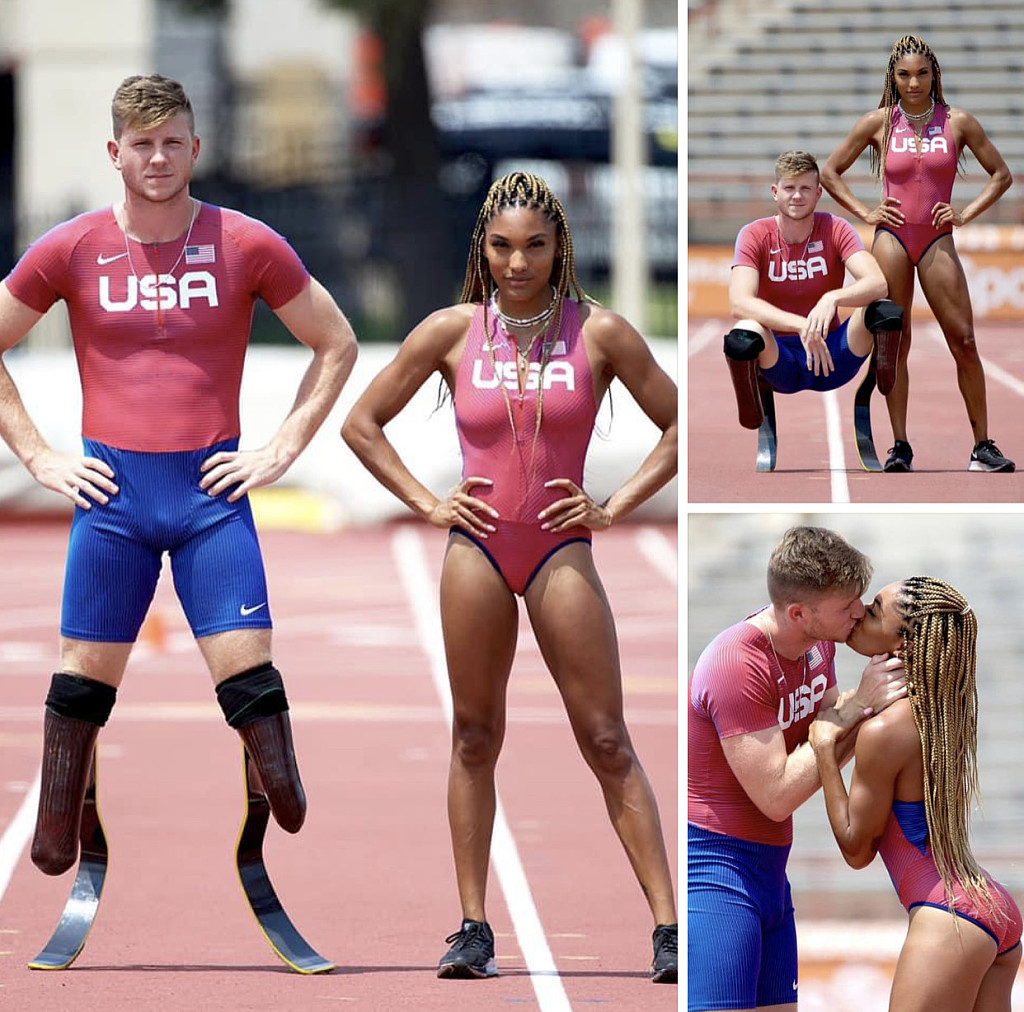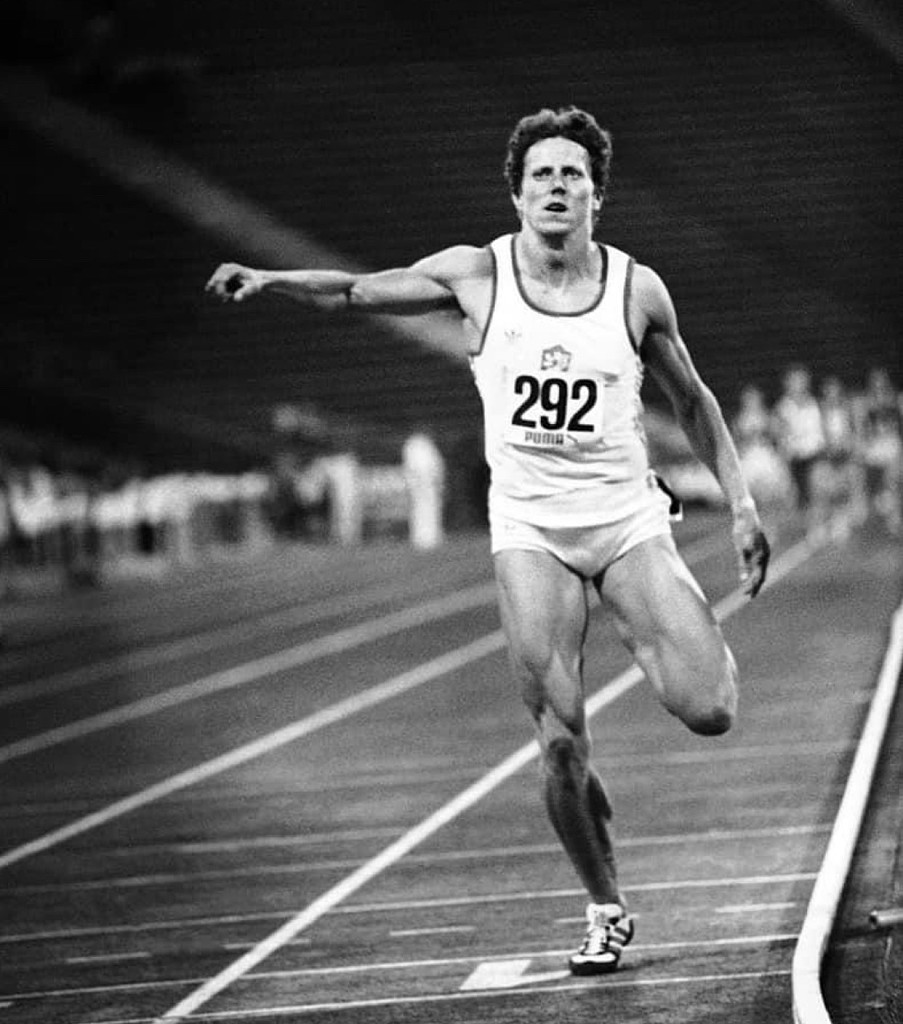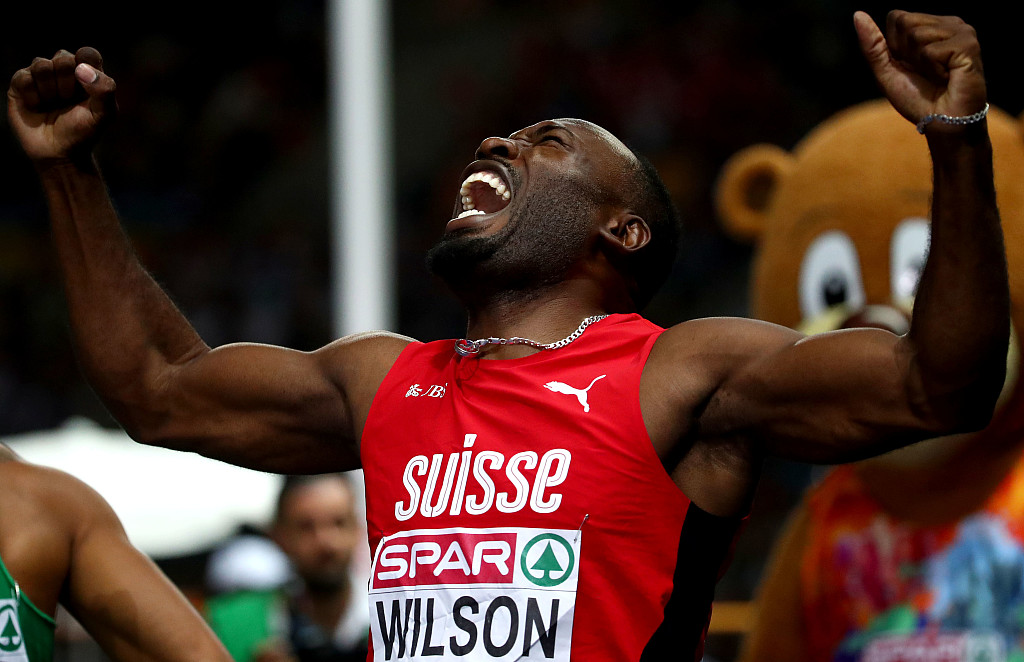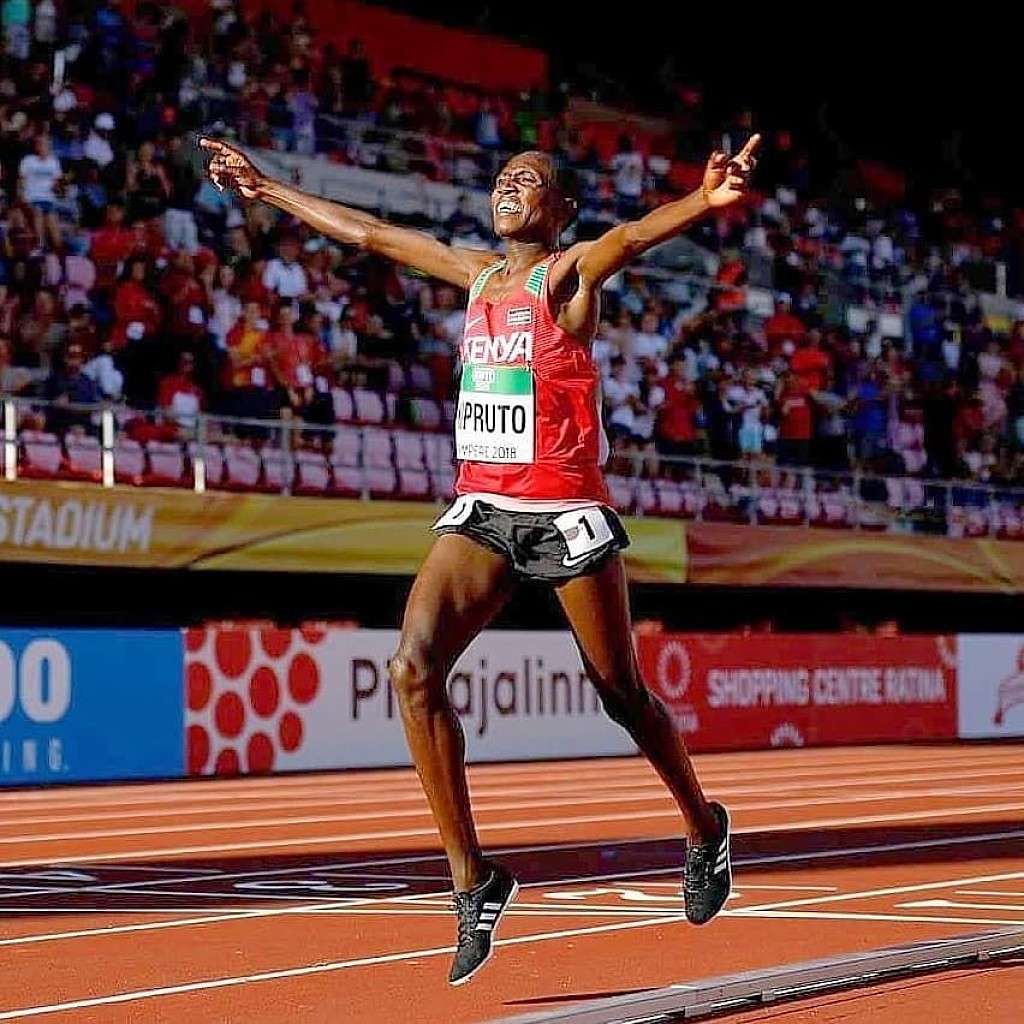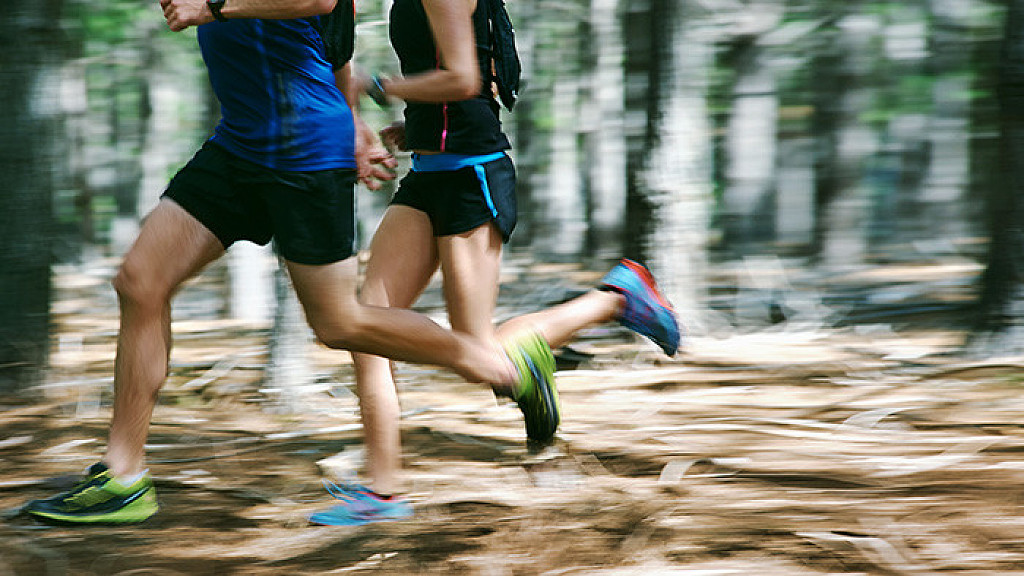Running News Daily
Running News Daily is edited by Bob Anderson. Send your news items to bob@mybestruns.com Advertising opportunities available. Train the Kenyan Way at KATA Kenya and Portugal owned and operated by Bob Anderson. Be sure to catch our movie A Long Run the movie KATA Running Camps and KATA Potato Farms - 31 now open in Kenya! https://kata.ke/
Index to Daily Posts · Sign Up For Updates · Run The World Feed
Why The Rocky Mountain Slam Is The Toughest Race Series In Ultrarunning
Almost every year, Leland Barker creates trophies for runners who complete the Rocky Mountain Slam, an annual test of endurance, fitness, perseverance, altitude and logistics.
To claim one of Barker's trophies, a big hunk of chainsaw-cut wood burned with the athlete's name, date and races, runners must complete four out of five designated 100-mile trail races over a 3-month span. Since the first completed slam in 1999, it has been accomplished just 59 times by 30 runners. Some years, as many as eight runners have earned the prize. However in other years, it's been zero.

"It's definitely a feeling of accomplishment," says Andrew Barney, 44, of American Fork, Utah, who's done it four times. "I know a lot of runners who say they only run one 100 a year, and that's big enough for them."
The only runner who hasn't collected the big wooden trophy is Barker himself. He completed the Slam in 2003 but never gave himself the award.
"I meant to," he says, laughing. "I had a piece of wood saved to make an award for me and I never got around to making it."
That's just fine with him, though. The 59-year-old resident of Smithfield, Utah, has gotten all he's wanted out of the Slam-and more.
Barker is the race director of the annual Bear 100 Mile Endurance Run. The race, which crosses the Utah-Idaho border, was founded in 1999. Barker wanted a way to attract more runners to his race. He's not certain of the date, or who actually came up with the idea, but says the Slam sprouted from a discussion between himself, Roch Horton, Hans-Dieter Weisshaar and Errol Jones. The idea was inspired by the Grand Slam of Ultrarunning, which has been around since the 1980s and challenges runners to complete the nation's four oldest and most prestigious 100-milers in a calendar year.
To complete the Rocky Mountain Slam, men and women have to finish four out of five annual races in the Rockies: the Bighorn 100 in Montana in June, the Hardrock 100 in Colorado in July, the Leadville Trail 100 in Colorado in August, the Wasatch Front 100 in Utah in early September and the Bear 100 in late September. Leadville and Wasatch are also part of the Grand Slam of Ultrarunning.
"We wanted the Bear to be the final race," says Barker.
It's an informal fellowship. Runners don't have to register, notify anyone of their intentions or pay any special fees. The only requirements are to finish the two mandatory races-Hardrock and Bear-along with two of the other three. Then, Barker recognizes those runners at the awards ceremony. They earn Barker's wood trophy and, sometimes, a T-shirt.
It's so informal that the first runner to complete the Rocky Slam in 1999 was grandfathered in. James Ballard of Montana ran the Hardrock, Leadville, Wasatch and Bear races the year before Barker and his buddies had even come up with the idea.
Nobody earned the Slam in 2000. Betsy Kalmeyer of Colorado was the lone qualifier in 2001. In 2002, no one earned the trophy. Then, in 2003, Barker was one of five slammers, a group that included Weisshaar, a 63-year-old from Germany who would go on to be a six-time slammer, the most ever.
"He was amazing," says Barker. "He was doing it when he was my age. I'm no longer doing 100-mile races. Actually, he was older than me when I started doing it. He didn't go real fast, he was one of the last finishers usually. But he really enjoyed doing 100-mile races. He'd come to the United States and do one every weekend all summer long."
Most judge Hardrock as the toughest race of a difficult bunch. "It's an amazing amount of climb and descent," says Barker.
In fact, it's more than 66,000 feet of elevation change at an average elevation of 11,000 feet. Each race has its challenges. Leadville is run at high altitude, with a 30-hour time limit. The Wasatch ("100 miles of heaven and hell," is its slogan) has big climbs and descents, as do the Bear and Bighorn. To Barney, the five races all share Rocky Mountain character of steep terrain, unpredictable weather, high altitude and beautiful scenery. He says there's a "ruggedness" of rocky trails.
"It's a lot of steep climbing," says Barney. "And all kinds of weather conditions. Even in summer, you can have snow. I've dealt with all kinds of conditions, from heat to downpours to blizzards."
Barney completed his first Slam in 2009 and his fourth in 2016. In a perfect scenario, he would probably do four of the Rocky 100 races every year. However, he could not get into the Hardrock race this year. But he did run Bighorn and will be doing Wasatch and the Bear.
That's one of the logistical challenges making the Rocky Mountain Slam more difficult. As the number of ultrarunners surges, races become more impacted and many adopt lotteries. Hardrock, Leadville and Wasatch now have lotteries. Bear and Bighorn fill up quickly, so it's important to register early.
Barney acknowledges that doing four 100-milers in a summer is physically challenging, especially in years when the Wasatch and the Bear are within a couple of weeks of one another.
But, like other ultrarunners, he loves the mountains, trail running and being with friends. He enjoys pursuing the Slam and the feeling of accomplishment. He admits getting "a sort of empty feeling" when he can't get into a race like Hardrock. Plus, there's a spiritual pull to running 100 miles through the wilderness.
"At Hardrock, in the middle of the night, I had a chance to just lay down and turn my light off and look at the stars at 13,000 feet," he says. "You don't get to do that very often. Just enjoying being out there and the moment, seeing sunrises and sunsets and sunrises again in the course of one race, it's somethingIt let's me think about my place in the world and the universe and where I fit in."
(08/07/2021) ⚡AMPby Trail Runner Magazine
A British couple are completing every single Olympic event in 17 days for charity
Stuart Bates and Charlotte Nichols of the U.K. have set out to complete every single Olympic event over the 17 days the Games are taking place in Tokyo. They’re taking on this challenge to raise money for the Motor Neuron Disease Association (MNDA), and are calling it the “Spennylympics” in honor of Bates’ brother, Spencer (a.k.a. Spenny), who passed away from motor neuron disease
In order to complete this formidable challenge, Bates and Nichols will have to complete 96 events in 17 days, including the marathon, 10K swim and the 234K cycling road race. They’ll even be putting together a synchronized swimming routine — and we thought Sifan Hassan’s competition schedule was grueling!
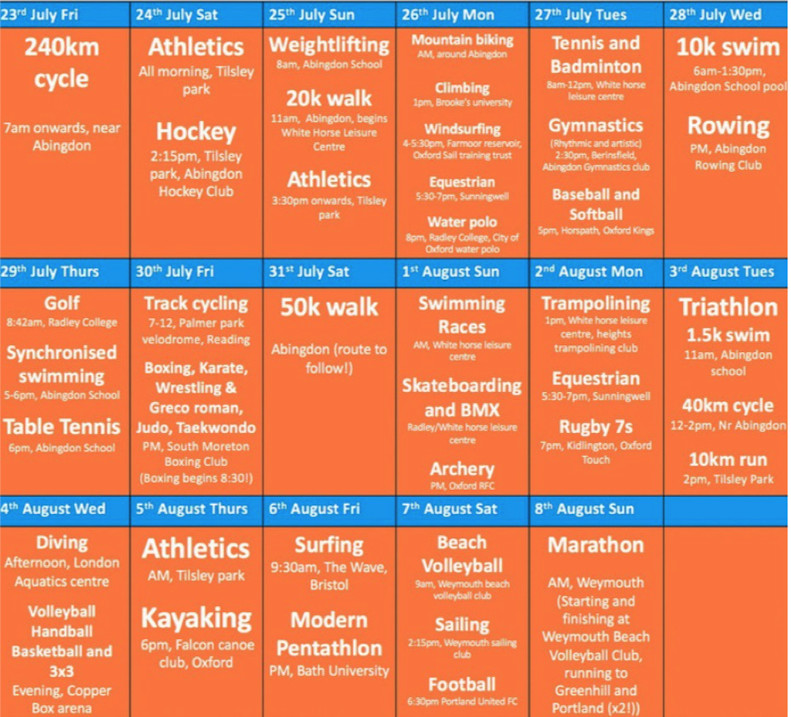
Bates and Nichols share on their website that they were both excited and terrified to begin the challenge. “We share a passion for all sports and are by nature hugely competitive people (without the fitness or expertise to back it up!),” they add. “Although we have both previously completed fundraising events they have been nothing quite like the scale or magnitude of the Spennylympics.”
Their motivation, of course, is to raise as much money as possible for the MNDA, and they continue to say that the pain and sacrifice they will experience over these 17 days will pale in comparison to what those living with motor neuron disease experience on a daily basis. Still, the pain they’ve experienced during some of the events, notably the 50Km race walk, has been significant.
With only four days left in these Olympics Games, the pair have less than 10 events to go in order to complete the challenge. While they are close to the end, they’ve saved the marathon for last, which will be a monster hurdle to get over before officially finishing the Spennylympics. To keep up with their efforts, follow them on Twitter (@spennylympics) and Instagram, and if you’d like to support their cause, head over to their website to donate.
(08/07/2021) ⚡AMPby Running Magazine
Tokyo Olympian runs fast 400m time in a baggy, oversized T-shirt
As the Olympics have transitioned into track and field from road cycling and swimming, there is a debate on Twitter on why all track athletes do not wear aerodynamic suits, as cyclists and swimmers do.
Bahamian 400m sprinter Steven Gardiner won the 400m semifinals in a speedy time of 44.14, which put him into Thursday’s final. 44 seconds for 400m is spectacular, but fans on Twitter were more impressed he ran that time while wearing an oversized Bahamas training T-shirt. Our sources did not confirm if he actually forgot his race singlet in the Athletes’ Village, or if he just prefers his sleeves flapping in the wind. Gardiner was the inspiration for the Twitter debate about the aerodynamics of sprinters’ racing kit. (Spoiler alert: we published this story the day before the 400m final, which Gardiner would go on to win in 43.85, wearing appropriate racing attire, but still an untucked shirt, not unlike many others.)
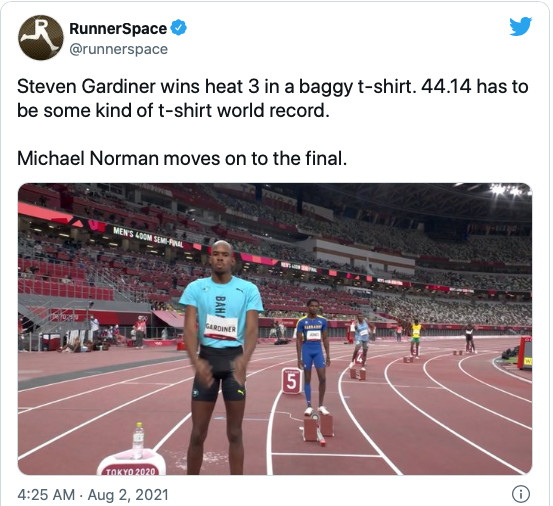
Aerodynamics refers to the concept of forces resulting in the motion of objects through air. The study of the motion of air around an object allows us to measure how gravity and resistance work while the object travels through it.
As we’ve seen, aerodynamics are very important to cyclists. Any stray fabric flapping in the breeze is potentially slowing them down. On a flat road, aerodynamics are by far the greatest barrier to a cyclist’s speed, accounting for 70 to 90 per cent of the resistance riders experience when pedalling. The only greater obstacle is climbing up a hill, as gravity far outweighs the effect of wind resistance. Over the past five years, there has been a major development in more stretchy, lighter and breathable fabrics for cyclists to slice through the air while competing at high speeds.
Technology is constantly evolving to benefit the athlete and allows them to operate at a high level of performance. At these Olympic Games, male and female athletes are given a choice on what they can wear during competition. In certain events such as the 10,000m, where you have to run 25 laps around the track, a majority of distance athletes will wear the classic singlet and shorts, due to their loose-fitting and comfortable feel for 30 minutes of high-intensity running. During a 10,000m race, speed does help, but cutting the air is less important, as most runners will reach a top speed of 25 km/h and will remain tucked into a pack for most of the race.
When Eliud Kipchoge broke the 2-hour marathon barrier at the INEOS 1:59 Challenge in Austria, scientists at Eindhoven University in the Netherlands analyzed wind formations when running at 21.2 km/h. They ended up proposing a special arrangement of runners who would pace around Kipchoge in order to lower his output of power against resistance, which ultimately allowed him to perform at a higher level. This formation is very similar to those in a bike peloton at the Tour de France. The athlete who takes the wind has to work harder than the athlete tucked in behind him.
Unfortunately, sprinting events do not have the luxury of pack-aided performance. When Usain Bolt set the 100m and 200m world records, he achieved his top speed of 45 km/h in a singlet and half tights. According to scientists, when a human reaches a speed faster than 40 km/h, 80 per cent of the human’s power output goes into overcoming air resistance and gravity. During his six gold medal performances in the 100m and 200m, Bolt never used the aerodynamic speed suit. Who knows what he could’ve run wearing 400mH champion Karsten Warholm’s Puma speed suit?
A few of the world’s top track athletes are beginning to transition to the speed suit to gain any aerodynamic benefits they can. Norway’s Jakob Ingebrigtsen and Mohammed Katir of Spain, two of the fastest men on earth over the 1,500m and 5,000m distances this year, were both wearing one-piece speed suits during their Olympic heats. Newly crowned 800m gold medallist Athing Mu has been racing in wind-cutting suits since turning pro earlier this year. Clearly, science has proven wind-cutting technology can make a difference, but World Athletics, the governing body of track and field, gives each athlete a strict guideline on what can be worn during competition at the Olympic Games and World Championships:
According the World Athletes under rule 143 section 5 of World Athletics – competition and technical rules:
In short, this means that all athletes competing have to abide by the competition rules of their countries’ athletic governing body, which must abide by the rules and regulations set by World Athletics.
At these Games, men and women are given the choice of three options for competition; a singlet and short shorts, one-piece aero-speed suit, or (a combination of speed and comfort) a singlet and half tights – the best of both worlds. Women are offered one more option, with the crop top and short shorts.
As technology advances, the world’s best athletes continue to chase world records. The athletes will always lean towards wearing the lightest or fastest gear to give their performance a slight edge over competition. Who knows? Maybe the Sydney Olympics gold medallist, Cathy Freeman, was ahead of her time when she won the 400m in a head-to-toe speed suit.
(08/07/2021) ⚡AMPby Running Magazine
Jamaican women win gold in womens 4x100m final
The Jamaican women brought out the big guns for the final of the 4x100m relay, and it paid off. Briana Williams ran the lead leg, handing off to Shelly Ann Fraser-Pryce, then Elaine Thompson-Herah and Shericka Jackson (who also ran in the heats) for the win in a national record of 41.02. They edged out the USA, who took silver in a season’s best 41.45, anchored by Gabby Thomas (with a lot of ground being made up in the third leg by Jenna Prandini).
Great Britain came through for bronze in 41.88. It was the third time in four Olympics that these three nations have stood on the podium in this event, in various configurations of gold, silver and bronze.
There were a few moments of doubt over whether the Jamaicans might have been out of position in the first hand-off, but ultimately the result stood, and the team started celebrating. Switzerland ran well, with 100m finalists Ajla del Ponte and Mujinga Kambundji racing hard to put their team on the podium, but ultimately it wasn’t enough. Team Netherlands fumbled the handoff from lead Nadine Visser to Dafne Schippers, and their race was done.
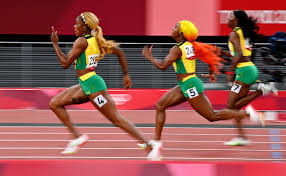
Miller-Uibo gets gold in 400m final
The women’s 400m final netted another gold for defending gold medallist Shaunae Miller-Uibo, who also won five years ago in Rio, in a personal best and area record of 48.36, after some doubt about whether the schedule would allow her to double. (Miller-Uibo also ran the 200m, but didn’t make the final.) Marileidy Paulino took silver in a national-record-setting performance for the Dominican Republic of 49.20. Allyson Felix, who won silver in this event in Rio, earned the bronze in 49.46, her fastest time yet this year and an unbelievable 10th Olympic medal for the American.

Team USA redeems itself in the men’s 4x400m relay heats
The first heat of the men’s 4x400m was fast and furious, with Team USA running well after its disastrous 4x100m performance. Anchor Michael Norman crossed the line first, in 2:57.77, followed by Botswana (who ran their fastest man, Isaac Makwala, as their lead leg, a strategy that paid off for them) and Trinidad and Tobago as the last auto-qualifier from this heat. Italy and the Netherlands, in fourth and fifth, had to wait and see if they would advance, but both qualified through to the final in the end. All five saw times under three minutes, and this heat produced three national or area records – for Botswana, the Netherlands and Italy.
The second heat was almost as fast, producing two national records (but in the fourth and fifth finishers, India and Japan, who did not advance). Poland and Belgium dominated, with the Poles crossing the line first in 2:58.55. Jamaica finished third, all of them running under three minutes. Going through to Friday evening’s final are USA, Botswana, Trinidad and Tobago, Poland, Belgium and Jamaica.
(08/06/2021) ⚡AMPby Anne Francis
Brigid Kosgei seeks Kenyan Olympic marathon redemption
World record holder Brigid Kosgei has the unenviable task at the Tokyo Olympics of restoring Kenya's image in the marathon, which suffered a huge dent after the 2016 Rio Games.
Compatriot Jemima Sumgong became the first Kenyan woman to win an Olympic marathon gold in Brazil, but she subsequently tested positive for the endurance booster EPO and was banned for eight years.
Kosgei, who ran the fastest women's marathon of all time, clocking 2hr 14min 04sec in Chicago in October 2019, is eyeing a medal on Saturday in Sapporo to spare Kenyan blushes.

Organizers moved the marathons from the capital to avoid Tokyo's punishing summer heat but temperatures in Sapporo are currently in the 30s, which will make the race a tough challenge for the entire field.
"I know it wouldn't be easy winning the gold medal... but I will go out there and take my chances since this is my first Olympics," Kosgei told AFP.
Like so many athletes, Kosgei traveled to the Olympics after 18 disrupted months due to the coronavirus crisis.
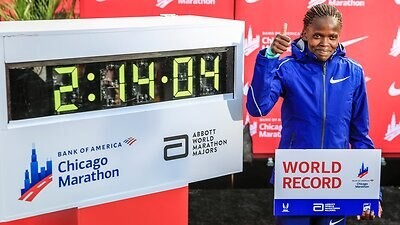
"It is unfortunate that we didn't have many competitions to help us prepare us for the Games since the Covid pandemic led to many race cancellations," she said.
A late starter in the sport, Kosgei -- a mother of eight-year-old twins -- had a difficult time growing up in a large family of seven children to a single peasant mother in Elgeyo Marakwet in Kenya's Rift Valley.
Like many of the girls in her village, Kosgei saw athletics as a vehicle to help her escape a life of destitution.
Her first marathon was in Porto, Portugal, in 2015 when the 27-year-old made a dream debut, winning the event in 2:47.59.
- 'Sharing the limelight' -
Kosgei credits her coach Erick Kimaiyo, a former winner of the Honolulu marathon and a runner-up in the 1997 Berlin marathon, for believing in her and helping to nurture her raw talent at his Kapsait training camp situated outside Nairobi at over 9,600 feet (2,900 meters) above sea level.
"I had grown up listening about the great marathon achievements of Catherine Ndereba and Tegla Loroupe, but I didn't expect that I could one day be sharing the same limelight with them," Kosgei said.
"But it was Kimaiyo’s belief in me that helped to propel me and see myself succeeding as a champion marathon runner."
The mentorship resulted in two contrasting victories at the 2016 and 2017 Honolulu marathons, with the difference in winning times between the two events -- 2:31:10 and then 2:22:15 -- further illustrating the power of the forged partnership.
She has won the London marathon twice and set a half-marathon course record of 64min 28sec at the Great North Run in northeast England in September 2019.
However, having missed the 2019 Doha world championships, Kosgei is hoping the Covid-affected Olympics will provide the big stage for her -- and redemption for Kenya.
(08/06/2021) ⚡AMPKenyan Faith Kipyegon outkicks Hassan for Olympic 1,500m gold, sets Olympic record
On another hot, humid night in Tokyo, the match-up we’ve all been waiting for finally took place: defending Olympic 1,500m champion Faith Kipyegon of Kenya and the 5,000m gold medalist and world champion Sifan Hassan, who was attempting the 1,500m, 5,000m and 10,000m triple crown, went head-to-head over the metric mile, but it was the U.K.’s Laura Muir who got between them, setting a national record of 3:54.50, while Kipyegon took home the gold in a new Olympic record of 3:53.11. Hassan had to settle for bronze, in 3:55.86.
Canadian track fans had their eyes on Toronto’s Gabriela DeBues-Stafford, who was competing in her first-ever Olympic final. She did not make it out of the heats five years ago in Rio, but this time around was a potential challenger for a medal. She ran a brave race, going out strong to lead the pack through the first 300m. Hassan took over, to bring the pack through the first lap in 62 seconds, while Stafford stuck with the lead group to stay in medal contention.
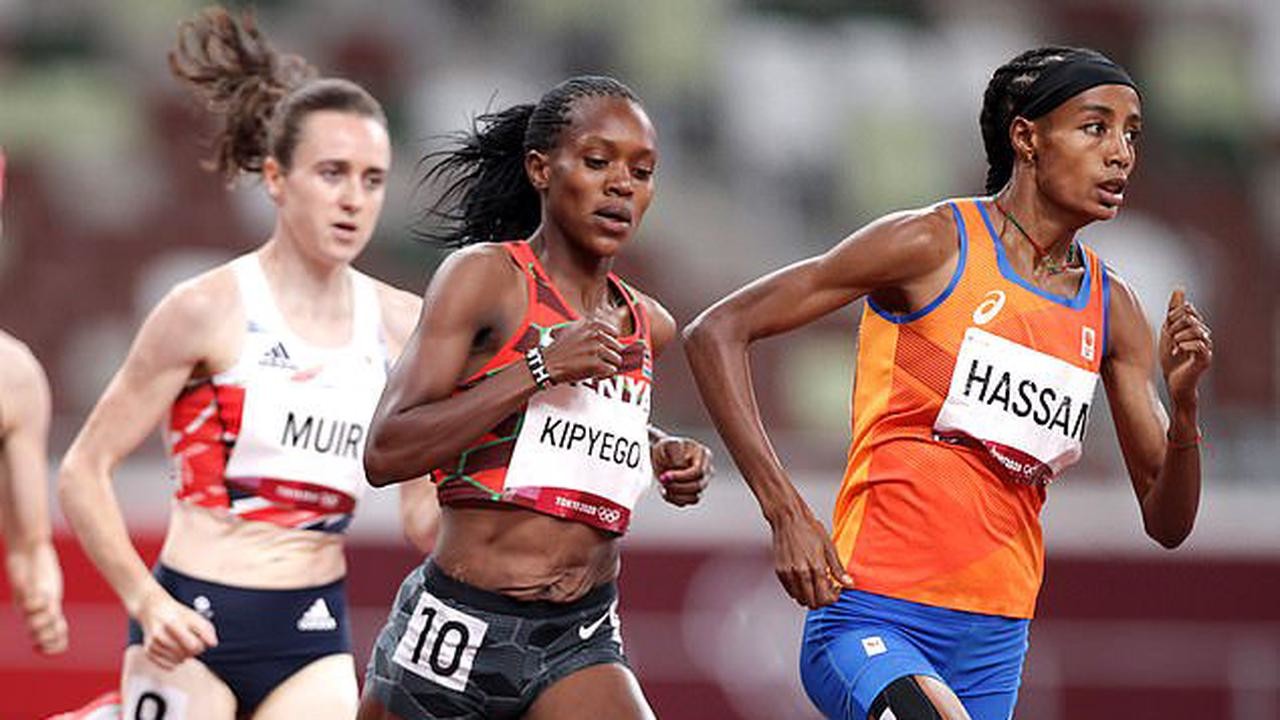
She looked strong coming into the bell lap, but in the last 300m Kipyegon kicked up the pace and DeBues-Stafford began losing touch with the top three runners, ending up in fifth in 3:58.93 behind Ethiopia’s Freweyni Gebreezibeher, a 20-place improvement from her Olympic debut.
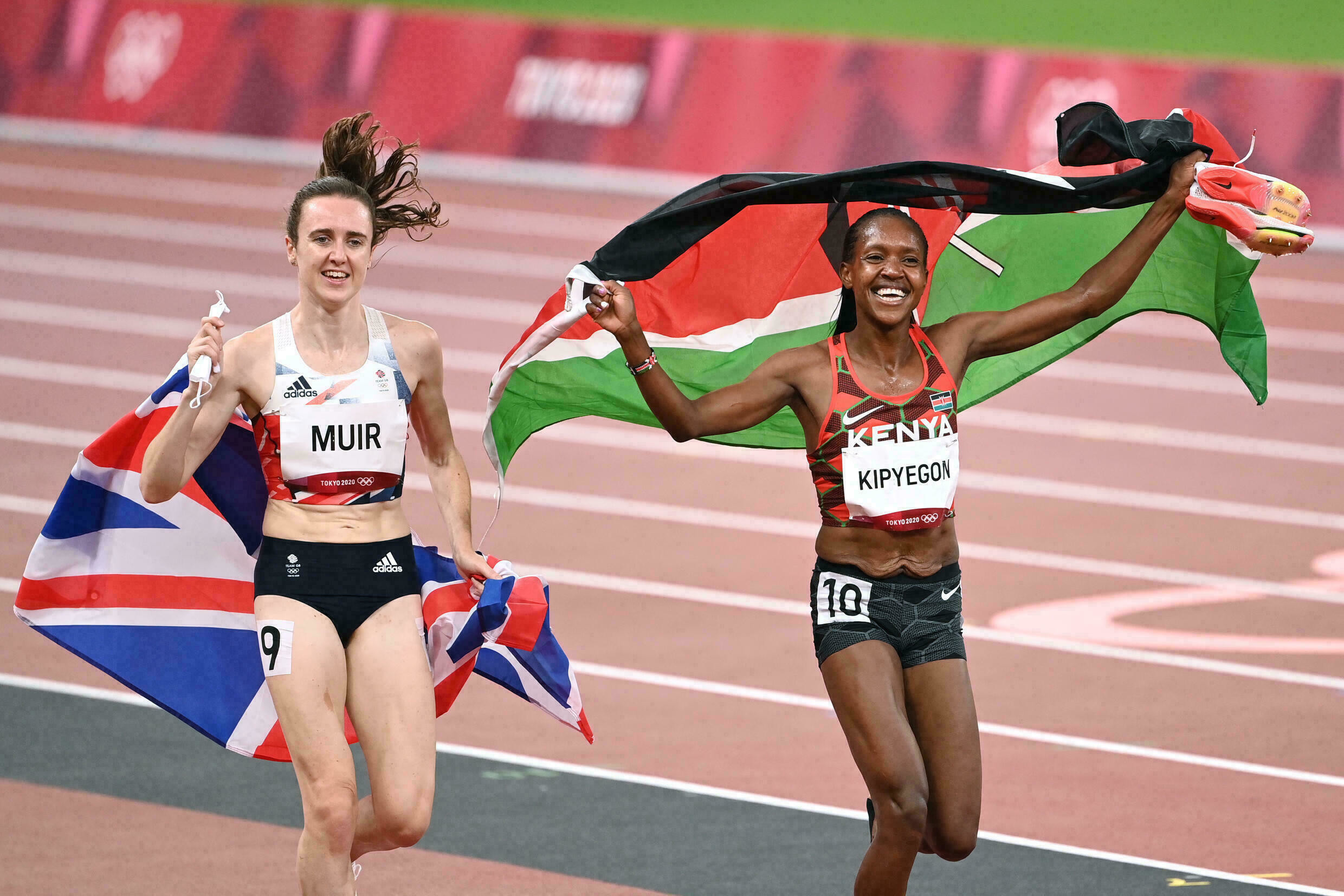
While everyone was expecting the fight for gold to be between Kipyegon and Hassan, it was Muir who was the (delightful) surprise of the night. The U.K. runner ran the race of her life, passing Hassan in the final 200m to take the silver medal in a new personal best and national record.
Hassan’s third-place finish means she will not accomplish the unprecedented 1,500m, 5,000m and 10,000m triple crown, but she still has a chance of winning three medals of different colours, with the 10,000m final taking place on Saturday.
(08/06/2021) ⚡AMPby Brittany Hambleton
World record holder Joshua Cheptegei wins 5000m gold for Uganda
Joshua Cheptegei added the Olympic 5000m title to his world record in a race which was just short of achieving a Games best time.
The Ugandan was forced to settle for silver in the 10,000m, but made amends by winning the shorter distance in 12:58.15, less than half a second slower than the Olympic record set by Kenenisa Bekele in 2008.

Cheptegei finished ahead of Canada's Mohammad Ahmed and American Paul Chelimo to succeed Mo Farah as champion.
Britain's Andy Butchart fell off the leading pack with around 1000m to go, finishing 11th.
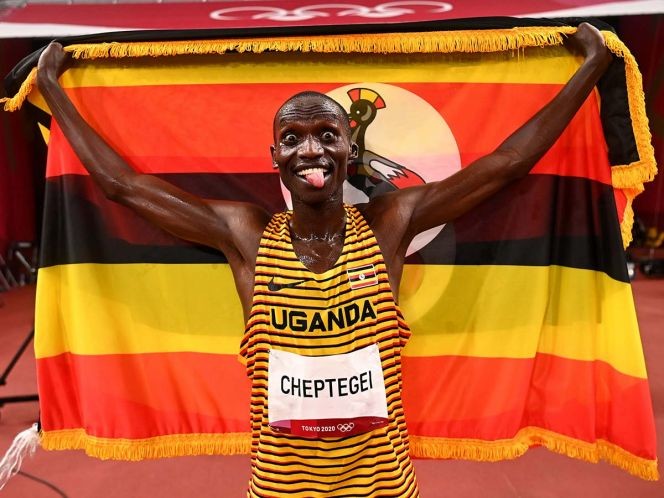
Cheptegei, who revealed he had been struggling with a heel injury heading into the Games, made sure he was near the front of the field right from the start.
But he will be thankful to his team-mate Jacob Kiplimo, who did much of the heavy lifting early on, setting a pace which always looked like it would dip below 13 minutes.
It was easily the quickest 5000m Olympic final since Bekele’s victory in Beijing 13 years ago, and Cheptegei looked to ease to victory when he took full control on the final lap. Ahmed finished well, but never appeared likely to overhaul his rival.
The victory makes the Ugandan, whose world record stands at 12:35.36, an Olympic and world champion, adding to his 10,000m win at Doha 2019
(08/06/2021) ⚡AMPby Richard Newman
Tokyo 2020 Olympic Games
Fifty-six years after having organized the Olympic Games, the Japanese capital will be hosting a Summer edition for the second time, originally scheduled from July 24 to August 9, 2020, the games were postponed due to coronavirus outbreak, the postponed Tokyo Olympics will be held from July 23 to August 8 in 2021, according to the International Olympic Committee decision. ...
more...Dina Asher-Smith back to help 4x100m relay team set new British record at Tokyo Olympics
After tears and torment, Dina Asher-Smith could yet leave Tokyo with a gold medal after Britain’s 4x100m relay women ran the fastest heat at an Olympics, setting a national record in the process.
With Asha Philip, Imani-Lara Lansiquot and Daryll Neita also producing strong performances the British team crossed the line in 41.55sec – faster than the gold-medal-winning times at all but two editions of the Olympic Games. Asher-Smith, whose Olympic ambitions for the 100m and 200m were knocked off course by a hamstring tear in June, believes more is to come from her and the team.

“After the 100m I did say there was no way I wasn’t going to be here for the 4x100m girls,” she said. “I only had one day off then my coach, John Blackie, had me back on the training track. Essentially, all I need is a few more weeks and sessions.
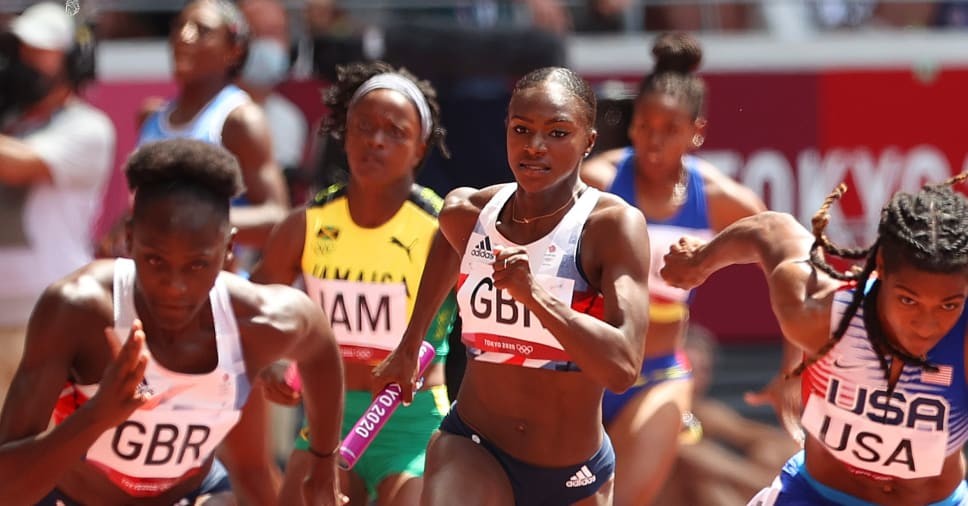
“He was saying if I had a few more days it would have been the 100m final, another week and it would have been 10.8. It’s one of those things where I’m chasing times. Give me a few more training sessions and I’ll be closer to where I’m used to being. There was no way I wasn’t going to be here.“But it is about me getting back on the training track and making sure I bring my absolute A game to this race.
“It would mean incredible things to everybody. We are the bronze medalists in Rio. It would be amazing for us to get another medal again, for all of us, for all of our lives, for all of our individual dreams and aspirations.”
Britain’s men also offered a glimmer of hope in what has been a disappointing Olympics in track and field by qualifying in second in their heat behind Jamaica in 38.02. With the US and South Africa bombing out, the men’s team of CJ Ujah, Zharnel Hughes, Richard Kilty, and Nethaneel Mitchell-Blake have set their sights high.
“We want nothing but gold,” said Kilty. “There is more in the tank. Easy, easy, no problem at all. We knew we were going to play it safe there.”
The US Olympic great Carl Lewis said the American team had done everything wrong as they came sixth in their heat in 38.10s.
“The passing system is wrong, athletes running the wrong legs and it was clear that there was no leadership,” said Lewis, who is now a coach at the University of Houston. “It was a total embarrassment, and completely unacceptable for a USA team to look worse than the Association of American University kids I saw.”
(08/05/2021) ⚡AMPTokyo 2020 Olympic Games
Fifty-six years after having organized the Olympic Games, the Japanese capital will be hosting a Summer edition for the second time, originally scheduled from July 24 to August 9, 2020, the games were postponed due to coronavirus outbreak, the postponed Tokyo Olympics will be held from July 23 to August 8 in 2021, according to the International Olympic Committee decision. ...
more...2022 Austin Marathon Will Offer Free, Personalized Finisher Video For All Participants
The 30th annual Ascension Seton Austin Marathon presented by Under Armour will provide a free, personalized finish line video for all participants who cross the finish line on February 20, 2022. This video, valued at $19, is just the beginning of numerous amazing perks being put together to commemorate the anniversary. The commemorative video will be produced by FinisherPix. It’ll include finishers crossing the finish line and commemorative 30th-anniversary designs and footage.
“Runners are ready to create new memories on the streets of Austin and this free video will be a keepsake they’ll be proud to share,” said Stacy Keese, co-owner of High Five Events. “We’re excitedly preparing to celebrate our 30th year of running Austin and building this event into one of the top experiences in the world!”
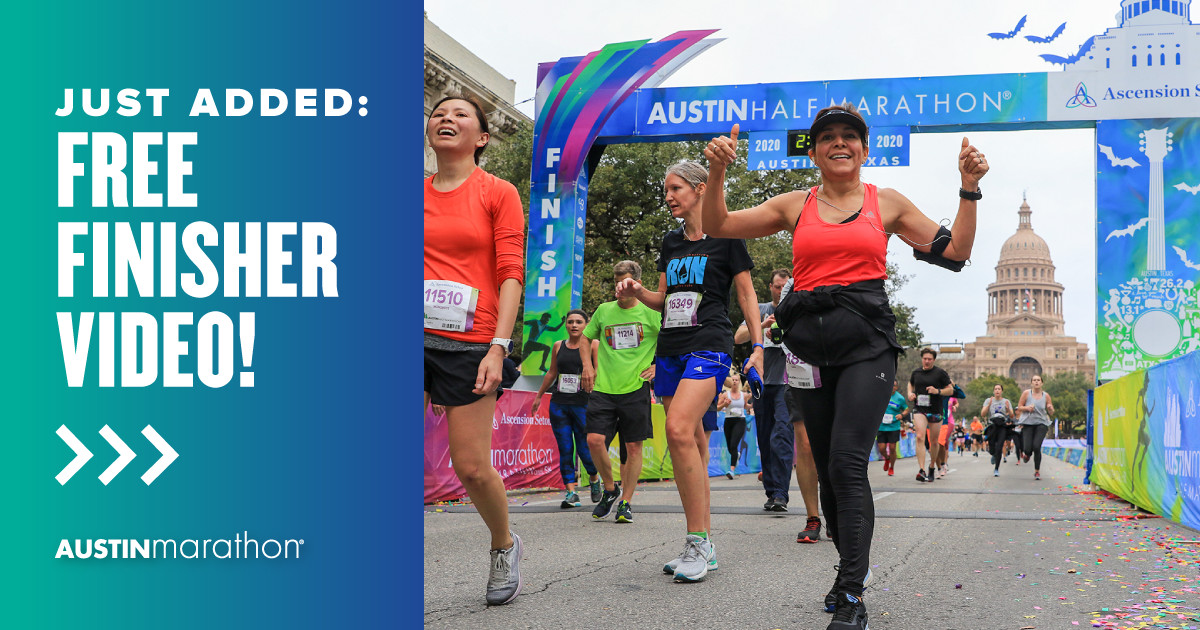
The marathon distance will return for the 2022 Austin Marathon, owned and produced by High Five Events. It was not part of the rescheduled 2021 event based on the COVID-19 Mitigation Plan that allowed running to return to Austin earlier this year. Plans are also underway to bring back many elements that make the Austin Marathon one of the top event experiences in the world. This includes the full expo, expanded beer garden, live music at the finish line, and 3-block-long finish line festival.
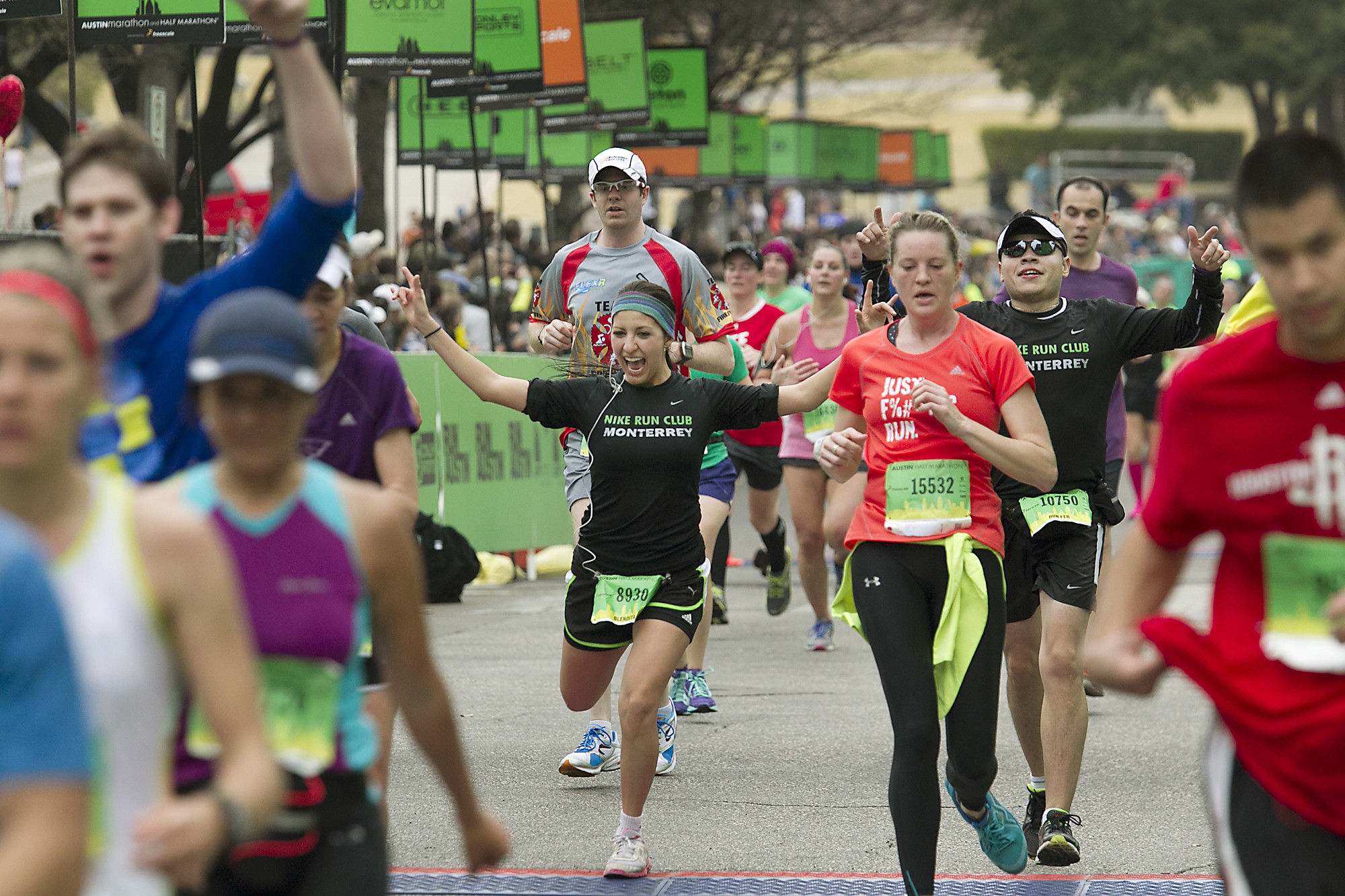
“Austin Marathon is a beloved and well-known event that regularly provides a memorable experience for runners from all over the world,” said Robbie Little, Vice President, Event Services at Outside. “We’re excited to produce this video that we know will be seen by friends and family around the world.”
Austin’s flagship running event annually attracts runners from all 50 states and 35+ countries around the world. The start and finish locations are just a few blocks apart. They are within walking distance of many downtown hotels and restaurants. The finish line is in front of the picturesque Texas State Capitol.
The Austin Marathon is the perfect running weekend destination. Pricing is currently $129 for the marathon, $109 for the half marathon, and $59 for the KXAN Simple Health 5K. Additional FinisherPix photo packages can be purchased at a discounted rate during the registration process.
(08/05/2021) ⚡AMPby Running USA
Austin Marathon Weekend
The premier running event in the City of Austin annually attracts runners from all 50 states and 20+ countries around the world. With a downtown finish and within proximity of many downtown hotels and restaurants, the Austin Marathon is the perfect running weekend destination. Come run the roads of The Live Music Capital of the World where there's live music...
more...Steven Gardiner won Olympic 400m gold to secure the Bahamas' first medal of the Tokyo 2020 Games
Gardiner, the current world champion over the distance, crossed the line in 43.85 seconds.
Colombia's Anthony Zambrano took silver, while 2012 champion Kirani James of Grenada won bronze, completing his full set of Olympic 400m medals, having finished second in Rio.
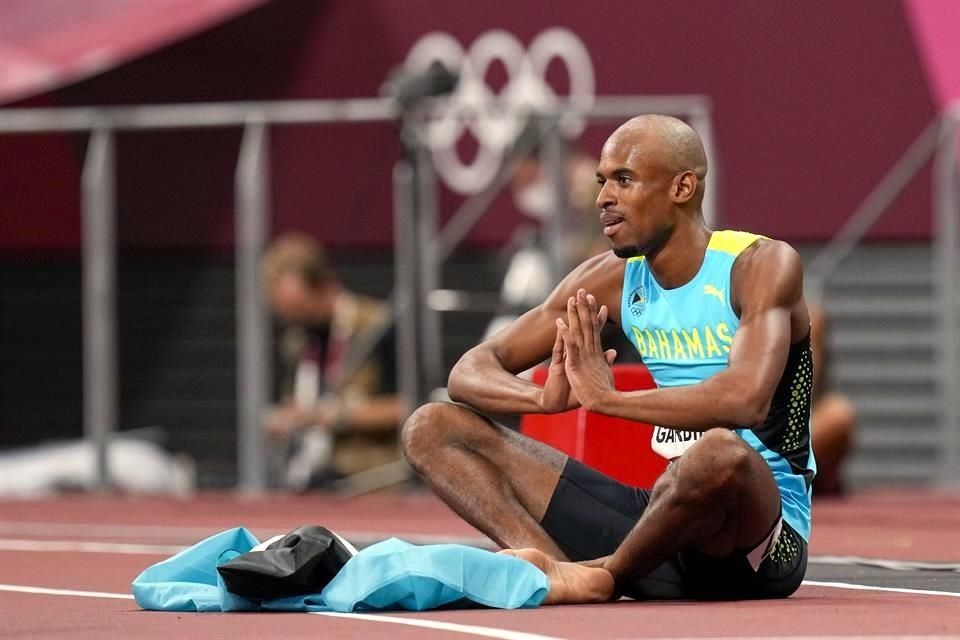
World record holder Wayde van Niekerk's reign as defending champion was over when the South African, who has struggled with injury over the past five years, finished fifth in the semi-finals on Monday.
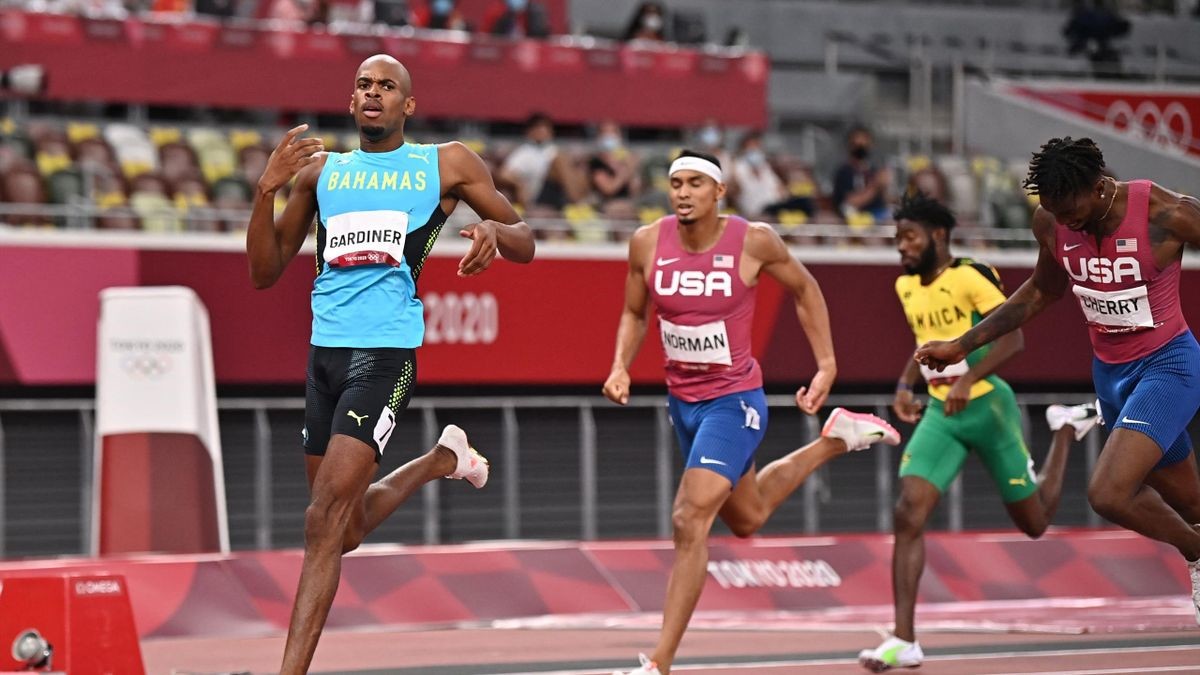
In his absence, Gardiner produced a superbly balanced race, holding back as James and American Michael Norman went out hardest and then reaping the rewards as he stretched clear in the home straight.
"When the gun went off I stumbled a bit coming out but I recovered, I kept it moving, and with 200 meters to go I started to push a little bit. And 100 meters to go, I gave it all I've got," Gardiner said.
"I came across the line and saw my name on the big screen and I was in first place. I'm just happy."
(08/05/2021) ⚡AMPTokyo 2020 Olympic Games
Fifty-six years after having organized the Olympic Games, the Japanese capital will be hosting a Summer edition for the second time, originally scheduled from July 24 to August 9, 2020, the games were postponed due to coronavirus outbreak, the postponed Tokyo Olympics will be held from July 23 to August 8 in 2021, according to the International Olympic Committee decision. ...
more...Canada's Andre de Grasse wins 200-meter gold
Andre de Grasse of Canada has won the Olympic gold medal in the men's 200 meters five years after finishing second to Usain Bolt, ending a string of close calls for the 26-year-old.
De Grasse won in a national-record time of 19.62 seconds, holding off two Americans for the medals.
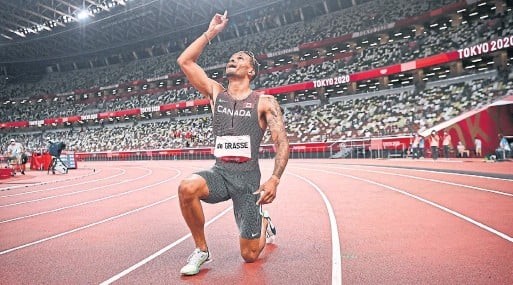
Kenneth Bednarek won silver in a personal-best 19.68 seconds, and 2019 world champion and race favorite Noah Lyles took bronze in 19.74. Erriyon Knighton, the youngest member of the U.S. men's track team at 17, placed fourth in 19.93.

De Grasse has now filled out a medal collection that was missing only a gold. He won bronze four nights earlier in the 100 meters to go with the third-place medal he took in Rio de Janeiro. He also won a silver in the 200 in Rio, when he famously challenged Bolt in the semifinal -- drawing a playful finger wag -- before being blown away by the Jamaican champion in the final.
Given all he has been through, it was no surprise when De Grasse revealed that he had been crying behind the bronze-colored shades he wore for the race.
"It's my first time being so emotional on the track," said De Grasse, the first sprint gold medalist for Canada since Donovan Bailey won the 100 at the 1996 Atlanta Olympics. "I always thought I came up short winning bronze and silver, so it's just good to have that gold medal. No one can take that away from me."
Lyles made a mistake the night before in the semifinals, slowing down too far before the line, getting edged out for the two automatic spots and being forced to wait to see if his time would earn him a qualifying spot.
It cost him in the final. Forced to start in Lane 3, Lyles pushed out too quickly. He had the lead heading into the homestretch but had nothing more to give.
(08/05/2021) ⚡AMPby ESPN News Services
Tokyo 2020 Olympic Games
Fifty-six years after having organized the Olympic Games, the Japanese capital will be hosting a Summer edition for the second time, originally scheduled from July 24 to August 9, 2020, the games were postponed due to coronavirus outbreak, the postponed Tokyo Olympics will be held from July 23 to August 8 in 2021, according to the International Olympic Committee decision. ...
more...American and World Record Holder Keira D’Amato Confirmed For 2021 Credit Union Cherry Blossom Ten Mile
World Record holder Keira D’Amato will be wearing a third hat throughout the upcoming Credit Union Cherry Blossom race weekend — that of race committee member. But her clear focus will be on improving upon the record setting 10-mile time of 51:23 that she ran at the Up Dawg Ten Miler in Washington DC’s Anacostia Park in a women’s only invitational race. The event was organized by the Credit Union Cherry Blossom race committee members last November at a time when mass participation road races had ceased and had been replaced by a tiny number of elite only “micro-events.” Keira’s time was ratified as the American record by USATF last December and as the World Record by the Association of Road Racing Statisticians in July.
On September 12th, D’Amato will be joined on the starting line by many of the best American female distance runners as they race for the 2021 USATF 10 Mile Championships Presented by Toyota. The women will start at 7:18 a.m., while the elite men’s field will be sent off at 7:30 a.m. The early start for women removes any questions of pacing or other assistance by men and qualifies the winner for a single-sex women’s only record. When the U.S. men take off 12 minutes later, they, too, will be in pursuit of the 2021 USATF 10 Mile Championships as well as the men’s American 10 mile record of 45:54 set by Galen Rupp last fall. Rupp’s time bettered the American Record of 46:13 set by Greg Meyer at the 1983 Cherry Blossom. (Updated entries to both the men’s and women’s fields will be provided in mid-August and in the week leading up to the race.)
The prize pool for the 2021 USATF 10 Mile Championships totals $26,000 for men and women. An additional $10,000 bonus will be awarded if a man or woman breaks the American Records of sub-45:54 and sub-51:23 respectively (the bonus will be split if both the first American man and first American woman break the record). International elite runners will be part of the field competing for an additional $20,000 in prize money, and American runners can double-dip on American and International prize money if they finish in the top-10 overall. Should a World Record be set, there will be an additional $10,000 bonus paid (split if both the winning male and female break the record).
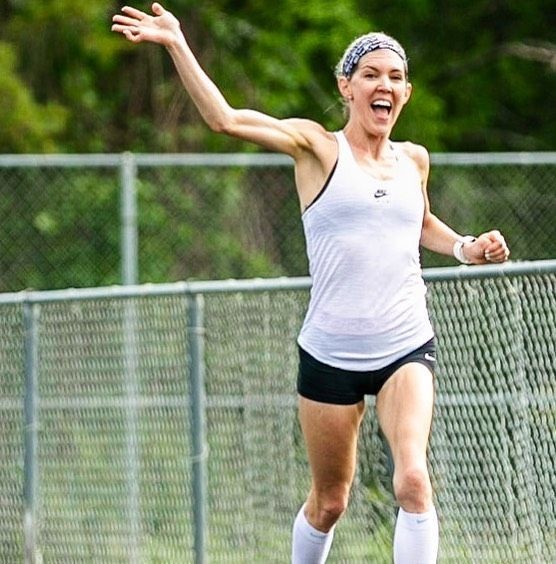
In other news, race organizers have confirmed that Metro will be providing the event with a special dispensation by opening at 5:00 a.m. on race day, three hours earlier than the usual Sunday morning opening time. This will make taking Metro to the event possible (riders will be required to pay the usual travel costs).
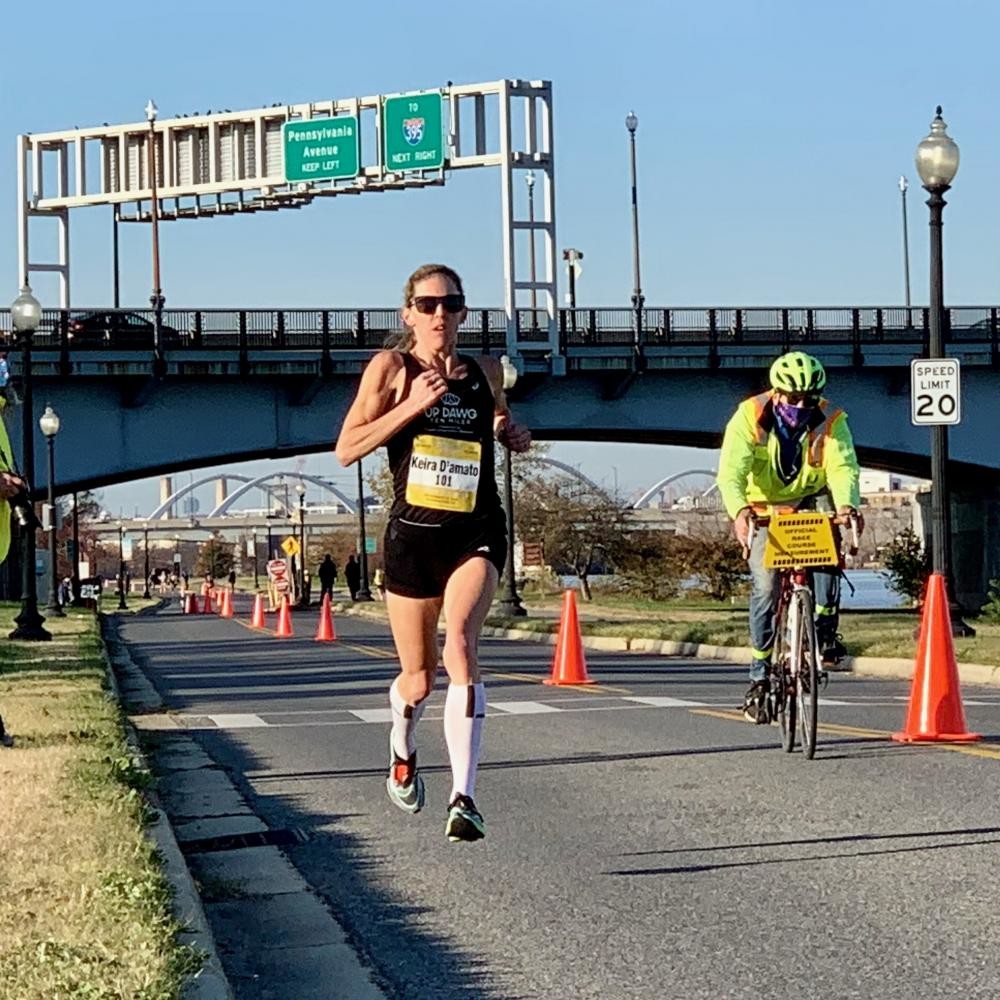
“Metro has truly provided a gift to all our runners and volunteers by initiating Sunday operations at 5 a.m., making it the best way to travel to and from the staging area on the Washington Monument Grounds,” said event director Phil Stewart. “We greatly appreciate Metro’s support to the DC-area community as everyone emerges from the pandemic. Metro has truly opened doors and made our lives better.”
Finally, registration for the 2021 Credit Union Cherry Blossom Ten Mile and 5K Run-Walk will close on August 15th.
The 2021 Credit Union Cherry Blossom Runs mark the 20th year of title sponsorship by Credit Union Miracle Day. Since 2002, over $10 million has been raised for the Children’s Miracle Network Hospitals, including $439,000 in 2020. Of that $439,000, $66,000 came from runners donating their entry fees instead of asking for a refund when race weekend in our Nation’s Capital was wiped out by Covid-19.
About the Credit Union Cherry Blossom Ten Mile:
The Credit Union Cherry Blossom Ten Mile, organized by Cherry Blossom, Inc., a 501c(3) chapter of the Road Runners Club of America, is known as “The Runner’s Rite of Spring®” in the Nation’s Capital. The staging area for the event is on the Washington Monument Grounds, and the course passes in sight of all of the major Washington, DC Memorials. The event serves as a fundraiser for the Children’s Miracle Network Hospitals, a consortium of 170 premier children’s hospitals across North America. About one-third of the funds raised support Washington, DC’s own Children’s National (“Children’s Hospital”). The event also funds the Road Runners Club of America’s “Roads Scholar” program, designed to support up-and-coming U.S. distance running talent.
Credit Union Miracle Day, Inc., a consortium of credit unions and credit union suppliers in partnership with CUNA Mutual Group, PCSU and CO-OP Financial Services, is the title sponsor of the Credit Union Cherry Blossom Ten Mile Run, 5K Run-Walk and Kids’ Run. Additional sponsorship comes from ASICS, Garmin Gatorade, Medstar Health and Potomac River Running.
The event is a proud member of the PRRO Circuit (PRRO.org), a series of major non-marathon prize money road races in Tampa, FL; Washington, DC; Spokane, WA; and Utica, NY. The circuit is committed to a drug-free sport and funds drug testing at all circuit events in compliance with the standards of international and U.S. drug testing authorities.
In addition to being sanctioned by USA Track & Field and the Road Runners Club of America, the Credit Union Cherry Blossom Run has earned Gold Level Inspire Certification from the Council for Responsible Sport in recognition of its legacy of commitment to sustainability and thoughtful resource management. To learn more, visit www.cherryblossom.org and follow the event on social media @CUCB and #CUCB2021.
(08/04/2021) ⚡AMPby Running USA
Cherry Blossom Ten Mile Run
The Credit Union Cherry Blossom is known as "The Runner's Rite of Spring" in the Nation's Capital. The staging area for the event is on the Washington Monument Grounds, and the course passes in sight of all of the major Washington, DC Memorials. The event serves as a fundraiser for the Children's Miracle Network Hospitals, a consortium of 170 premier...
more...Molly Seidel will Run the Falmouth Road Race for Charity Tommy's Place
Organizers of the 49th annual ASICS Falmouth Road Race, one of America’s premier running events of the summer season, today announced that on the heels of her competition in Tokyo, U.S. Olympic marathon runner, Molly Seidel, will travel to Cape Cod to participate in this year’s race.
As part of her participation, Seidel will be the official race starter and then join the field as the very last runner. For every runner that she passes along the 7-mile course, Falmouth Road Race, Inc. will donate $1 to Tommy’s Place, a vacation home in Falmouth for kids fighting cancer.
The 2021 Olympic marathoner will run the ASICS Falmouth Road Race alongside her sister, Isabel, as a post-Olympic celebration.
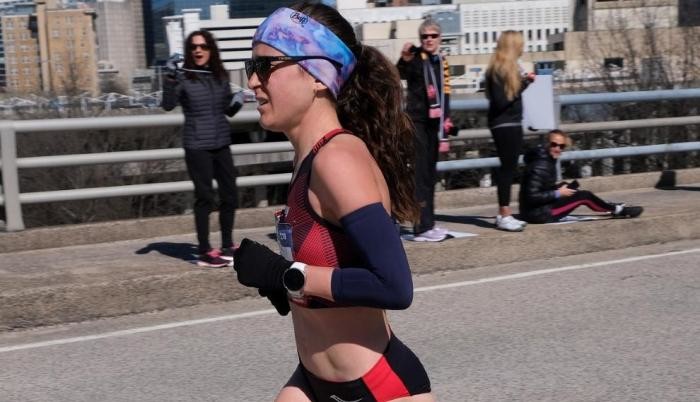
“We are very excited to have Molly Seidel join us in person for the 49th running of the ASICS Falmouth Road Race,” said Scott Ghelfi, president of the Falmouth Road Race, Inc. Board of Directors. “Over the years, we have been very fortunate to welcome so many accomplished runners to our race. We are honored that Molly has chosen to join us as part of her post-Olympic plans, while agreeing to start the race last to raise money for Tommy’s Place, named after our race founder, Tommy Leonard, to honor his legacy. It really doesn’t get much better than that. We wish her the best of luck in Tokyo and look forward to cheering her on during the women’s marathon on August 6 and to personally welcoming her to Falmouth for what we believe will be another incredible road race.”
Seidel’s running career accomplishments include:
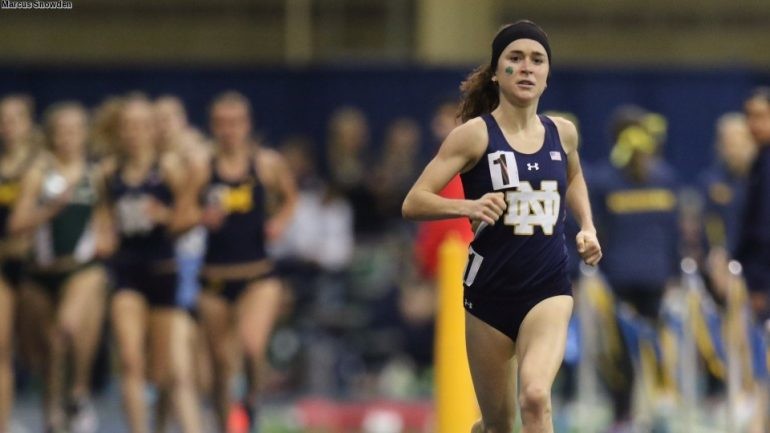
2020 U.S. Olympic Team Trials Marathon, 2nd
2019 Cape Cod Marathon “Half,” 1st
2018 USATF Cross Country Championships, 2nd
2018 USATF Road Running Championships 15K, 3rd
2017 USATF Road Running Championships 5K, 2nd
2016 NCAA Indoor Championships, 3000m, 1st
2016 NCAA Indoor Championships 5000m, 1st
2015 NCAA Outdoor Championships 10,000m, 1st
The in-person running of the 49th annual ASICS Falmouth Road Race will take place on Sunday, August 15, 2021. In addition to this year’s in-person event, the 49th ASICS Falmouth Road Race will feature a virtual SBLI Kids At-Home Challenge and the race’s At-Home Edition, where participants will lace up their running shoes and go 7 miles in their own neighborhoods between August 7 – 14.
For nearly 50 years, Falmouth Road Race, Inc. has promoted health, wellness and pride in the community. In these unprecedented and uncertain times, the organization is striving to be consistent in its mission, continuing to provide its dedicated athletes, enthusiasts, and the community with an event to be proud of and one that supports people in need.
For more information on the ASICS Falmouth Road Race, please visit www.falmouthroadrace.com
(08/04/2021) ⚡AMPby Running USA
Falmouth Road Race
The Falmouth Road Race was established in 1973 and has become one of the premier running events of the summer season. Each year the race draws an international field of Olympians, elite runners and recreational runners out to enjoy the scenic 7-mile seaside course. The non-profit Falmouth Road Race organization is dedicated to promoting health and fitness for all in...
more...USA's Sydney McLaughlin breaks world record at Tokyo
Sydney McLaughlin broke her world record Wednesday and won the Olympic 400-meter hurdles gold, finishing in 51.46 seconds in yet another close victory over U.S. teammate Dalilah Muhammad.
McLaughlin came from behind after the last hurdle to top the defending Olympic champion. Muhammad's time of of 51.58 also beat McLaughlin's old record of 51.9, set at Olympic trials last month.
Femke Bol of the Netherlands finished third.
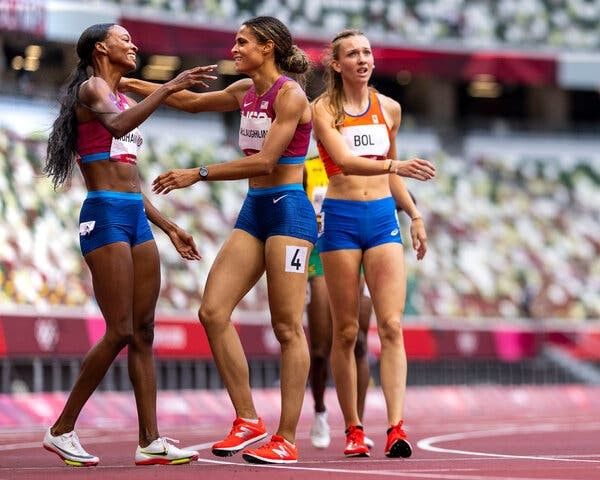
For McLaughlin, it was a muted celebration. She sat on the ground, gave a serious look toward the scoreboard, got up and sanitized her hands, then accepted a congratulatory hug from Muhammad.
Amazing as it was, this world record didn't really surprise anyone.
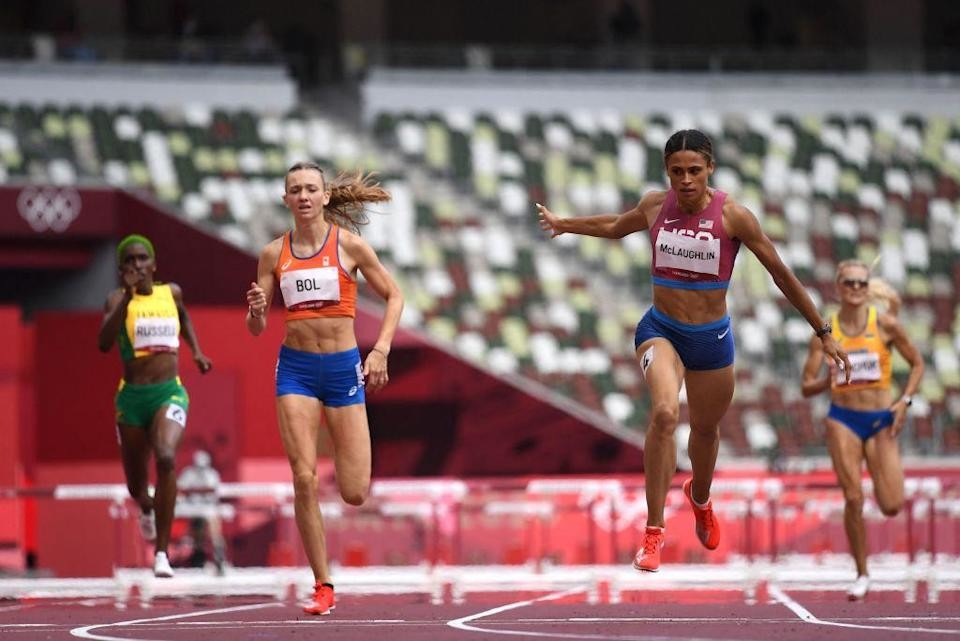
McLaughlin and Muhammad have been trading the record, and the wins, for two years. Muhammad first broke the mark at U.S. Nationals in 2019, then lowered it again. to 52.16, at the world championships in Doha.
McLaughlin broke that record earlier this summer at Olympic trials, running her 51.90 to become the first woman to crack 52 seconds.
It felt inevitable that the mark would go down again on a fast track in perfect, hot-and-humid running conditions in Tokyo.
The day before, Karsten Warholm crushed his old world record, finishing the men’s race in 45.94, and runner-up Rai Benjamin’s 46.17 also beat the old mark.
It was a lot to live up to for the women, whose race was even more eagerly anticipated. They lived up to the hype.
(08/04/2021) ⚡AMPby Associated Press
Tokyo 2020 Olympic Games
Fifty-six years after having organized the Olympic Games, the Japanese capital will be hosting a Summer edition for the second time, originally scheduled from July 24 to August 9, 2020, the games were postponed due to coronavirus outbreak, the postponed Tokyo Olympics will be held from July 23 to August 8 in 2021, according to the International Olympic Committee decision. ...
more...Peruth Chemutai became the first Ugandan woman to win an Olympic gold medal in any sport when she triumphed in the women's 3,000m steeplechase on Wednesday
The 22-year-old clocked a time of 9:01.45 to finish over three seconds ahead of American silver medalist Courtney Frerichs with Kenya's Hyvin Kiyeng taking the bronze.
"I'm so happy and proud of myself. It was a good race - I enjoyed myself and I enjoyed the weather," Chemutai said, referring to the heat in Tokyo.
Chemutai's triumph was only the third Olympic gold won by Uganda in any sport -- after John Akii-Bua's 400m hurdles win in 1972 and Stephen Kiprotich's victory in the 2012 marathon.
She moved in front early in the race before Frerichs took the initiative with three laps to go, pulling away from the field.
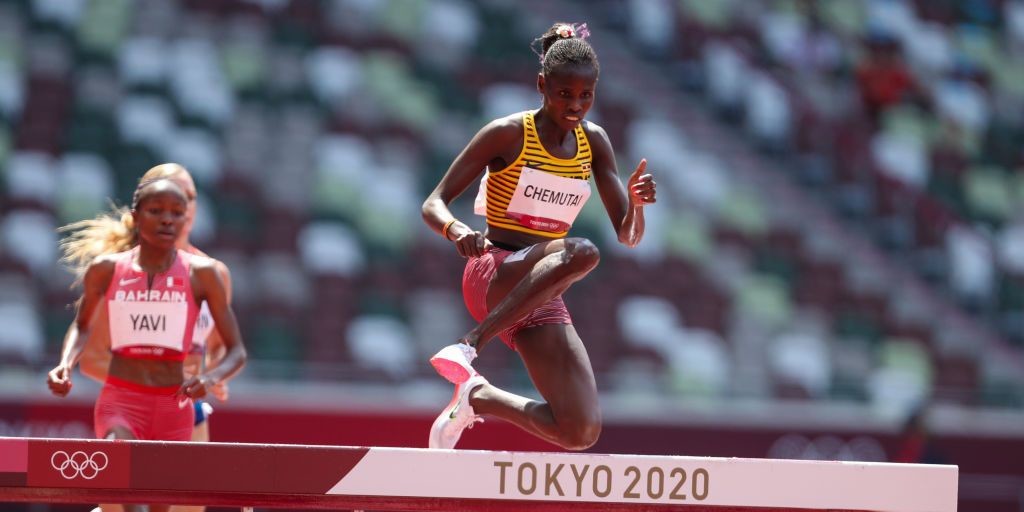
But Chemutai responded to the challenge and overtook the American on the last lap before crossing the line 3.34 seconds ahead of her.
Frerichs became the second American woman to win an Olympic steeplechase medal after Emma Coburn, who claimed bronze in Rio in 2016.
Coburn fell with two laps left and finished 14th before being disqualified but her team mate Frerichs was delighted with her silver after nearly missing the Games due to illness.
"I was prepared to have to take it early and make it a hard race. It's really difficult to put yourself out there like that and I definitely had some fear to overcome but I knew I'd walk away with no regrets if I really laid it all out there," she said.
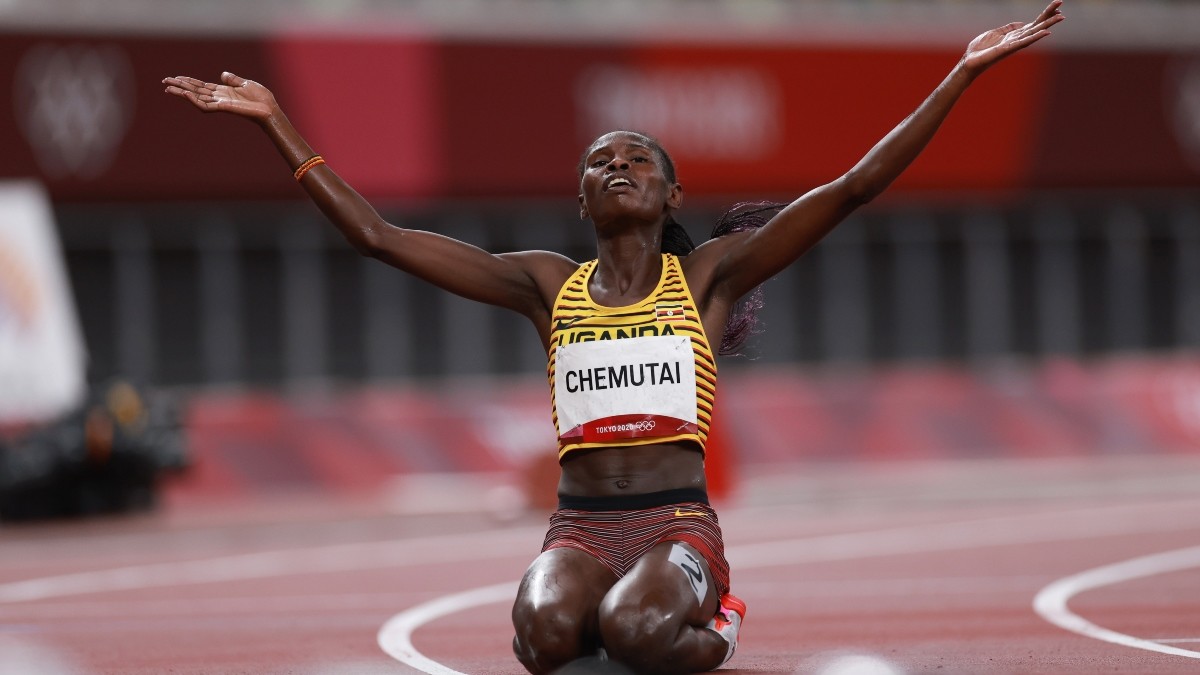
Kenyan world record holder Beatrice Chepkoech finished seventh, leaving her country still without a gold medal in the women's event.
Kenyans have dominated the Olympic men's 3,000m steeplechase, winning nine gold medals in a row before losing their crown to Moroccan Soufiane El Bakkali in Tokyo.
Chepkoech said she was far from at her best physically.
"I have an injury and it was so tight. I didn't even react, it's painful," she said.
"My aim was to win the race, but because of the injury, my mind was not here. It was so painful.
"I have problems with two tendons and a hamstring, low back and the stomach. I got injured before our trials in Kenya and it has been so tight since, I tried to nurse it, but it couldn't respond," she added.
Bronze medalist Kiyeng had won silver in Rio.
(08/04/2021) ⚡AMPby Ed Osmong
Tokyo 2020 Olympic Games
Fifty-six years after having organized the Olympic Games, the Japanese capital will be hosting a Summer edition for the second time, originally scheduled from July 24 to August 9, 2020, the games were postponed due to coronavirus outbreak, the postponed Tokyo Olympics will be held from July 23 to August 8 in 2021, according to the International Olympic Committee decision. ...
more...17-years old, Erriyon Knighton just became the youngest ever man to qualify for the 200m final at the Olympics
What’s more, the American stormed his heat, cruising to victory and inspiring hopes of a medal on Wednesday.
Having registered 19.84 in June, the teenager is officially the fourth-fastest man in the field, making a place on the podium a genuine possibility.
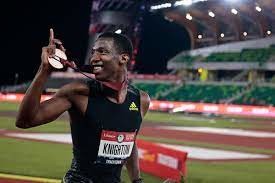
Bolt’s legendary world record time of 19.19 is probably safe at these Games – but for how much longer?
The Jamaican, who won an astonishing eight gold medals over three Olympics, has already seen one of his many records broken by Knighton.
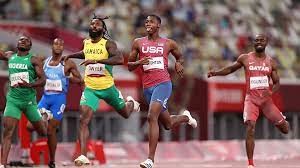
Earlier this year, the American ran 19.88 in the Olympic trials, setting a new junior world record for an Under-18 – which he has since broken himself.
The previous mark had stood for 17 years, set by a 17-year-old Bolt in 2004, which means we can loosely say that Knighton is faster than the Jamaican was at this age.
Moreover, Knighton was barely trying as he crossed the line at the trials, begging the question of what the American might be capable of if he sprints through the finish.
And if it’s not this year, many expect the youngster to step into the big shoes of Bolt one day in the future.
Knighton certainly has the personality to match the larger-than-life character that went alongside the Jamaican’s incredible achievements on the track.
Don’t forget, Bolt was 21 when he arrived at Beijing 2008 – and Knighton is already ahead of that iconic curve.
(08/03/2021) ⚡AMPby Sean O´Brien
Tokyo 2020 Olympic Games
Fifty-six years after having organized the Olympic Games, the Japanese capital will be hosting a Summer edition for the second time, originally scheduled from July 24 to August 9, 2020, the games were postponed due to coronavirus outbreak, the postponed Tokyo Olympics will be held from July 23 to August 8 in 2021, according to the International Olympic Committee decision. ...
more...The wild and crazy men’s1500m at Tokyo Olympics
In heat one Belgium’s Ismael Debjani won to be fastest overall in 3:36.00 with a 53.4 last lap, just ahead of world champion Timothy Cheruiyot (3:36.01), Oliver Hoare (3:36.09), US trials winner Cole Hocker (3:36.16), Abdelatif Sadiki (3:36.23) and Michal Rozmys (3:36.28) who qualified automatically.
Rozmys had been six tenths of a second behind Kerr as he hit the straight but ran a 12.9 last 100m to the Scot’s 13.5 to catch him on the line, meaning the British champion missed out on automatic qualification by one hundredth of a second as he struggled in the closing stages.
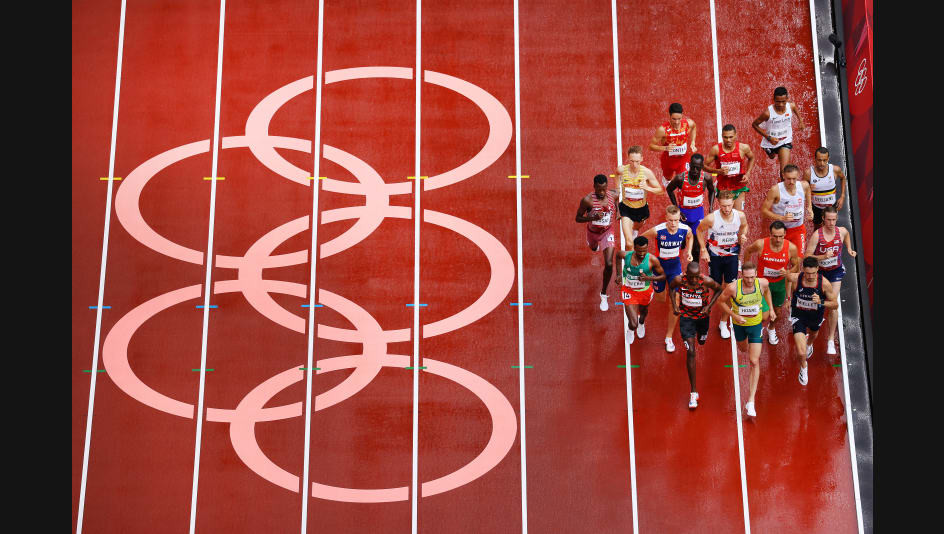
Kerr said: “I was really frustrated with my positioning and there was some shoving and I made a hard move at 500m to go. Then, at 200m to go, I felt I was going to pay for this in the home stretch. I was just trying to stay focused and push all the way, but it just wasn’t a good run for me. I am fit and ready and I have had no problems. There are just no excuses for that. I just raced it badly.”
Kerr must have been relieved as heat two was run at nowhere near the same pace. The field ambled through 400m in 62.4 and 800m in 2:02.9, only really coming to life on the last lap as Kenyan Abel Kipsang covered it in 52.8 to win in 3:40.68.
Second was defending champion Matt Centrowitz (3:41.12), just ahead of Wightman (3:41.18) who ran his last 400m in 53.2 and 200m in 26.3. Also qualifying easily were Azeddine Habz (3:41.24), Samuel Zeleke (3:41.63) and Charles Grethen (3:41.92).
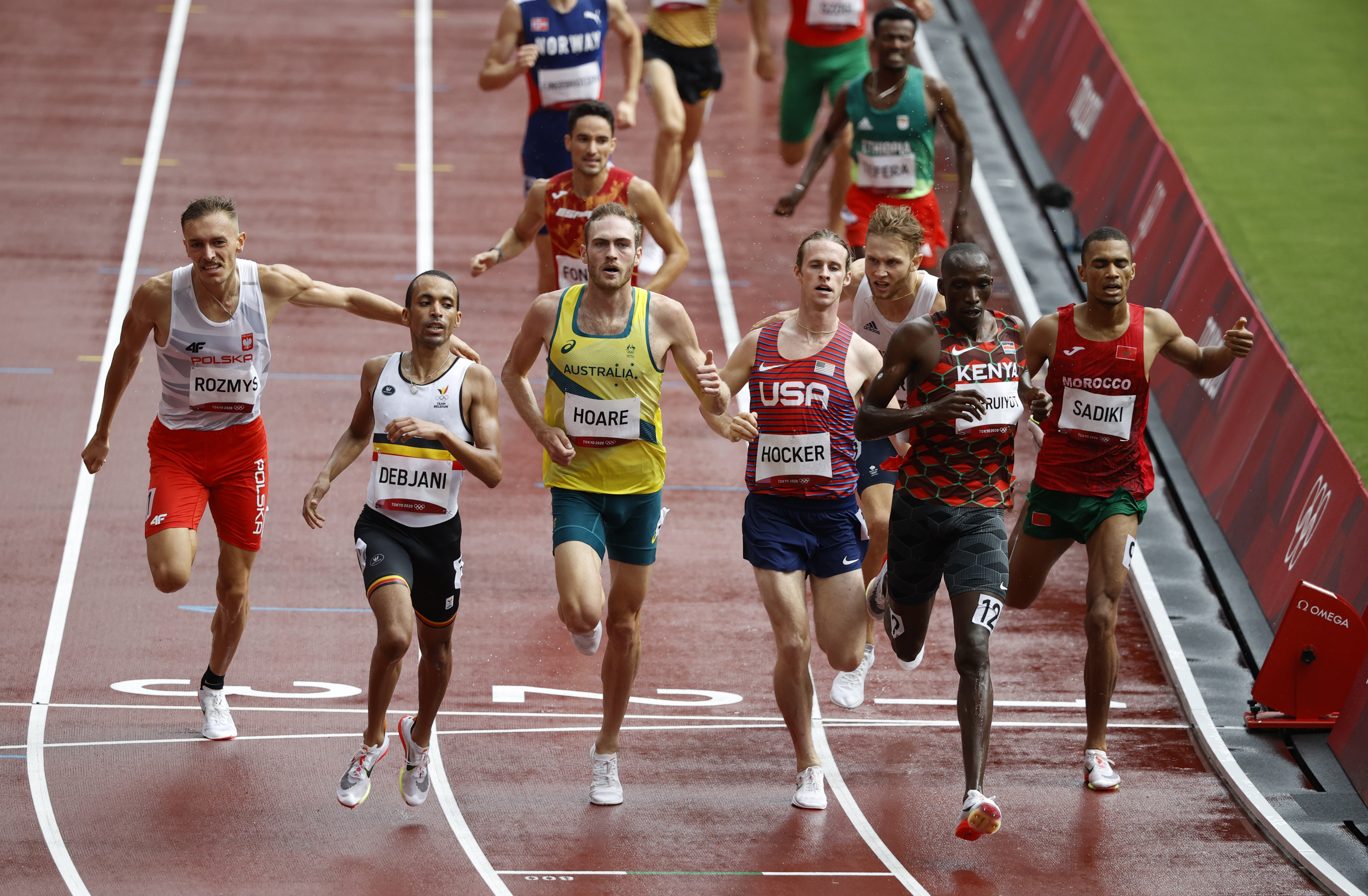
Marcin Lewandowski fell on the last lap and he jogged home but was added to the qualifiers by the judges after the event.
Wightman said: “It’s the most nerve-racking round, isn’t it? You’re worried you’re going to be embarrassed. I’m glad I managed to stay on my feet and get through. I had a smooth enough ride. I think I got a spike wound, had a few pushes but there was the fall which I’m glad I didn’t even notice until the end.
“The heats are the worst, because you’ve come all this way and no-one wants to get knocked out in the heat or expects to get knocked out in the heat, so you just want to get past and know how you are running to get through to the semi-final.”
The third heat was faster but, with six fastest loser spots, it did mean there would have to be 12 quicker than 3:36.29 for Kerr to exit and, in the end, there were only two.
The first lap was a slow 61.7 before Stewart McSweyn kicked on. The Australian completed the second lap in a lively 56.9 and the third in a top class 55.1, with only Heyward still in contact as the pair went through 1200m in 2:53.7 and 2:53.9, holding a big gap over the pack led by Robert Farken in 2:55.1.
Heyward passed McSweyn in the straight and won clearly in 3:36.14, having eased around his last lap in 55.9 and covered his last 1200m inside 2:50. Ethiopia’s Tedesse Lemi, who had been 12th at the bell, ran a 53.9 last lap to finish second in 3:36.26 and he had covered his last 1200m in 2:48.9.
McSweyn (3:36.39), Jakob Ingebrigtsen (an anonymous 3:36.49), Farken (3:36.71) and Adel Mechaal (3:36.74) completed the automatic qualifiers.
Double Olympic medallist Nick Willis (3:36.88), Andrew Coscoran (3:37.11), Ayanleh Souleiman (3:37.25) and Kenyan trials winner Charles Simotwo (3:37.26) qualified by time as they joined Kerr and Ignacio Fontes (3:36.95) as fastest losers.
Soufiane El Bakkali, who won the 3000m steeplechase title the previous day, was in contention until 200m to go but pulled out.
Heyward said: “I don’t think it could have gone much better. Safely through, that’s the main thing. You have to have a few scenarios, you have to be versatile. It could be fast, could be slow, so you’ve got to be ready for that. I think I always give my best performances in championships and I hope that showed a glimpse of what I can do.
“You can’t take anything for granted at the Olympics, you’ve got to be prepared for anything, and I was prepared to run super hard today, so that was my mindset going in. Luckily because I didn’t have to run that hard it felt quite comfortable, so it was good.”
(08/03/2021) ⚡AMPby Athletics Weekly
Tokyo 2020 Olympic Games
Fifty-six years after having organized the Olympic Games, the Japanese capital will be hosting a Summer edition for the second time, originally scheduled from July 24 to August 9, 2020, the games were postponed due to coronavirus outbreak, the postponed Tokyo Olympics will be held from July 23 to August 8 in 2021, according to the International Olympic Committee decision. ...
more...BAA will Highlight Indigenous Runners At This Year's Marathon
The Boston Athletic Association says it will celebrate Native Americans during this year's Boston Marathon, which is being held on Indigenous People's Day.
The announcement comes after members of Brookline's Select Board criticized the BAA for scheduling the race on the holiday, also known as Columbus Day.

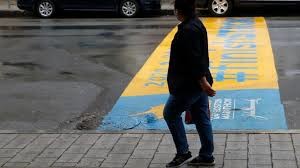
The BAA said in a statement that it will highlight indigenous people who have participated in past marathons and that it will work with Indigenous peoples' committees along the marathon route.
"As our planning to organize the road race progresses, we look forward to a continuing collaboration with many — including Indigenous Peoples groups — to best highlight the unique characteristics of this year’s October marathon," the BAA said.
(08/03/2021) ⚡AMPby Sara-Rose Brenner
Boston Marathon
Among the nation’s oldest athletic clubs, the B.A.A. was established in 1887, and, in 1896, more than half of the U.S. Olympic Team at the first modern games was composed of B.A.A. club members. The Olympic Games provided the inspiration for the first Boston Marathon, which culminated the B.A.A. Games on April 19, 1897. John J. McDermott emerged from a...
more...Athing Mu wins gold for U.S. in women’s 800 meters
Athing Mu solidified herself as one of America’s brightest stars, winning gold in the Women’s 800 final on Tuesday.
Mu crossed the finish line in 1:55.21 seconds to capture the title. American Raevyn Rogers took bronze with a time of 1:56.81 Great Britain's Keely Hodgkinson took the silver medal with a time of 1:55.88.
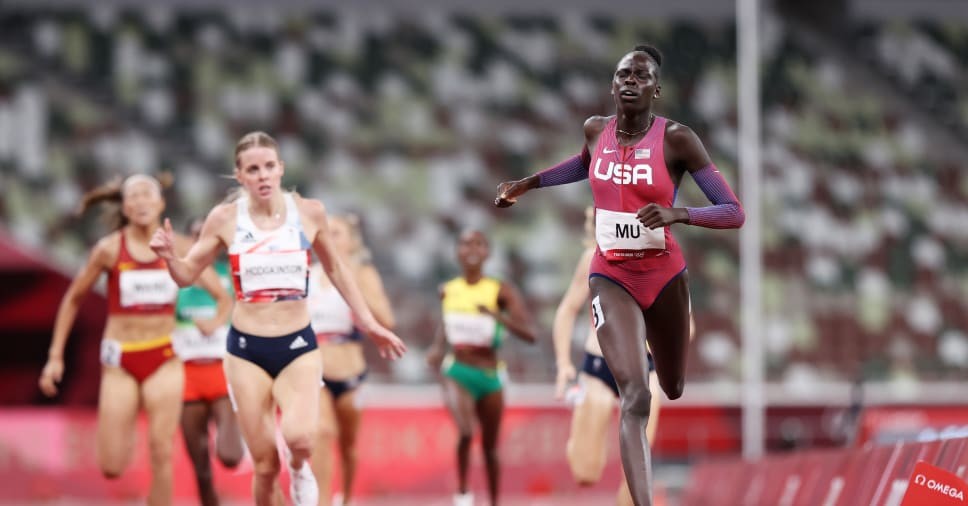
The 19-year-old Trenton, N.J. native whose parents came to the U.S. from Sudan, became the youngest American woman to win an individual Olympic track and field gold medal since Wyomia Tyus in the 100m at the 1964 Tokyo Olympics.
Mu dominated the competition from the moment she stepped on the track in Tokyo. Mu posted a time of 2:01.10 in Round 1 and 1:58.07 in the semifinal, finishing first in both heats.
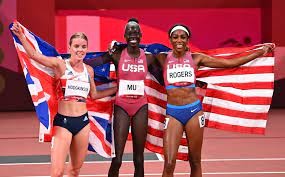
She entered Tokyo as the gold medal favorite and set multiple collegiate indoor and outdoor records in the 800m, 400m and 4x400m relay as a freshman at Texas A&M and turned pro shortly before the Olympic trials in June.
Mu will now have her name written in the history books forever as an Olympic champion.
(08/03/2021) ⚡AMPby James Belt
Tokyo 2020 Olympic Games
Fifty-six years after having organized the Olympic Games, the Japanese capital will be hosting a Summer edition for the second time, originally scheduled from July 24 to August 9, 2020, the games were postponed due to coronavirus outbreak, the postponed Tokyo Olympics will be held from July 23 to August 8 in 2021, according to the International Olympic Committee decision. ...
more...Norway´s Karsten Warholm breaks the 400m hurdles world record at the Tokyo Olympic Games
Nearly two and a half hours have passed since Karsten Warholm blasted across the finish line of the Olympic 400m hurdles final and the sporting world is still trying to grasp what it had witnessed at Tokyo's National Stadium on Tuesday (3) afternoon.
Thirty-three days ago, the Norwegian broke the world record in the event which had stood for nearly 29 years, clocking 46.70. This morning he won the most anticipated face-off of the 2020 Olympic Games by obliterating that mark with an unfathomable 45.94* performance to rip another 0.76 from his own world record.
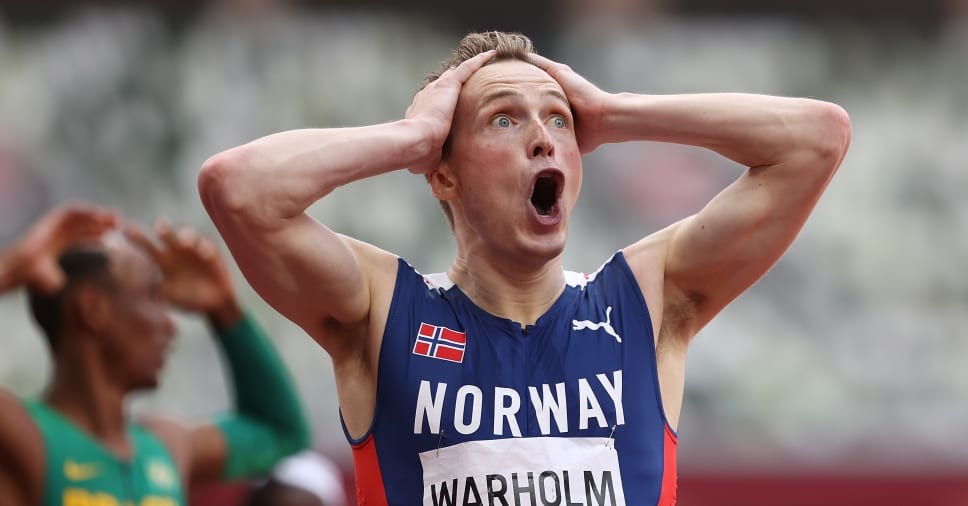
Adequate superlatives don't yet exist to describe the magnitude of what the 25-year-old has just accomplished – world records over one lap of the track simply don't get smashed by the margin that Warholm managed to concoct this morning. For now, calling this the finest race in athletics history will have to suffice.
Indeed, all the more astounding is that Warholm had Rai Benjamin, his chief rival, for company for nearly those entire 45.94 seconds. Benjamin crossed the line in 46.17, itself an extraordinary performance that would have shattered the previous world record. Illustrating the race’s extraordinary depth, Alison dos Santos of Brazil finished a well-beaten third in 46.72, a performance that would have broken the world record just over a month ago.
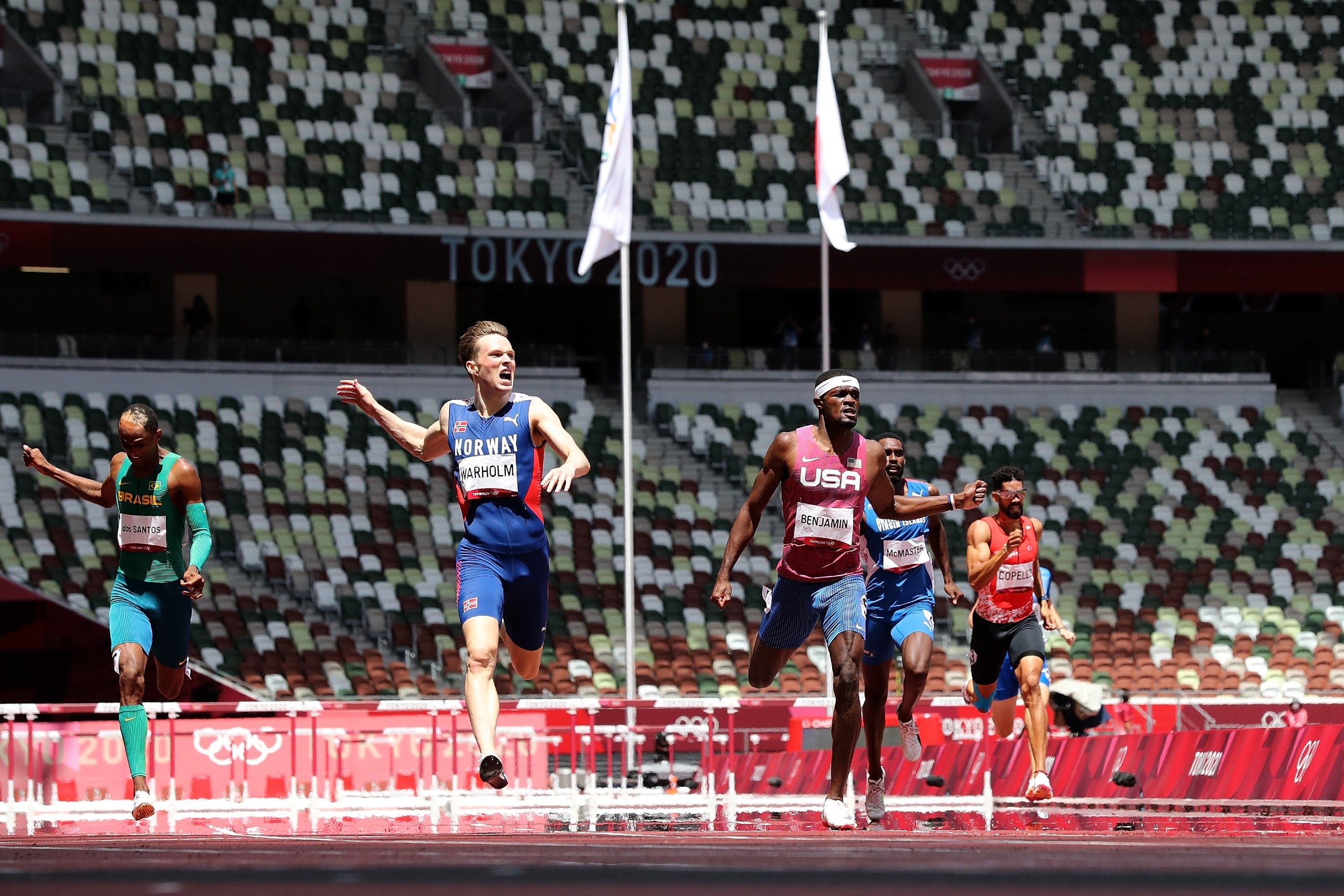
Nearly three decades had passed before someone managed to chip 0.08 from Kevin Young's legendary mark set at the 1992 Olympics. Today's performance eclipsed that by nearly a full second, blasting the record into sub-46 territory, something utterly incomprehensible – until today.
Even Warholm looked at the scoreboard in disbelief as he powered down after crossing the line, his jaw dropping, eyes popping. The only obvious reaction was to rip open his singlet and let out a series of roars.
“It's so crazy,” Warholm said. “This is by far the biggest moment of my life.”
To the former, Benjamin concurred.
“I don’t think Usain Bolt’s 9.5 was better than this,” he said, referring to Usain Bolt’s 9.58 100m world record set in 2009.
The pair – Benjamin in lane five, Warholm in six – set off on an aggressive pace, marking clear distance on the field by the second hurdle. Warholm chiseled together a visible advantage by the third barrier and carried a clear lead into the final bend. But Benjamin didn't panic.
Warholm led as the pair entered the final straight, but wasn't gaining ground as they approached hurdle nine. Benjamin managed to chip away at the lead and nearly caught Warholm at the final hurdle, but that surge cost him, leaving him drained as he landed, unable to respond as Warholm began to pull away.
(08/03/2021) ⚡AMPby World Athletics
Tokyo 2020 Olympic Games
Fifty-six years after having organized the Olympic Games, the Japanese capital will be hosting a Summer edition for the second time, originally scheduled from July 24 to August 9, 2020, the games were postponed due to coronavirus outbreak, the postponed Tokyo Olympics will be held from July 23 to August 8 in 2021, according to the International Olympic Committee decision. ...
more...Runner’s nutrition highlights from the ACSM annual meeting
The American College of Sports Medicine (www.ACSM.org) is a professional organization with more than 17,400 members who are doctors, dietitians, psychologists, exercise physiologists, and other health professionals who work with athletic people. At ACSM’s 2021 Annual Meeting in June, members shared their knowledge and latest research. Here are just a few sports nutrition highlights that might be of interest to runners.
• Male cyclists often have weaker bones than runners, in part because they are not doing weight-bearing exercise. Bone loss has also been seen in NCAA male basketball players—as much as 6% bone loss in a year. Why? The decline might be related to calcium lost in sweat. Hence, runners who sweat heavily might be wise to consume more calcium-rich foods. Chocolate milk for a recovery drink?

• Weight-conscious runners who are Intermittent Fasting commonly skip breakfast. Breakfast skippers tend to be less physically active; they do not lose more body fat than breakfast eaters. No harm in fueling up for an active day!
• Whether you are a collegiate athlete, a CrossFit fan, or a gym rat, you can experience similar changes in body fat. No one exercise or exercise setting is superior to another. Hard work creates the desired results, regardless of where you train.

• Global warming means outdoor runners will be spending more time exercising in the heat—and that can take its toll on performance. To beat the heat, try pre-cooling your body by draping a towel dipped in ice water around your neck. You can also put ice packs on your thighs for 20 minutes. Dropping your body temperature pre-run can help you perform better during subsequent exercise.
• To reduce heat stress, up can also cool yourself from the inside out by consuming ice slurries before and during your run.
• Elementary school children at a soccer camp trained for two hours in the morning and again in the afternoon. In the morning, the fluid station was set up beside the pitch. The kids drank too little. In the afternoon, the kids each brought a personal water bottle inside the pitch. They drank enough to replace sweat losses. That simple change helped safeguard these 2nd and 3rd graders. All summer athletes should have water readily available.
• Even national-level male soccer players can struggle to consume enough fluids. On Day One of urine testing, 90% of the players were significantly dehydrated. None were well hydrated. Continuously monitoring hydration status nudged the players to drink more fluids. If you are exercising in the heat, be sure to drink enough so that your first morning urine is not dark and smelly!
• Parents: Keep your eyes open for eating disorders in your young athletes. Among 2,109 middle school runners (1,252 boys; 857 girls), 1.5% reported a clinical history of eating disorder, or they met the criteria for elevated dietary restraint. Compared to the “normal” eaters, the restrained eaters were more likely to skip meals (68% vs 6%), follow a vegetarian diet (55% vs 13%) and use dietary supplements (84% vs 25%). They also reported running slower and recovering slower. Youth athletes should be taught to focus on fueling to grow and perform—and stop skimping on food to be lighter or leaner.
• Spirulina is a popular supplement that has been shown to have antioxidant and performance enhancing properties. A study that involves muscle-damaging exercise suggests spirulina supplementation (6 grams/day) did not offer any benefits in terms of muscle performance or recovery from muscle damage.
•Not all athletes respond to ergogenic (energy-enhancing) sports supplements in the same way. A study with beta-alanine suggests differences in benefits were related more to sleep habits, motivation, nutrition, and training schedules – and less to the supplement itself. Hence, athletes are more likely to respond positively to a supplement if they create supportive lifestyles. No amount of supplements will compensate for an erosive lifestyle.
• To my dismay, nutrition is not always the winning edge. In the past five years, numerous track & field world records have been broken—not because of better nutrition but rather a new style of shoes that reduces effort. Regardless, I recommend you keep eating wisely and fueling well!
(08/02/2021) ⚡AMPby Colorado Runner
Kenya´s Olympic Steeple Streak Broken by Soufiane El Bakkali of Morroco
Two-time world medalist Soufiane El Bakkali of Morocco, fourth at the Rio Games, found an extra gear near the final water jump to claim men’s steeplechase gold, becoming the first non-Kenyan to win the event since 1980.
El-Bakkali won in 8 minutes, 8.90 seconds on a wet track at the Olympic Stadium in Tokyo. He finished well clear of Lamecha Girma of Ethiopia, who took the silver.
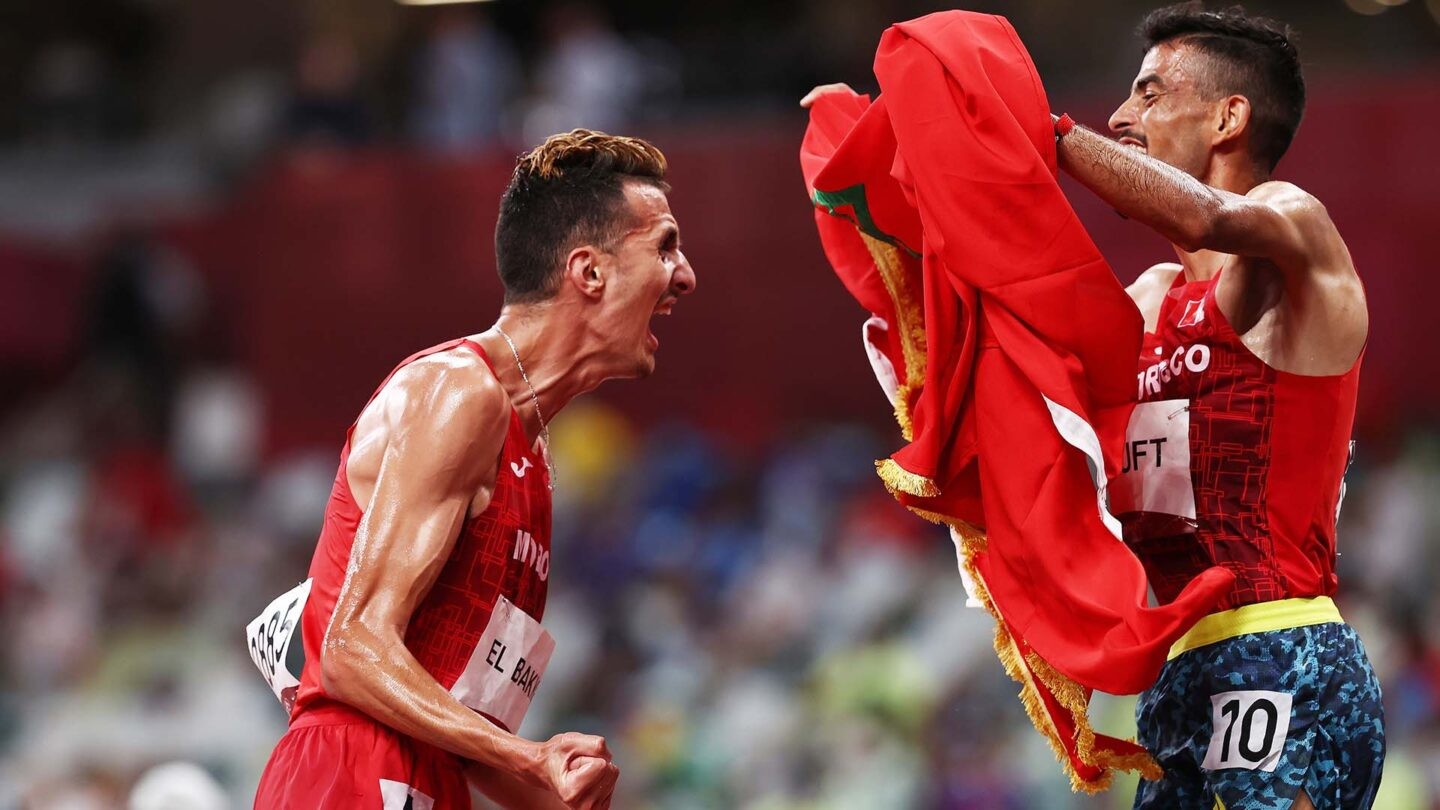
Benjamin Kigen claimed a bronze for Kenya after Ethiopia’s Getnet Wale, who was third heading to the final straight, fell. Wale struggled back to his feet and clung on for fourth.
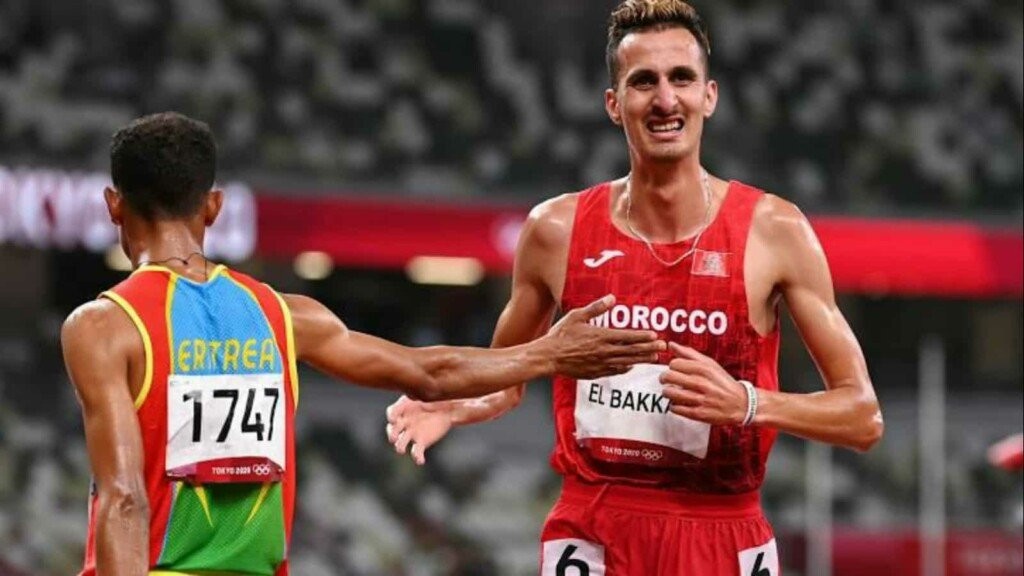
The 25-year-old el-Bakkali was fourth at the last Olympics in Rio de Janeiro and on the podium at the last two world championships, but this was his first major title.
Kenya’s Conseslus Kipruto, the leading star of the steeplechase, didn’t defend his Olympic title in Tokyo after failing to make the Kenyan team at the national trials.
(08/02/2021) ⚡AMPby NBC Sports
Tokyo 2020 Olympic Games
Fifty-six years after having organized the Olympic Games, the Japanese capital will be hosting a Summer edition for the second time, originally scheduled from July 24 to August 9, 2020, the games were postponed due to coronavirus outbreak, the postponed Tokyo Olympics will be held from July 23 to August 8 in 2021, according to the International Olympic Committee decision. ...
more...Siffan Hassan has won at the 5,000 meters and now looks to the 1,500 and 10,000
Six races in eight days on the Tokyo track? No problem, says Sifan Hassan, who overcame a Monday morning fall in the 1500m heats to win 5000m gold in the evening.
How about 24,500 meters of Olympic racing in the matter of eight days?
The Netherlands’ Sifan Hassan has said she’ll try it, competing in each of the 1500m, 5000m, and 10,000m races at Tokyo 2020, a line-up rarely seen – especially in the hot conditions athletics runners are facing at these Games.
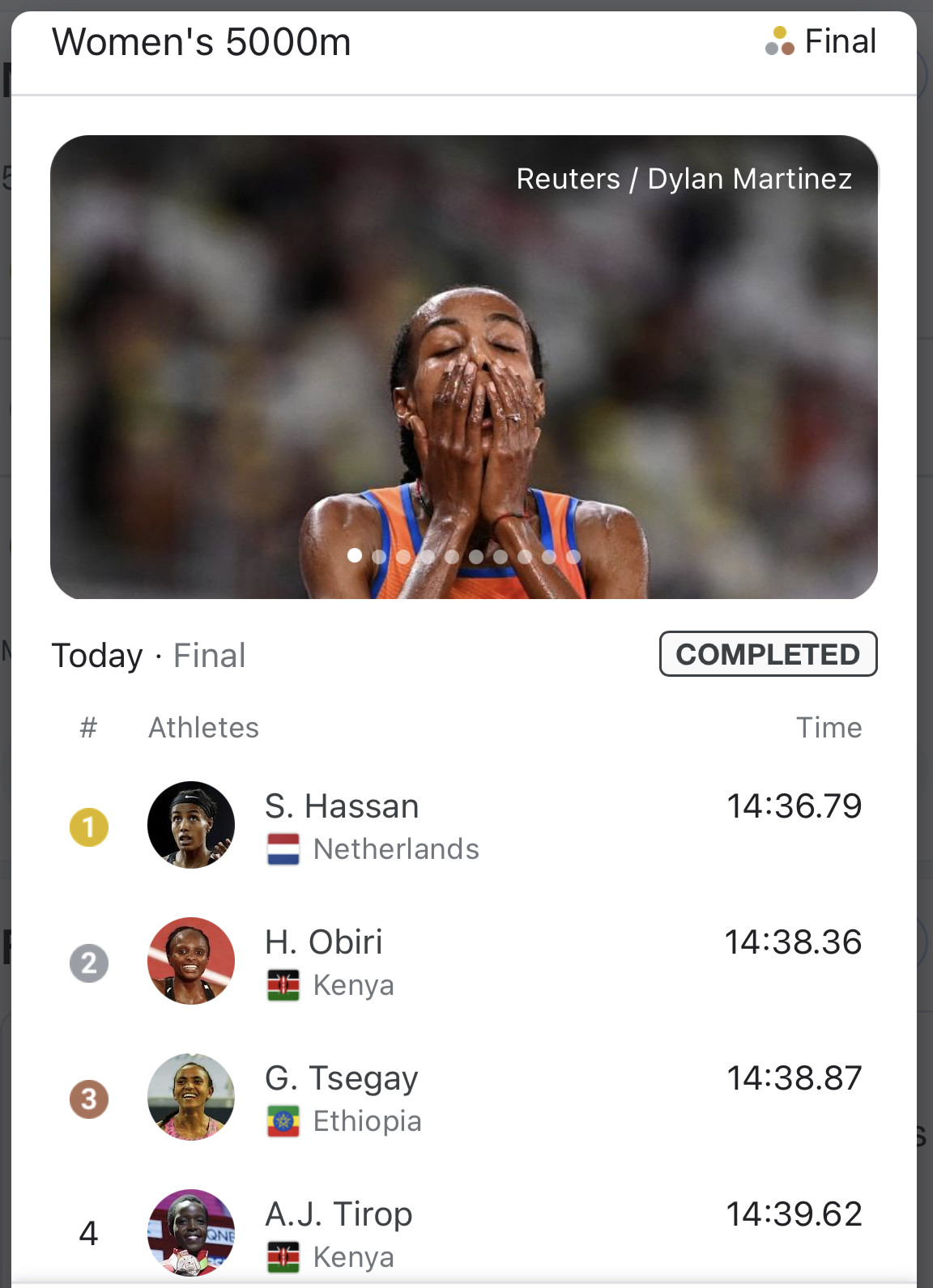
“For me it is crucial to follow my heart,” said Hassan in a press release. “Doing that is far more important than gold medals. That keeps me motivated and it keeps me enjoying this beautiful sport.”
Having already run on Friday (July 30) to qualify for the 5000m final, Hassan fell with a lap to go in Monday morning's 1500m first round, but picked herself up to win the heat!
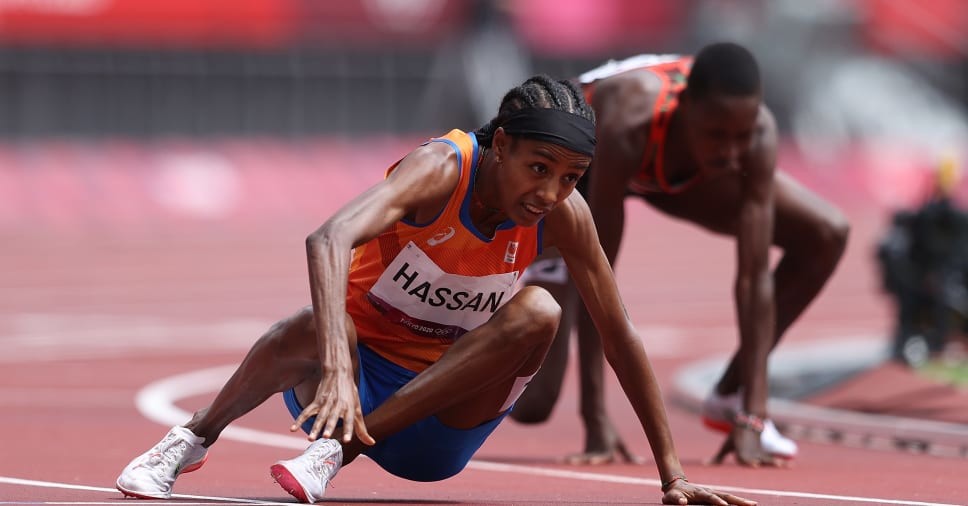
Just 12 hours later, Hassan produced her famed finishing kick to take her first global title over 5000m and her first Olympic medal.
That may have been the hardest of three with the mile world record holder completing a 1500m-10,000m double at the 2019 World Championships.
See her full schedule below – and find out what other similar feats have been attempted in athletics in Games past, as you get to know the distance running star.
Born in Ethiopia in 1993, Hassan arrived in the Netherlands as a 15-year-old refugee in 2008. She split her time between running and studying to become a nurse.
She became a Dutch citizen in late 2013, which allowed her to represent the Netherlands in competition.
As early as 2011, Hassan began making her mark on the international stage, winning the Eindhoven Half Marathon that year. In 2013, she won the 3000m at the Ostrava Golden Spike meeting in June.
At the 2014 European Championships in Zurich, Hassan took gold in the 1500m and a year later, she won bronze in the 1500m at the World Championships in Beijing, joining Dafne Schippers as the only Dutch athletes to win medals at the Worlds.
She had clearly established herself as one to watch ahead of Rio 2016, though injuries hampered her build-up to those Games, where she went out in the heats in the 800m but reached the final of the 1500m, where she finished fifth behind Kenya’s gold medalist Faith Kipyegon.
Has anyone tried such an Olympic programme before? Let’s compare it with two great long-distance feats at Olympic Games.
According to The Guardian, Paavo Nurmi went for four at Paris 1924: Nurmi won the men's 1500m, 5000m, and 3000m team event – as well as two cross-country events – but “Finnish officials feared for his health and refused to let him race the 10,000m.”
The 1500, 3000 and 5000 happened over a span of just five days.
At Helsinki 1952, Czechoslovakia’s Emil Zatopek won the 5000m, 10,000m, and marathon (42km) – all in Olympic records. Those four races (a semi and a final for the 5000), took place over eight days.
After Rio, Hassan joined Alberto Salazar’s training group in Oregon, keeping her focus largely on the 1500m. She was fifth again (behind Kipyegon) in the 1500m at the 2017 World Championships in London and took bronze in the 5000m with another Kenyan, Hellen Obiri, winning gold.
In 2019, after a quiet season to start, she set a new mile world record at the Monaco Diamond League in 4:12.33.
At the World Championships in Doha, she entered the 10,000m having only ran the race competitively just once before. But Hassan closed down Letesenbet Gidey before sprinting clear on the last lap to take her first global title.
A week later, she showed her versatility by winning the 1500m to complete a unique double at Worlds.
After worlds, it was announced that her coach, Salazar, would be suspended from athletics due to doping allegations. Hassan denied any knowledge of wrongdoing.
She continued to perform at the top level after his suspension: She set the aforementioned mile world record in 2019, then ran the fourth fastest 10,000m ever before setting a new world record at that distance in June of 2021. (That record was broken two days later, by Gidey.)
Hassan will almost certainly fight it out with Gidey for gold in the 10,000, but the Dutch runner’s famed finishing kick gives her a great chance of adding the Olympic title to her world title.
Here’s a breakdown of Hassan’s potential schedule, having already advance through into the final of the 5000m on Monday night (Aug 2).
Fri 30 July 19:00 JST - 5000m semi-finals – Finished 1st, to reach final.
Mon 2 August 09:47 JST - 1500m round 1 - Finished 1st in heat despite falling, to reach semi-finals.
Mon 2 August 21:40 JST - 5000m final
Wed 4 August around 17:00 JST - 1500m semi-finals.
Fri 6 August 21:50 JST - 1500m final (if she qualifies)
Sat 7 August 19:45 JST - 10,000m final.
(08/02/2021) ⚡AMPTokyo 2020 Olympic Games
Fifty-six years after having organized the Olympic Games, the Japanese capital will be hosting a Summer edition for the second time, originally scheduled from July 24 to August 9, 2020, the games were postponed due to coronavirus outbreak, the postponed Tokyo Olympics will be held from July 23 to August 8 in 2021, according to the International Olympic Committee decision. ...
more...Here's everything you need to know about the Tokyo Olympics marathon
The men's Olympics marathon is traditionally held on the very last day of competition, with the women's race staged a day earlier.
Both events will be starting early in the morning to avoid the heat, with the women running on Saturday, August 7 and the men racing on Sunday, August 8.
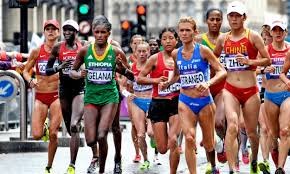
Here's everything you need to know about the Tokyo Olympics marathon.
WHEN IS THE TOKYO OLYMPICS MARATHON?
The women's race will be held on Saturday, August 7.
The men's race will be run on Sunday, August 8.
WHO IS RUNNING THE OLYMPIC MARATHON?
There are a number of high-profile runners who won't feature in Tokyo, with Ethiopian legend Kenenisa Bekele topping that list.
It is still a packed field though, with defending Olympic champion and current world record holder Eliud Kipchoge set to run.
Kipchoge will be joined on a formidable Kenyan team by Lawrence Cherono and Amos Kipruto.
Ethiopia will be represented by Lelisa Desisa, Shura Kitata and Sisay Lemma, while Rio 2016 bronze medalist Galen Rupp is back representing America.
In the women's race, it's hard to go past world record-holder Brigid Kosgei of Kenya.
Kosgei will be joined by 2019 marathon world champion Ruth Chepngetich and two-time world half-marathon champion Peres Jepchirchir in Kenyan colours.
The Ethiopian trio of Birhane Dibaba, Roza Dereje and Zeineba Yimer will also be in the mix and are all capable of comfortably running under 2:20.
RIO 2016 OLYMPICS MARATHON WINNER
Eliud Kipchoge stormed to a memorable victory in the rain in Rio, finishing ahead of Ethiopia's Feyisa Lelisa and American Galen Rupp.
In the women's race, Kenyan Jemima Sumgong won gold in front of Eunice Kirwa and Mare Dibaba.
(08/02/2021) ⚡AMPby Brendand Brandford
Tokyo 2020 Olympic Games
Fifty-six years after having organized the Olympic Games, the Japanese capital will be hosting a Summer edition for the second time, originally scheduled from July 24 to August 9, 2020, the games were postponed due to coronavirus outbreak, the postponed Tokyo Olympics will be held from July 23 to August 8 in 2021, according to the International Olympic Committee decision. ...
more...The Truth About Alcohol And Endurance Sports
Just like Sunday brunch with friends and happy hour with coworkers, the post-run drink has become a uniting ritual for runners. An Instagram search for hashtags #willrunforbeer and #runforwine reveals thousands of photos of smiling, sweaty runners-many of them women-downing frosty pints of beer or clutching super-sized glasses of wine. Promotion for everything from casual neighborhood brewery runs and Rose 5Ks to large-scale destination races like the Napa-to-Sonoma Wine Country Half Marathon only amplify the message: alcohol is a justifiable reward for hard-run miles, and alcohol and exercise go hand-in-hand for many.
Many of the races, like the Zooma series and Disney Princess Half Marathon Weekend, explicitly bill themselves as girls' weekend getaways, complete with luxury accommodations, elaborate swag bags, and post-event parties with free flowing wine, beer, and other libations. In addition, much of the running merchandise targeted to women is branded with catchy, alcohol-related slogans like "Run All the Miles, Drink all the Wine" and "Will Run for Beer." Not to mention all the other ways alcohol and exercise are becoming entwined: think beer yoga and wine hikes; FitVine's collab with Barry's Bootcamp; Sunday sip and spins with mimosa bars post-spin class.

But just as women are closing the gender gap in road race participation, comprising just over 60% of all race finishers in 2019, recent studies also show that women are closing the gender gap when it comes to alcohol consumption-and not in a good way. According to a 2019 study, women in their late teens and early 20s now report drinking and getting drunk at higher rates than their male peers, and pandemic-related anxiety, depression and stress have only exacerbated unhealthy drinking patterns for many.
And while for most people, a celebratory drink with friends after a group run or at the finish line is no more harmful than a sugar doughnut or indulgent brunch, how did alcohol-a mood-altering drug-become such an integral part of a sport that promotes health and wellness?
Racing as an experience
Just as running's second wave in the late 1990s and early 2000s dramatically increased women's participation in the sport, it also increased demand for destination and experiential races. From the launch of the pioneering Rock 'n' Roll series in the late 1990s to the women-centric Zooma and Disney Princess events that followed in the early 2000s, races became bigger and bolder, with on-course live music, branded merchandise, elaborate medals, and themed post-race parties serving everything from hot chocolate and cheese to bacon, pancakes, and of course, alcohol.
These unique race experiences appeal to seasoned runners like Cara Turano of Portland.
"I used to be really happy with a cool medal or t-shirt, but you can only have so many medals and shirts," she explains. "Perks like finishing in a beer garden or bringing home wine glasses is a much more memorable experience."
Turano ran the Bordeaux Marathon a few years ago to celebrate her 35th birthday and honor her mom's passing.
"The race included 24 wine stops over 26.2 miles, and it was the most amazing, festive, and supportive experience with 10,000 runners from around the world, all in costume, running pretty slowly through rolling vineyards in the gorgeous South of France," she recalls, adding that destination races are "a great way to combine a passion for running with one for travel."
Similarly, Nina Santus, a board member of Athens Road Runners in Georgia, frequently travels to races, choosing an experience based on personal interests or connections to a specific cause.
"I ran the Marine Corps Marathon because my brother was in the Marine Corps," she explains. "I'm also a big wine person, so if I can find a race where I can run and see the vineyards and enjoy food and drink afterward, I will do it." Santus plans to run the Marathon du Medoc next fall and has run alcohol-centric races like the Dirty Spokes Chateau Elan Muscadine Run and the Ales for Trails Terrapin Beer 5K, closer to home.
"I don't participate in beer miles where you have to chug things or get sick or be drunk, but I do support the idea of food and beverage to help bring more folks out for camaraderie and the sport of running," she continues.
For race director Tes Sobomehin Marshall, founder of Run Social Atlanta, that camaraderie is baked into her company's mission. With runs and races that launch or end near local businesses ranging from breweries and restaurants to physical therapy studios, athletic-wear stores, and entertainment-focused venues like Top Golf, the company markets itself to "both the competitive runner and the 'I just want a shirt and a beer' person," explains Marshall.
When she first started organizing races in 2012, Marshall realized "people were coming and spending 30 minutes running the race, and then another two to three hours socializing after." She finds her laid-back, social, and neighborhood-centric approach to racing "more accessible to people who wouldn't otherwise run and more fun for people who've been running for a while."
Atlantan Audrey Ward, who started running earlier this year, appreciates low-key, social races.
"As a newer runner, just getting my shoes on and out the door can be intimidating," she says. "Having a good time with people who just like to run (and maybe to cheers with afterward) takes the pressure off what can be a super-competitive sport."
According to Santus, the 300-400 member Athens Road Runners keeps its events approachable to make runners like Ward feel included.
In addition to Saturday morning training runs and Wednesday morning track workouts, the group regularly runs to local breweries or restaurants with events branded as "Taco Tuesday" and also gathers informally for popsicles, beer, or fizzy waters.
The social activities are designed to make "everyone feel welcome, no matter their pace," and to "break down the illusion that all runners are snobby and fast," she explains.
Terri Huggins, a New Jersey-based writer and fitness instructor, understands that alcohol can be a powerful incentive to attract newcomers who may be intimidated by an unfamiliar sport or activity.
Whether a gym class or a road race, "including alcohol really helps with engagement, and one could argue that someone drinking after an event is far better than someone not working out at all," she says
But as road races ramp up again at the same time women report drinking more alcohol to cope with pandemic-related stressors like balancing work with child-rearing, caring for sick relatives, and a massive exodus from the workforce, should organizers moderate drink-related messaging?
Tracy Green, a sub three-hour marathoner from Louisville who took an extended break from drinking alcohol last year, says yes.
"We know thinking of exercise as punishment or as a response to negative body image can be mentally unhealthy, and we know that alcohol can make issues like depression and anxiety worse-so coupling those two things together at a race is probably not the best thing we could be doing for mental health," she explains.
And while Huggins imbibes on occasion, she says that "in a time when so many people are unaware of what it means to drink in moderation, people in the fitness industry have an obligation to educate their participants on how alcohol can affect recovery, sleep, and metabolism."
The experts agree.
According to Dr. George F. Koob, director of the National Institute on Alcohol Abuse and Alcoholism, for "people who are exhausted from running, mildly dehydrated, and have empty stomachs, one serving of alcohol could be much riskier than it seems"-especially if driving home after an event.
Even if booze is an integral part of your racing group or event, Koob suggests being mindful that many people "turn to exercise as part of recovery from an alcohol use disorder," and that "these folks might be uncomfortable or left out if other runners celebrate the finish of a race with alcohol."
Keeping alcohol in a separate area of an expo or finish line celebration is one way to offer libations without explicitly excluding those who don't drink, says Back on My Feet CEO Katy Sherratt. And since alcohol is hyper-present at road races, it can provide a "real-world scenario" for those with addictions to maintain sobriety, as long as they have a strong support network.
And even those who do drink alcohol on occasion may opt to skip the post-race beer in favor of healthier beverages, like recovery shakes and smoothies, kombucha, and sparkling water.
"Give me a fancy, fizzy mineral water after a hot race instead of a beer any day," says Green.
Professional runner and Olympian Molly Seidel enjoys non-alcoholic beers from Connecticut-based Athletic Brewing Company after a hard training session.
"I love that it's hoppy and actually tastes like an IPA, plus I get some good carbs out of it without alcohol impacting my training," she says.
The rapid growth in the non-alcoholic beer and spirits market, combined with growing interest in booze-free social movements like Dry January and Sober Curious, could be a unique opportunity for the racing industry to temper its alcohol-centric messaging.
And yes, a beer at the finish line is great, but as Dr. Koob puts it, "shouldn't completing the race be reward enough?"
(08/02/2021) ⚡AMPby Trail Runner Magazine
Suspicious Fires Reported Along Olympic Marathon Course
A fire was discovered in Sapporo's Odori Park, start and finish point of the Tokyo Olympics women's and men's marathons. Smoke was seen coming from a stump in the park. Three days ago, another stump was found burning suspiciously in Nakajima Park near the marathon course's southernmost point.
Police received a call reporting the burning stump at around 10:00 a.m. on July 29. One of the people who helped put the fire out said, "The smoke was heavy and the fire wouldn't go out even when we poured water on it." Afterward the stump, located behind a public restroom in the Odori Park, appeared charred and blackened.

Several cigarette butts were found at the site, which is to host the Tokyo Olympic Games marathons on Aug. 7 and 8. On the evening of July 26 the other suspicious fire occurred outside the Hokkaido Prefectural Museum of Literature along the marathon course in Nakajima Park. A tree stump next to the sidewalk in front of the museum was found to be burning.
(08/02/2021) ⚡AMPJacobs stuns with Olympic 100m win as no one saw this coming
Italy’s Lamont Marcell Jacobs, a former long jumper appearing in his first Olympics, stunned the field on Sunday (1) to claim the first men’s 100m gold medal of the post-Usain Bolt era.
Overlooked as a serious medal contender, the 26-year-old Jacobs clocked a European record of 9.80 to win Italy’s first ever Olympic 100m gold and claim the unofficial title of the world’s fastest man.
The Italian pulled in front after 60 meters and glanced to his right as he crossed the line in front of the USA's Fred Kerley, who took silver in a personal best 9.84, and Canada’s Andre De Grasse, who earned his second consecutive bronze in a PB of 9.89.
Three other runners also ran sub-10 seconds in the final: South Africa’s Akani Simbine finished fourth in 9.93, the USA's Ronnie Baker was fifth in 9.95 and China’s Su Bingtian was sixth in 9.98.
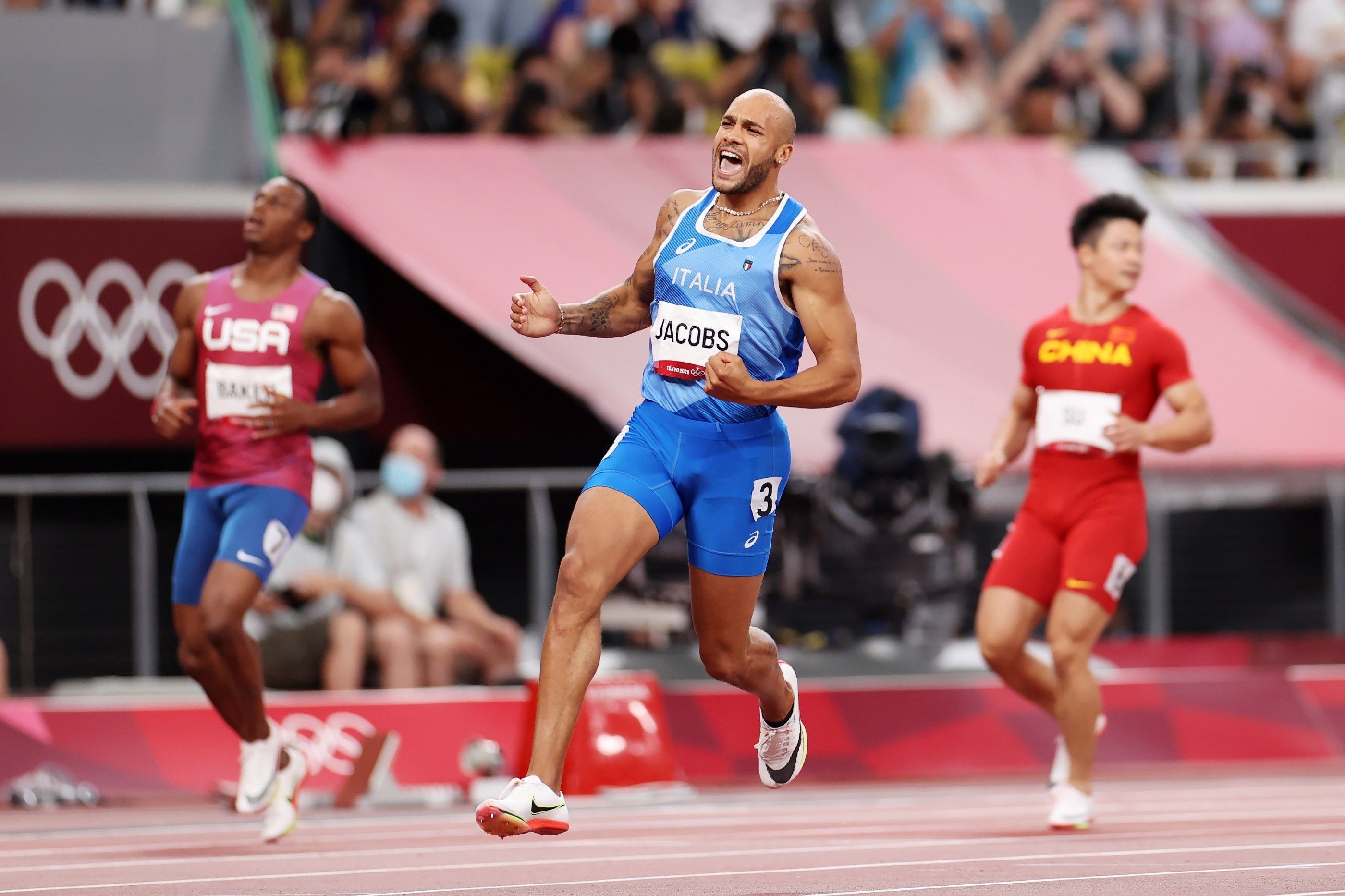
The pre-Olympic favorite, US champion and world-leader Trayvon Bromell, failed to qualify for the final.
In a race with no obvious favourites, Jacobs was still a major surprise.
The bald-headed, barrel-chested Italian did not come completely out of nowhere. He is the European indoor 60m champion and broke the Italian 100m record in May with a time of 9.95. But he chose the right time and place to announce himself on the world’s biggest stage.
“It’s a dream, it’s fantastic,” Jacobs said. “Maybe tomorrow I can imagine what people are saying, but today it is incredible.”
It was the first time since 2004 that gold in the marque event was won by someone other than Bolt, the Jamaican great who swept three consecutive 100m titles in Beijing, London and Rio de Janeiro, as well as three straight 200m crowns.
Few would have predicted that the man to succeed Bolt on the top podium would be Jacobs, who became the first European to win the 100m at the Olympics since Britain’s Linford Christie in Barcelona in 1992.
Even his race rivals didn’t see Jacobs as much of a threat.
“I really didn’t know anything about him,” Kerley said.
De Grasse added: “I didn't expect that. I thought my main competition would have been the Americans, but definitely he came to play. He executed. He did his thing so congrats to him."
Jacobs is the first Italian to win a sprint event since Pietro Mennea took gold in the men’s 200m in 1980. And his time? The fastest in the men’s 100m by an athlete not from the US or Jamaica.
Jacobs’ victory capped a golden night for Italy, coming minutes after another Italian, Gianmarco Tamberi, shared gold in the men’s high jump with Qatar’s Mutaz Essa Barshim. The two Italians embraced and celebrated together on the track.
“Being here together is something spectacular," Jacobs said. “I believe in him and I believed in myself.”
Jacobs’ story may not be known by the general public: He was born in El Paso, Texas, to an American father and Italian mother. He moved to Italy with his mother when he was one-year-old. Jacobs started out as a long jumper but, after a series of injuries, he changed to the sprints.
Signs that something special was about to happen in the final came earlier during the semifinals, which produced some stunning results, including a record-breaking heat in which three men ran under 9.85.
Su blazed to victory in the third heat in an Asian record 9.83 to become the first Chinese sprinter to reach an Olympic 100m final. Baker finished second with a personal best 9.83 and Jacobs was third in a European record 9.84. For good measure, Simbine clocked 9.90 to finish fourth in that heat.
Only twice previously had three men gone inside 9.85 in the same 100m race – the Olympic final in 2012 and the 2009 World Championships final in 2009.
Kerley (9.96) and Britain’s Zharnel Hughes (9.98) won the other two semifinals. Hughes was disqualified from the final after a false start.
Bromell missed out after finishing third in his heat in 10 seconds flat. He got off to a quick start and took the early lead but never found a second gear and was passed in the final metres by Nigeria’s Enoch Adegoke and Hughes.
There were signs that Bromell was not in medal-winning form a day earlier when he finished only fourth in his first-round heat in 10.05.
It was a stunning fall for Bromell, who had made a remarkable comeback to the top of the sport after tearing his achilles during the 4x100m relay at the 2016 Rio Games and being carried off the track in a wheelchair.
After two years out of the sport, Bromell worked his way back and established himself as the world’s top 100m sprinter. He clocked a world-leading 9.77 in June, the seventh-fastest time in history, then sealed his spot in Tokyo by winning the 100m at the US Olympic Trials in 9.80.
But since then he has not been his dominant self. Bromell’s 14-race winning streak was snapped when he finished fifth in Monaco in June in 10.01, his first race in Europe since 2016. He bounced back four days later with a victory in Gateshead, England, in 9.98 but still looked far from his best.
“I want to say thank you to everyone who's been with me on this journey,” Bromell said on Twitter on Sunday after failing to reach the Olympic final. “Lord knows how much I wanted to be in that final. BUT I walk away with a smile because I know I showed many that after four years out, you can still fight and make dreams come true.”
The day also marked the end of the Olympic career of Jamaica’s 31-year-old Yohan Blake, the 2011 world 100m champion who won silver at the 2012 Olympics and is a two-time Olympic relay gold medallist. Blake finished sixth in his semi-final in 10.14.
“Definitely my last Olympics,” Blake said. “You know track is not easy. I won't be ungrateful. I've gained a lot. I'm still the second fastest man in history, no one can take that away from me.”
(08/01/2021) ⚡AMPby World Athletics
Tokyo 2020 Olympic Games
Fifty-six years after having organized the Olympic Games, the Japanese capital will be hosting a Summer edition for the second time, originally scheduled from July 24 to August 9, 2020, the games were postponed due to coronavirus outbreak, the postponed Tokyo Olympics will be held from July 23 to August 8 in 2021, according to the International Olympic Committee decision. ...
more...Poland makes history with Olympic mixed 4x400m win
Poland’s first gold medal of the Tokyo Games came with a special bonus: a place in the Olympic history books.
Kajetan Duszynski raced to the front down the final straight and powered across the line to give his country the first gold medal in the inaugural Olympic mixed 4x400 relay on Saturday (31).
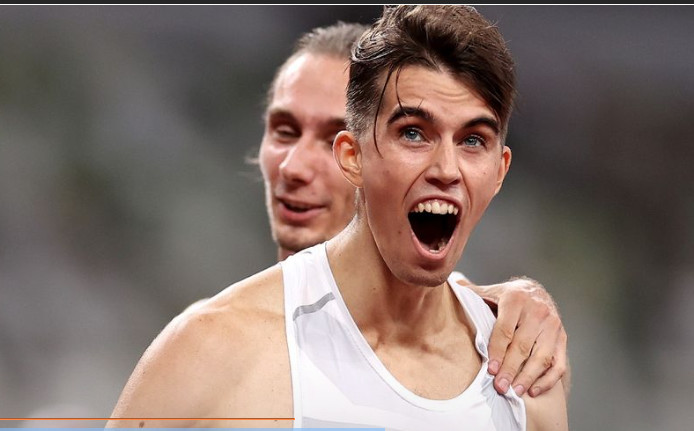

The Polish quartet of Karol Zalewski, Natalia Kaczmarek, Justyna Swiety-Ersetic and Duszynski clocked a European – and now Olympic – record of 3:09.87 to claim the title ahead of the Dominican Republic and the United States.
It was also Poland’s second Olympic gold in an athletics relay, coming 56 years after the Poles won the women’s 4x400m relay at the 1964 Games, which also happened to be held in Tokyo.
“We all believed we could manage to win the medal,” Zalewski said. “We were not sure if it was going to be gold or something else, but we knew that we could win something. We all left our hearts on the track.”
Duszynski, who ran the final leg in 44.38, held his arms outsretched wide as he crossed the line, then pulled his singlet over his head in celebration before being mobbed by his teammates.
"In the last 150 metres I felt I had a lot of strength still,” Dusynski said. “I'm that type of endurance athlete. It is my strength to run the first 200 metres slowly and then to attack towards the finish line. So I knew that I could make it. It's my strategy and it worked for me."
The Dominican Republic quartet of Lidio Andres Feliz, Marileidy Paulino, Anabel Medina Ventura and Alexander Oganda claimed the silver, with Paulino clocking a 48.7 split for her second leg. The bronze went to the US team of Trevor Stewart, Kendall Ellis, Kaylin Whitney and Vernon Norwood.
Oganda outleaned Norwood at the line to clinch the silver in 3:10.21, just 0.1 ahead of the US.
“It is so exciting to come here and run the first mixed relay at the Olympic Games, and to come out with a medal feels great,” Ellis said. “It feels like a win for us."
The race capped an eventful 24 hours for the US and Dominican teams. They had been disqualified after the qualifying rounds on Friday but were reinstated on appeal in time for the final.
The USA replaced their lineup from the heats, which was made up of Lynna Irby, Taylor Manson, Bryce Deadmon and Elija Godwin. The members of Saturday’s team said the controversy over the disqualification and reinstatement should not take away from their bronze-medal performance.
“It was events outside our control and we as a team stand behind our teammates and the United States, who we are proud to represent and bring home a medal for us,” Whitney said.
The mixed relay made its Olympic debut two years after being contested at the World Athletics Championships for the first time in Doha.
While teams can choose any order they want for the relay, all teams in Tokyo opted for the conventional order of man-woman-woman-man.
The Dominicans built up a large lead on the third lap until 21-year-old Dutch 400m and 400m hurdles star Femke Bol reeled them in going into the anchor leg.
Duszynski timed his kick perfectly, surging to the front after the final turn and pulling away down the home stretch. Norwood moved into second place and seemed poised to secure the silver for the US but was edged out by Oganda on the lean.
The US team did not include Allyson Felix, who had helped the USA win the mixed relay in Doha and was eligible to run the event in Tokyo.
It means that Felix, competing in her fifth Olympics at the age of 35, will have to wait a bit longer to bid for her 10th career medal. That would make her the most decorated woman in Olympic athletics history and equal Carl Lewis for the most medals by a US track and field athlete.
Felix, who holds six gold and three bronze medals, will run in the 400m and possibly the women's 4x400m relay.
(08/01/2021) ⚡AMPby World Athletics
Tokyo 2020 Olympic Games
Fifty-six years after having organized the Olympic Games, the Japanese capital will be hosting a Summer edition for the second time, originally scheduled from July 24 to August 9, 2020, the games were postponed due to coronavirus outbreak, the postponed Tokyo Olympics will be held from July 23 to August 8 in 2021, according to the International Olympic Committee decision. ...
more...Projection mapping light show makes Olympic debut in Tokyo
The women’s 100m final saw the introduction of a projection mapping light show to set the stage for one of the highlights of the Tokyo Olympic Games on Saturday night (31).
The technology made a successful debut in the Khalifa Stadium at the World Athletics Championships in Doha in 2019, where a delegation from the Tokyo 2020 Organising Committee (TOGOG) and the Olympic Broadcasting Service (OBS) first saw the spectacle in action and agreed to work on a similar light show for the Olympic Games.

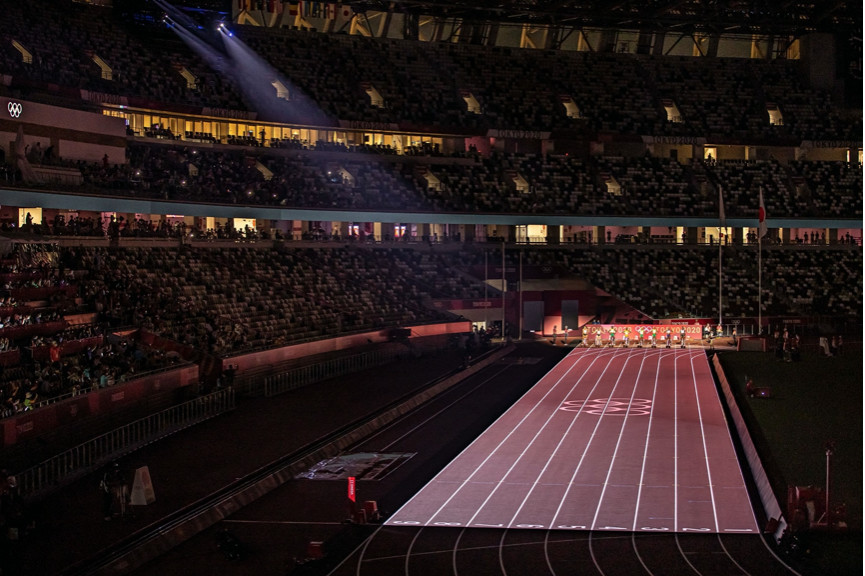
However, the logistics of the Tokyo stadium and the programme of events mean that the light show is only viable for the women’s and men’s 100m finals.
The show, used to create anticipation for the race and to introduce the eight finalists, is projected on to the 100m track using 12 projectors, the same ones that were in place for Tokyo 2020’s spectacular Opening Ceremony.
It creates 3D images of the world, zooming in to the Tokyo skyline, and then the name of each athlete in the final is projected on the track when he or she is introduced.
World Athletics Event Presentation Manager Florian Weber said it took 20 hours of rehearsal to get the impressive introduction for the women’s 100m just right.
"We’ve created a Hollywood-style introduction for our athletes because they are the stars of our show and they deserve this kind of attention," he said.
"We’re also in the business of entertaining the fans and this is one of the tools we can use to grab their attention.
"But we can only do it in a modern stadium like this one that has the technology we need, including the ability to turn the lights up and down in an instant."
Weber said it was a logistically complicated process because the full stadium had to be plunged into darkness, including the huge electronic screens and back of house lights, in order to get the full effect.
Broadcasters have been provided with desk lamps to allow them to continue to see their commentary notes when the lights go out.
The athletes are briefed in the call room about the process beforehand and are taken out on to the track eight minutes before the start.
They are given four minutes to do a last warm up before they are marshalled behind their starting blocks.
The stadium lights are turned down three minutes and 30 seconds before the start and the light show begins.
"That’s the same time that a usual track race introduction takes, so the athletes are not being held any longer than they would be normally," Weber said.
Weber explained that each stadium projector had to be recalibrated each day, taking a technician two to three hours, as changes in temperatures between day and night created expansion and contraction in the projector housings and they moved slightly each day.
"We’re very thankful to the OBS and TOCOG, especially Sport Presentation Director Keisuke Goto, for supporting this innovation," he said.
(08/01/2021) ⚡AMPby World Athletics
Jamaican Elaine Thompson-Herah takes stunning Olympic gold in women’s 100m
Elaine Thompson-Herah produced a stunning sprinting performance to take gold in the women’s 100m at the Tokyo Olympics.
The Jamaican, who won the blue riband event at Rio in 2016, held off her compatriots Shelly-Ann Fraser-Pryce, who took silver, and Shericka Jackson, who won bronze, to take victory in 10.61sec, breaking Florence Griffith Joyner’s 33-year-old Olympic record.

Fraser-Pryce was quickest out of the blocks but could not hold off her compatriot in the second half of the race, with Thompson-Herah powering through and creating enough of a gap to her rivals that she was able to celebrate before crossing the line.
“I’ve been injured so much. I’m grateful I could get back on the track, and get back out on the track this year to retain the title,” said Thompson-Herah. “I knew I had it in me but obviously I’ve had my ups and downs with injuries. I’ve been keeping faith all this time. It is amazing.”
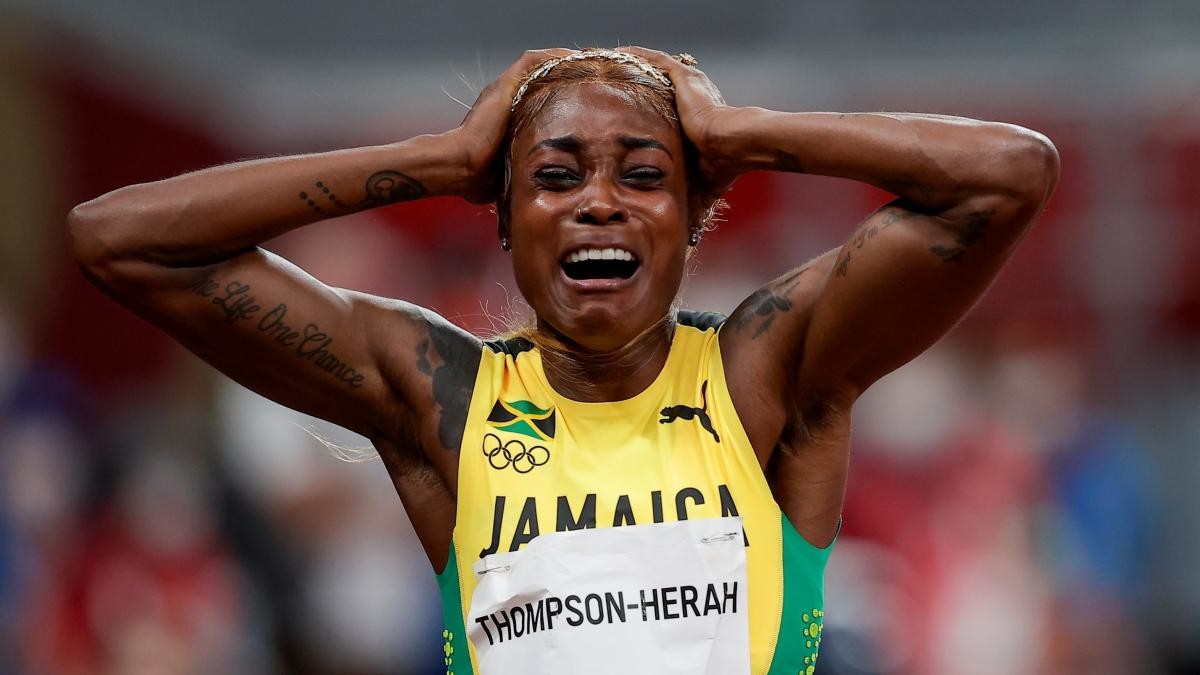
In all, six women ran under 11 seconds, making the race one of the fastest in history. Marie-Josée Ta Lou of the Ivory Coast was fourth behind the three Jamaican sprinters, with the Swiss duo of Ajla Del Ponte and Mujinga Kambundji fifth and sixth.
“I had a stumble and I never recovered from it,” Fraser-Pryce, the champion in 2008 and 2012, told the BBC. “As a mother, in my fourth Olympic Games, to be able to stand again on the podium is a tremendous honor.”
(07/31/2021) ⚡AMPby The Guardian Sport
Tokyo 2020 Olympic Games
Fifty-six years after having organized the Olympic Games, the Japanese capital will be hosting a Summer edition for the second time, originally scheduled from July 24 to August 9, 2020, the games were postponed due to coronavirus outbreak, the postponed Tokyo Olympics will be held from July 23 to August 8 in 2021, according to the International Olympic Committee decision. ...
more...The big benefits of bananas for runners
Eating good simple foods like a banana is an ultimate fueling option. Bananas are not only delicious, but also extremely nutritious, that’s why many runners and athletes use bananas for pre-race, race fueling and post-training refueling. Bananas are full of healthy carbohydrates, vitamins and potassium. Bananas are a balanced blend of nutrients that help restoring tired muscles, and give us energy boost even for our brain. Bananas also provide 15% of your daily vitamin B6 daily recommended intake to tune up the nervous system, which makes our body very happy.
Nutrients in Bananas:
Potassium (essential mineral)

Vitamin B
Vitamin C
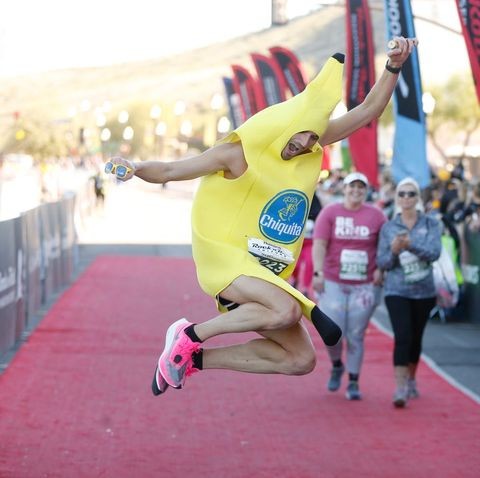
Carbohydrates
Low Glycemic Index (GI)- More slowly digested, absorbed and metabolized which causes slower rise of blood glucose, and insulin levels (no sugar spike)
Fiber
Antioxidants
If you like bananas, you should eat them, especially on training and racing days.
Why do Runners Need These Nutrients?
Potassium
Potassium is a mineral and electrolyte that isn’t produced naturally by the body. As runners, we need potassium to support the blood pressure and heart rhythm. If runners consume bananas, it will help to keep a regular heart rate and blood flow while running.
Vitamin B
Vitamin B is a water-soluble delicate vitamin, when our body is depleted of vitamin B it causes a lack of energy. Because vitamin B is delicate, fresh bananas will have higher levels of vitamin B than cooked bananas. Vitamin B helps the body process carbohydrates, proteins, and fats that our body needs for fueling while running and recovery.
Vitamin C
Vitamin C is essential for runners, running creates many microtears in the body’s muscles, and vitamin C helps healing those microtears. For runners, it maintains the connective tissue healthy, and prevents infections so you can keep running long-distance with no issues. It also helps to prevent many other infectious diseases. Vitamin C is also more efficient when absorbed from fresh foods, eating fresh bananas will provide higher levels of vitamin C.
Carbohydrates
Carbs are a great source of sugars and starches, essential for good energy. Runners need a lot of energy and carb fueling. Bananas contain fructose, a simple carbohydrate that provides a faster release of energy which is digested and processed more quickly in the body, but from bananas we still don’t get sugar spikes. Complex carbohydrates are very healthy, but it takes longer to process and digest than simple carbs. For pre-run and during a run simple carbs are more efficient to provide energy, digested more easily and don’t cause stomach issues like complex carbs during a run. The body processes bananas faster, allowing to fuel the body during the run and refuel post-run. Average size and ripeness bananas contain about 23g of carbs, similar to one gel.
Low GI (glycemic index)
Bananas are low on GI scale, less than 55 is considered low and bananas have a glycemic index value of 51. Foods with a low GI scale cause blood sugar to rise gradually, not quickly after eating them. Bananas will provide no sugar highs and lows as your body processes the food. A consistent level of sugar is better for runners as it provides a constant source of fuel rather than sugar spikes, which causes our body to crash.
Fiber
Fiber is the part of the bananas that can’t be digested or absorbed by the body, but it helps to support gut health and keep our digestive system regular. This type of natural fiber doesn’t cause any stomach issues during a run.
Antioxidants
Antioxidants help to stop and prevent oxidation. Oxidation is a common chemical reaction (it happens when our cells extract energy from food), in which atoms or molecules lose electrons. Losing electrons causes imbalance as they have to be connected in pairs. When a molecule has uneven electrons, it will roam through the body, looking to grab electrons to even up the numbers and rebalance the cells. Antioxidants neutralize free radicals by providing their own electrons without becoming free radicals themselves, so they don’t have to go find electrons to rebalance the cells. When eating bananas, the body processes carbohydrates for energy and at the same time, antioxidants balance the electrons.
That is why runners should eat bananas if they like that nutritious fruit to provide healthy, easy to digest, and body stabilizing energy.
Eat Well, Train Well, Run Strong!
(07/31/2021) ⚡AMPby TGR Trail Running
Too Much Caffeine Could Weaken Your Bones Over Time, New Research Suggests
If you drink coffee and consume caffeine in other ways, it’s worth monitoring your intake.
Higher doses of caffeine—around 800 mg or more per day—may up your risk of developing osteoporosis, new research suggests.
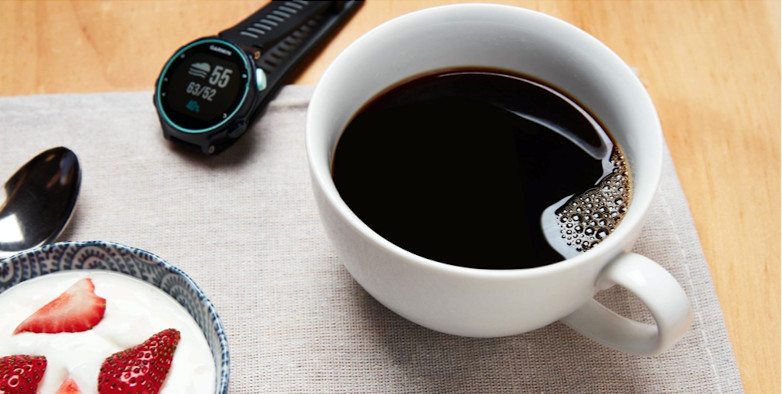
The FDA recommends 400 mg of caffeine per day as a generally safe amount—this includes caffeine from sources such as coffee, energy drinks, and preworkout mixes.
If you drink coffee all day or you take caffeine pills for athletic performance benefits, you may want to track the amount of caffeine you’re consuming. Higher doses of caffeine may up your risk of developing osteoporosis, according to a study in the British Journal of Pharmacology.
Researchers looked at 24 people, half of whom chewed a non-caffeinated gum and the other chewing a caffeinated version, and over the course of six hours, they got fresh gum several times. The latter group ended up consuming about 800 mg of caffeine—that’s the equivalent of eight cups of coffee.
That group saw a significant increase in terms of calcium in their urine—about 77 percent more at the end of six hours than when they started. High amounts of calcium output indicate that the kidneys are releasing the mineral faster than the body can replace it.
That led the researchers to conclude that over the long term, this could put those in the caffeinated group at a much higher risk of bone density issues and, potentially, a greater risk of developing osteoporosis, which causes your bones to become weak and brittle. This is an issue that tends to impact older adults most, since we lose bone density naturally as we age, but the researchers concluded that athletes could be at risk as well if they’re using caffeine for performance enhancement.
For example, although eight cups of coffee is excessive, many energy drinks have between 300 to 400 mg in one can, and some 2-ounce energy shots can have that much as well. Supplements with caffeine, such as preworkout mixes, can range between 150 to 300 mg per serving. That means it may be possible to get to 800 mg and even above without draining the coffee pot, said Kristin Gillespie, R.D., dietitian and nutritional counselor based in Virginia Beach, Virginia.
“When consumed in moderation, the effect of caffeine is fairly modest,” she told Runner’s World. “Where we get into trouble is with those higher amounts, so cutting back would be your best option.”
The FDA recommends 400 mg of caffeine per day as generally safe, and even with that amount, Gillespie suggested making sure you consume adequate calcium and vitamin D, which are both critical for maintaining bone health.
“Ideally, this would come from your diet, but if you struggle with getting adequate amounts, consider incorporating a supplement,” she said. “Also, exercising regularly is a vital part of bone health, so that can balance out higher amounts of caffeine.” (It’s worth noting, consult a registered dietitian or medical professional before adding any supplements into your diet.)
(07/31/2021) ⚡AMPby Runner’s World
Elite Runners Spend More Time in the Air Than Even Those Who Are Highly Trained, New Research Says
What you can do to optimize your own running efficiency.
New research highlights a difference between the strides of elite runners and highly trained sub-elite runners—Elite runners stay in the air longer because they have more bounce in their stride.
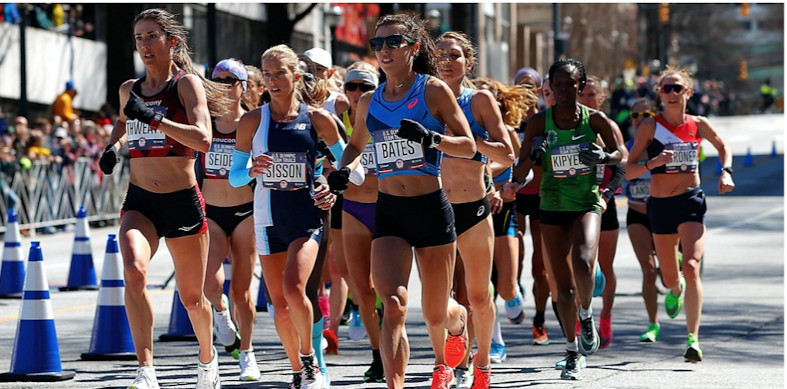
To refine your own running efficiency, researchers suggest running more hills, doing more speedwork, including more plyometrics drills and strength training in your cross training, and running on diverse surfaces.
Elite runners are rightfully lauded for their speed, but their performance comes not only from forward momentum. A new study in Scientific Reports suggests they also have much more bounce than other runners, even those who are highly trained.
Researchers had 10 sub-4 minute milers and 10 highly trained non-elite participants run on a treadmill outfitted with a pressure plate under the belt, which indicated the amount of time they spent in the air compared to in contact with the ground.
They found that elite runners are in the air longer than non-elite runners, but it’s not because they’re pushing off from the ground at an angle. Instead, they bounce upward.
The study’s lead author, Geoff Burns, Ph.D., a sport science postdoctoral research fellow at the Performance Research Lab at the University of Michigan, told Runner’s World the takeaway here is that elite runners have conditioned their bodies to behave as “stiffer” mechanical systems.
“They were like pogo sticks that were slightly more upright with stiffer springs,” he said. “They had a quicker, more efficient relationship with the ground.” This is similar to how many types of animals run, he added, because it tends to require less energy.
Burns—an elite runner himself, who has represented the United States at world championships in the 50K and 100K distances—added that runners who try to emulate this stiffness in their stride consciously should approach with caution. It’s not a matter of changing your stride to get more air; the whole body needs to work together in a specific way, rather than just a few parts of it. For example, suddenly bouncing more could create more tension in your lower body muscles, and that might lead to an overuse injury.
That said, the research results can be helpful to those who want to keep refining their running efficiency.
“Do things in training that stress the system as a whole, and challenge it to rearrange its spring-like behavior,” he suggested. That includes:
Running up and down hills
Running on different surfaces
Wear different shoes to modulate body stiffness
Do sprints, intervals, or fartlek training to modify speed
Try plyometric drills, which can naturally induce stiffer behavior
Cross train with resistance training
“These are all methods that elite runners do in a regimented fashion, so incorporating some of those elements may help casual runners enhance their own relationship with the ground,” he sai
(07/31/2021) ⚡AMPby Runner’s World
Canadian marathoner stuck in quarantine one week before race
On Friday, July 23, Canadian marathoner Dayna Pidhoresky set out on her Olympic journey from Canada to Japan. After arriving in Tokyo, she travelled with her coach, Josh Seifarth, to join Team Canada’s training camp in Gifu.
On Tuesday, July 27, they received a call from Athletics Canada, who had been notified by Japanese authorities that they had been in contact with someone who tested positive for COVID-19 on their flight to Japan.
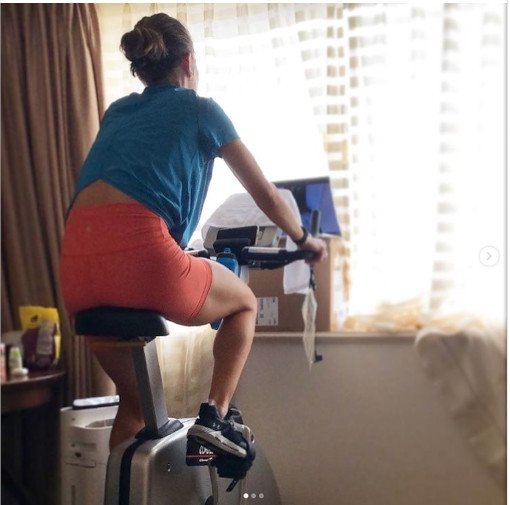
Both Pidhoresky and Seifarth were immediately required to isolate in their hotel room. Athletes are tested twice a day, and so far their tests have returned negative. They are both also fully vaccinated, but that fact does not carry any weight at these Olympics.
Getting to the start line hasn’t been easy for Pidhoresky, as the runner dealt with an injury to her soleus (calf muscle) in 2o2o. She has been training well leading up to the Games, but while isolating in her hotel room, so far she has not been able to run, or to receive any treatment or physiotherapy.
Athletics Canada says it’s doing everything it can to help Pidhoresky compete in the Olympic marathon. A joint statement from the Canadian Olympic Committee and Athletics Canada said: “The COC and Athletics Canada have worked closely with local prefecture officials and the Canadian embassy to resolve the situation involving Dayna.
She will be able to train again leading up to the women’s marathon event at Tokyo 2020. We would also like to thank the City of Gifu which has been wonderful hosts. Team Canada remains committed to following the guidelines outlined in the Tokyo 2020 Playbook and the Japanese Government’s regulations.”
Pidhoresky requested, and was given, a stationary bike to use in her room, and Seifarth has given her multiple cycling workouts each day to maintain her endurance.
“We are one week away from the start of the women’s marathon and Dayna has not been given any timeline for release date,” says Seifarth. “It is more than likely she will only get to run once or twice in the days leading up the race.”
It’s expected that the other two Canadian women marathoners, Malindi Elmore and Natasha Wodak, will travel from Gifu to Sapporo on Saturday. Pidhoresky and Seifarth will travel on the same day, but will remain in isolation.
(07/31/2021) ⚡AMP
by Running Magazine
Curious about race walking? Here's how to give it a try
Every four years, race walking tends to cause a stir among the general public at the summer Olympic games. Maybe it’s the unusual movement, or the fact that ‘walking’ is in the title of the event. What the public doesn’t understand is how similar race walking is to running – and that most race walkers were runners before getting into the sport. Race walking (like running) is a foot race, but it diffs from running in that one foot must be on the ground at all times.
Boston marathoner, race-walking coach and host of “The Running Dad Podcast” Noel Paine spoke to us about the sport and how to get started. “Most race walkers come into the sport from running, as a less impactful activity on the body,” he says. “Some of the similarities it has to running is the mileage you have to put in to become faster and to build your technique.” Technique is the key, he adds: “Your technique limits how fast you can go. If you have good technique, the sky’s the limit, therefore, focusing on your technique early on is important.”

What is the ideal race-walking technique? Here are a few pointers.
Keep your legs straight, striding through your hips and torso
Avoid leaning too far forward or sitting back
Keep your body posture relaxed, and try to walk tall
Engage your abdominal muscles and keep them firm. Most of your power will come from your core
Over time, you can work on your cadence and try to increase your strides per minute as you improve. “Try race walking 1 km on your next run, and time yourself…while ‘staying legal,’” says Paine. Canadian Olympian and fourth-place finisher in Rio 2016, Evan Dunfee has been a big role model for Paine. They became friends in 2018 and have shared knowledge and tips.
The race walking at Tokyo 2020 will begin in Sapporo on Aug. 5 with the 20 km event, followed by the 50 km event on Aug. 6, with our Canadian contingent consisting of Evan Dunfee and Mathieu Bilodeau. You can follow every second of the race walking events at Tokyo 2020 on CBC Gem or cbc.ca/olympics.
(07/31/2021) ⚡AMPby Running Magazine
Luxury' race will be among most expensive on earth
Ultramarathon competitors are used to "roughing it" in races, sometimes sleeping in bivvy bags at the side of muddy trails or even running through several nights.
They set themselves incredible long-distance challenges, often running through remote and difficult terrain.
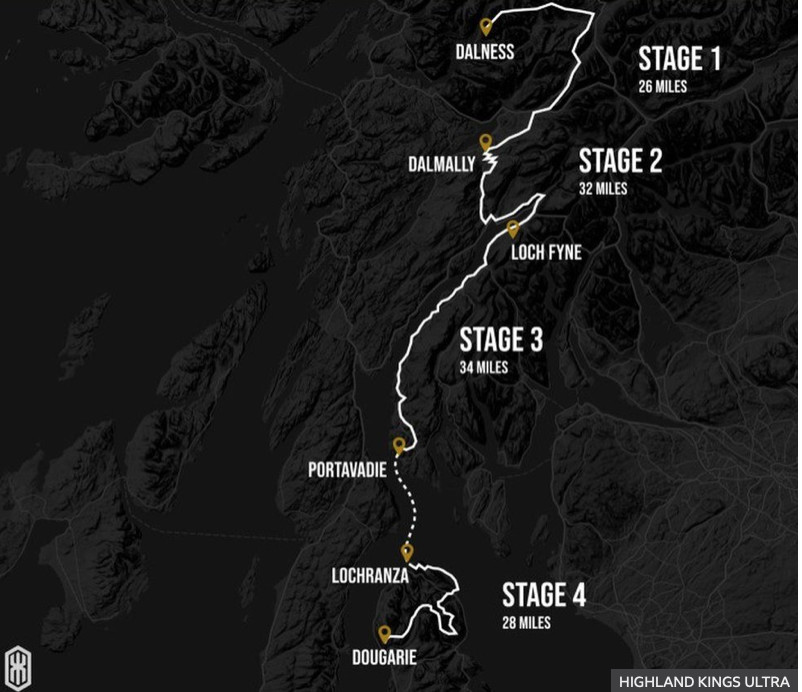

But now a new ultramarathon race is being launched which gives them luxury few could afford - including butlers, hydrotherapy pools, speed boats and Michelin-star chefs.
Highland Kings Ultra, a four-day camping race covering 120 miles on the west coast of Scotland, costs £15,499 per person to enter.
In contrast, the 95-mile West Highland Way Race costs just £120.
The organisers of the Highland Kings Ultra are calling it "the most exclusive, luxury ultra-run experience on the planet".
Race director Rebecca Silva told BBC Scotland the idea was for the runners to "race like a warrior but recover like a king".
She said: "The luxury element makes it very different to other races.
"It's aimed at professionals, who can afford it, who want a sense of adventure but want an element of luxury off the beaten track, in the wild and not in the typical places people explore."
The organisers of the Highland Kings Ultra are calling it "the most exclusive, luxury ultra-run experience on the planet".
Race director Rebecca Silva told BBC Scotland the idea was for the runners to "race like a warrior but recover like a king".
She said: "The luxury element makes it very different to other races.
"It's aimed at professionals, who can afford it, who want a sense of adventure but want an element of luxury off the beaten track, in the wild and not in the typical places people explore."
The race starts in Dalness in Glencoe, with a mountainous marathon to Dalmally in Argyll and Bute, two miles east of the tip of Loch Awe.
This is followed by 32 miles through hilly forest terrain to Loch Fyne, then 34 miles to Portavadie on the west coast of the Cowal peninsula, and finishing with 28 miles on the Isle of Arran.
Competitors then spend a night in a luxury campsite, followed by a gala dinner with explorer Sir Ranulph Fiennes.
The event is being run by outdoor adventure business Primal Adventures, led by an ex-forces Ayrshire man, Matt Smith, and managing director Rebecca Silva.
Ms Silva said: "We were asked by a group of French clients to organise a luxury running trip from the Isle of Aran to Inverness in 2018 and that planted the seed because the event was so successful.
"We have been arranging primal bush craft and adventure courses for years, so this has been an extension of that."
Ian Beattie, chairman of Scottish Athletics and race director of the 95-mile West Highland Way ultramarathon race, said he had never heard of a more expensive race.
"It will be interesting to see if there is demand for this event," he said.
"There is an element of criticism for commercial races, but people will decide what they want."
He said ultramarathon races organised by running groups and/or experienced runners were much cheaper because of the number of volunteers involved.
He added: "My advice would be to join a local running club as there are always qualified coaches there and people with a wealth of experience and knowledge."
(07/31/2021) ⚡AMP
by BBC
Less than three seconds was the difference between America’s Grant Fisher winning an Olympic medal in the 10000m in Tokyo
USA's Grant Fisher finished fifth in the 10,000 meters Friday with a time of 27:46.39. Jacob Kiplimo of Uganda won the bronze medal in 27:43.88.
Selemon Barega of Ethiopa won the gold medal with a time of 27:43.22, running the final lap in 53.94 seconds to nip Joshua Cheptegei of Uganda, who clocked 27:43.63.
"We did what we could to prepare,” Fisher, a former NCAA champion at Stanford, said, “but nothing prepares you like being out there. It’s physical, it’s choppy, guys are making moves.”
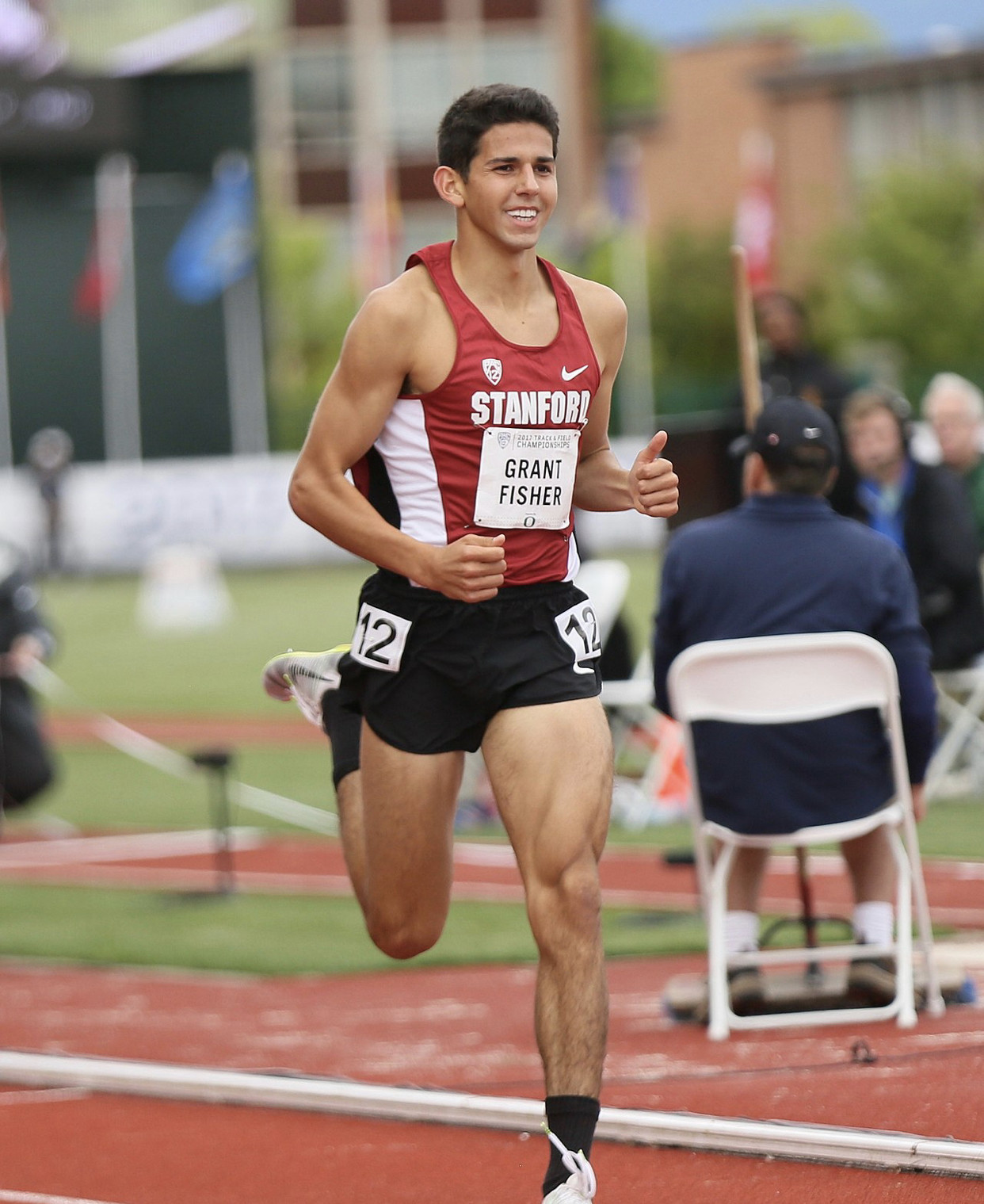
It was also hot, not to mention humid.
Fisher, competing in just his third official 10K, was able to stay within striking distance of the top runners going into the last lap, then unleashed a strong finishing kick to move up to fifth in 27:46.39. Cheptegei (27:43.63) and Kiplimo (27:43.88) took the silver and bronze medals, while Kincaid was 15th in 28:11.01, followed one spot later by Klecker in 28:14.18.
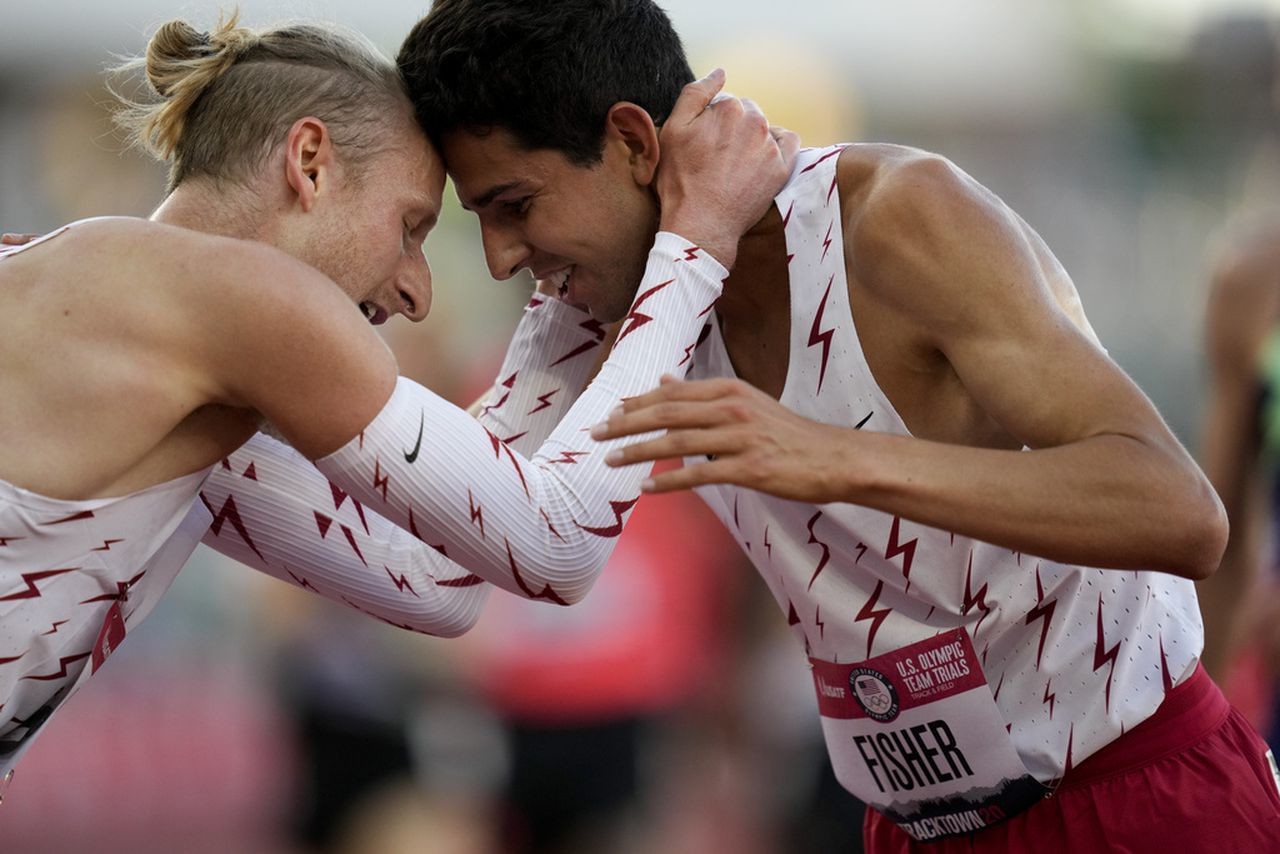
"I was just trying to race without fear, put myself in there and give myself a shot at the end,” Fisher, 24, said. “I was really happy with it. That whole thing, it never felt good. I bet even the guys that were 1-2-3 didn’t feel good in that race. I hope, because I felt that way.”
Despite the fifth-place finish, Fisher’s medal hopes are not over.
He’ll be competing in the 5,000 meters – his signature event – next week in Tokyo. The preliminaries are Tuesday, Aug. 3 and the final is Friday, Aug. 6.
Fisher, 24, is a 2015 graduate of Grand Blanc High School, where he was a two-time state and national cross country champion. In track and field, he became the seventh high school runner to break the four-minute barrier in the mile when he recorded a time of 3:59.38 in his final mile race as a senior.
At Stanford, he was a 2017 NCAA outdoor champion in the 5,000 meters. He was a 12-time college All-American.
(07/30/2021) ⚡AMPTokyo 2020 Olympic Games
Fifty-six years after having organized the Olympic Games, the Japanese capital will be hosting a Summer edition for the second time, originally scheduled from July 24 to August 9, 2020, the games were postponed due to coronavirus outbreak, the postponed Tokyo Olympics will be held from July 23 to August 8 in 2021, according to the International Olympic Committee decision. ...
more...Ten track and field nigerians banned from Olympics for missed doping tests protest in Tokyo
Nigerian athletes protested in Tokyo on Friday after they were disqualified from the Olympics for failing to meet anti-doping testing requirements, reports said.
Ten would-be Olympians were banned from competing in the track and field competition after Nigerian sports officials allegedly failed to properly register them for three mandatory out-of-competition tests, Nigeria’s Premium Times reported.
The Ministry of Sports and the Athletics Federation of Nigeria said the athletes’ tests did not meet collection and analysis standards and the Athletics Integrity Unit, which handles the anti-doping program for the sport, said the athletes didn’t meet the testing requirements, the outlet reported.
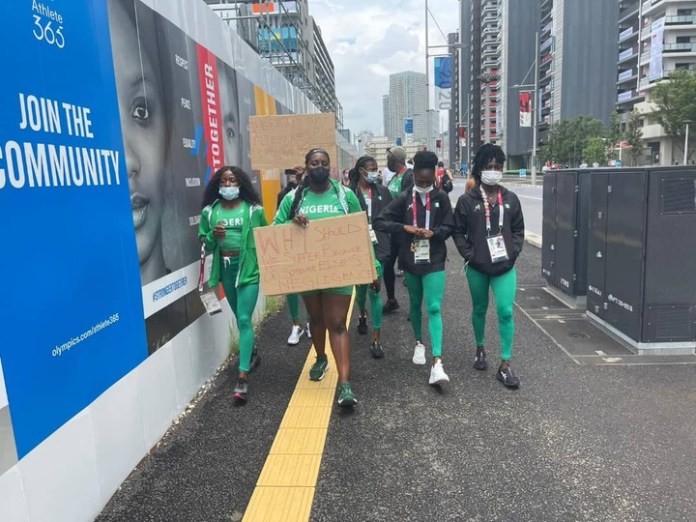
“The AFN bears responsibility for any lapses that may have occurred during the process and reassures Nigerians that our performances will not be negatively impacted,” the AFN said in response.
“All our athletes resident in Nigeria and who qualified for the Olympic Games completed the three mandatory tests. Most of our top athletes resident in the USA also completed their tests. However, a few athletes in the American collegiate system were tested but those tests were deemed not to have complied with… sample collection and analysis standards.”
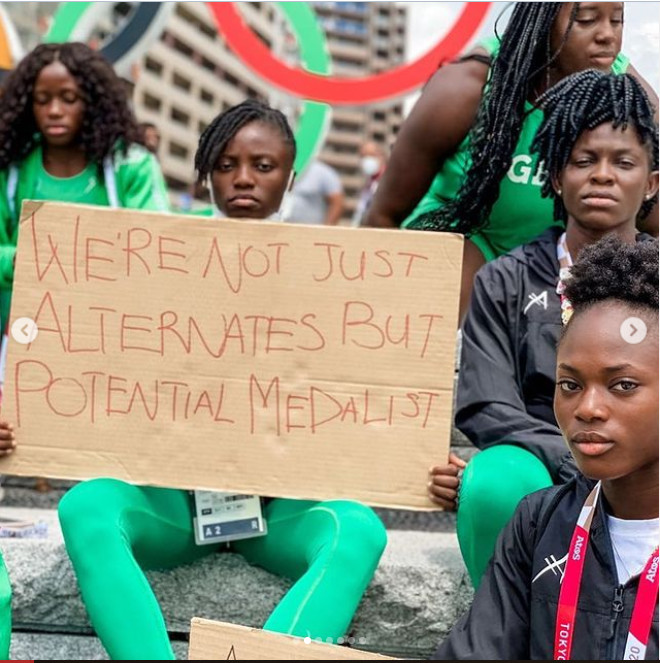
But the star runners claim the snafu wasn’t their fault and held signs with messages like “Why should we suffer for someone else’s negligence” and “We are not just alternates but potential medalists.”
The 2020 Olympics is the first time since 2012 that Nigerians have two athletes competing in the semifinals of the 100m women’s race after runners Blessing Okagbare and Nzubechi Grace Nwokocha made the cut in pre-qualifying events.
The AFN noted no Nigerian athlete tested positive for prohibited substances.
(07/30/2021) ⚡AMPby Gabrielle Fonrouge
Tokyo 2020 Olympic Games
Fifty-six years after having organized the Olympic Games, the Japanese capital will be hosting a Summer edition for the second time, originally scheduled from July 24 to August 9, 2020, the games were postponed due to coronavirus outbreak, the postponed Tokyo Olympics will be held from July 23 to August 8 in 2021, according to the International Olympic Committee decision. ...
more...The most common mistakes that slow you down on a run
If you’ve already fallen in love with running, then you know how great it can be to lace up and really pick up the pace.
Here, experts weigh in on the biggest mistakes you could be making that slow down your run.
1.- YOU’RE BOUNDING TOO HIGH

Your stride says a lot about you. The goal of your run should be to propel you forward, not upward. Any extra upward movement could be slowing down your pace and ultimately, an injury risk. “I see a lot of runners who are too bouncy in their motion,” says Rachel DeBusk, a Seattle-based RRCA run coach. “If you think this is you, think about running under a low ceiling, about 2 inches above your head.”
Another movement fixer? Try looking at a stable object in the distance as you run. If it’s bouncing, so are you, says DeBusk.
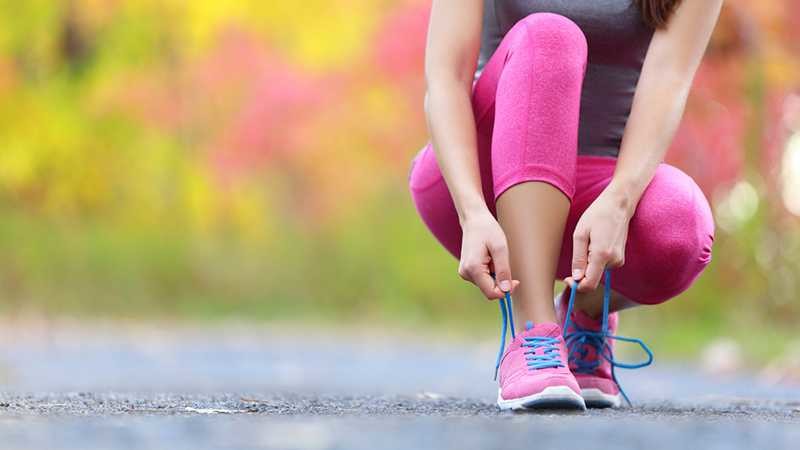
2.- GOING OUT TOO FAST
Unless you’re specifically running for tempo pace, your goal should be to run the second half faster than the first half, says Amanda Dale, certified sports nutritionist and endurance coach. “This not only ensures that you have enough energy in the tank to actually finish the workout, but it trains your body to work harder through fatigue — a great skill to have come race day.”
3.- YOU’RE NOT WEARING THE RIGHT CLOTHES
Wearing full tights on a scorching hot day or a loose-fitting T-shirt that catches a lot of drag? Be smart about the garb you lean into when you’re heading out for your morning miles.
“Clothing might seem like a second thought, but it can have a huge impact on your run,” says Alexandra Weissner, RRCA-certified running coach and co-founder of bRUNch Running. “This can be anything from too-short shorts without using something like Vaseline or BodyGlide in those spots that chafe to a pair of running tights that won’t stay up.”
Weissner suggests finding the picks that work for you, and then snagging them in multiple colorways.
4.- YOU’RE MOVING YOUR TORSO TOO MUCH
“Plain and simple: It’s wasted motion,” says DeBusk. “It both slows you down and tires you out.”
To visualize the optimal core stability for a faster run, DeBusk suggests the following exercise: Put yourself in a plank and bend one knee backward 90 degrees, toward the sky. Pulse that foot 2–3 inches toward the sky without letting the raised knee drop and keeping the core completely still. “That trains the body to keep the torso still and efficient during a run,” she says.
5.- YOU’RE NOT PROPERLY HYDRATED
Dehydration can slow you down majorly. This holds especially true for morning runners, who want to get up and out as soon as their alarms go off. “After sleeping for 7–8 hours your body needs to be replenished,” says Cortney Logan, an RRCA-certified run coach. “While you should down a glass of water after getting out of bed, this might not often be enough.” Runners need to know proper hydration.
Logan’s go-to is the three-beverage approach: a glass of water, an electrolyte beverage and a cup of coffee. “Water will help flush those muscles, electrolytes help combat dehydration from your good night’s rest, and coffee has caffeine that gives you that desirable jolt.”
6.- YOU’RE WEARING THE WRONG SHOES
Being in the wrong kind of shoes can be painful and stop a runner in their tracks. “Make sure to get fitted for your running shoes at a specialty shop,” suggests Jonathan Poston, USATF Level II endurance coach. “Test them out for shorter distances before going out for anything more than a few miles.”
(07/30/2021) ⚡AMPby Mapmyrun
Sydney McLaughlin wants gold at Olympics
Given its unique demands on technique, endurance, and speed, many consider the 400m hurdles one of the most challenging track and field events. After exploding out of the starting blocks, athletes must sprint 400m while propelling themselves up and over 10 hurdles positioned evenly around the track.
At 21 years old, Sydney McLaughlin is already the fastest woman in the history of the event as she begins her Olympic campaign on Saturday morning in Tokyo.
McLaughlin earned the world record at the US Olympic trials in Eugene, Oregon in June. Blazing hot temperatures (topping off at nearly 110 degrees Fahrenheit) resulted in a five-hour delay to one of the most anticipated races of the meet, where McLaughlin faced 2016 Olympic champion Dalilah Muhammad, the previous record-holder. But the wait was worth it for McLaughlin. She crossed the finish line in 51.90 seconds, bettering Muhammad’s record (set at the 2019 World Championships) by 0.26 seconds. Realizing her momentous accomplishment, McLaughlin’s mouth gaped as she crouched on her knees.
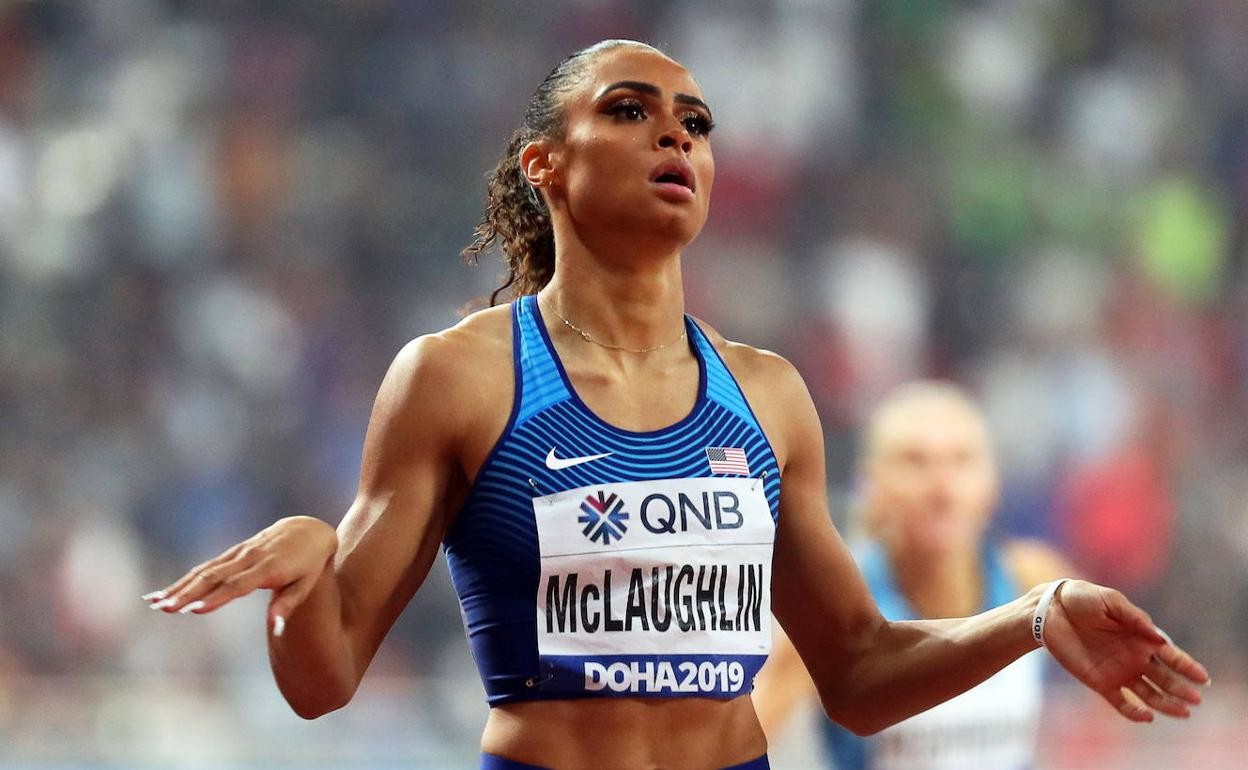
“I felt immediate excitement and overall gratefulness,” she said. “I owe it all to God, my family and my team. I’m still in disbelief, but it’s truly just faith, trusting the process, and seeing my hard work along with the gift of God being put into action.”
McLaughlin, who also holds numerous age group world records and was a two-time recipient of the Gatorade’s National Female Athlete of the Year award, will now attempt to secure another title: Olympic gold medalist. She will have the opportunity to do so in a rematch with Muhammad scheduled for 4 August. It’s a race both athletes are eagerly awaiting.
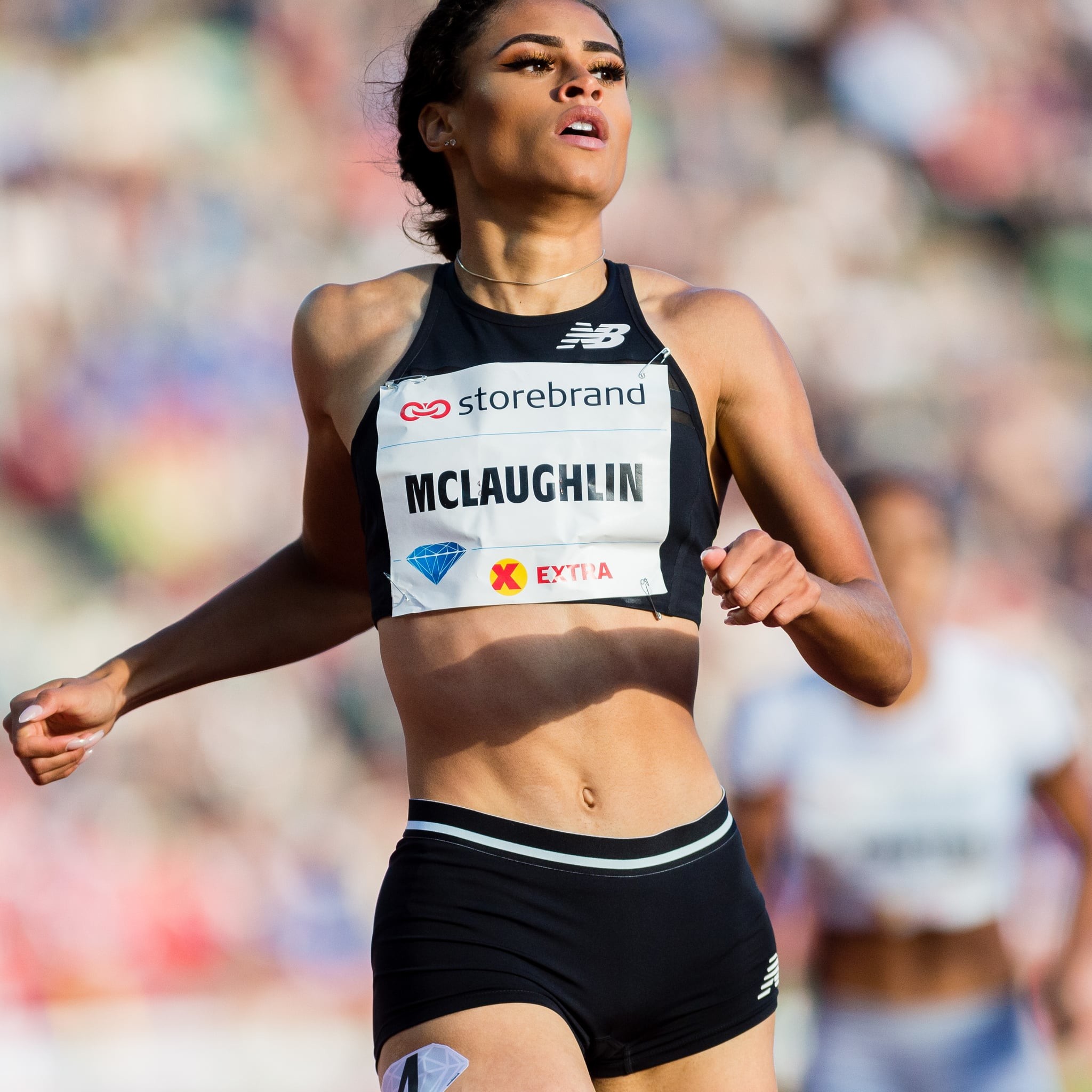
After congratulating McLaughlin on her record-breaking win, Muhammad said: “It’s going to be a battle in Tokyo for sure.”
The Tokyo Games mark McLaughlin’s second Olympic appearance. In 2016, at 16 years old, she became the youngest athlete to make the US Track and Field Olympic team since 1972.
“It’s an honor in and of itself to be able to go to the Olympics for a second time. I am so excited and grateful, and I’m definitely going to continue to focus on training and being the best I can be,” said McLaughlin, who comes from an athletic family. Her mother ran in high school, her father was a semi-finalist at the 1984 Olympic trials in the 400m, and her brother, Taylor, finished second at the 2016 Under-20 World Championships in the 400m hurdles.
In Rio de Janeiro, McLaughlin’s Olympic journey stopped in the semi-finals, where she placed fifth. This year, she is five years older, stronger and wiser, and the pandemic helped her gain a renewed focus.
“Those first couple of months being stuck in the house, I was like, ‘Who am I doing this for?’” she said.
Her outlook shifted, however, as she became more involved in her faith.
“My goals are different now,” she said. “A lot of my life was trying to prove something, which is an endless cycle that will never fulfill you. My gifts are not to glorify myself. When I stand on the podium, I give the glory to God.”
Even with this newfound meaning, training in Los Angeles during the pandemic presented its own challenges. When the city shut down, McLaughlin was forced to get creative with her workouts, which meant sneaking onto tracks and running on highway medians. She also traveled with her team to Arizona to get a month’s worth of consistent training. Despite this unconventional approach, the delayed Olympic games worked in her favor.
“The extra time for me was a blessing,” McLaughlin said.
The additional year enabled McLaughlin to make key changes, including switching to coach Bobby Kersee, the husband and former coach of Olympic gold medalist Jackie Joyner-Kersee. Kersee also trained McLaughlin’s previous coach, Olympic gold medalist Joanna Hayes, and Florence Griffith Joyner, who holds world records in the 200m and 100m races and is touted as the fastest woman of all time.
(07/30/2021) ⚡AMPby Stephanie Hoppe
Tokyo 2020 Olympic Games
Fifty-six years after having organized the Olympic Games, the Japanese capital will be hosting a Summer edition for the second time, originally scheduled from July 24 to August 9, 2020, the games were postponed due to coronavirus outbreak, the postponed Tokyo Olympics will be held from July 23 to August 8 in 2021, according to the International Olympic Committee decision. ...
more...Ethiopia’s Selemon Barega wins gold at 10,000m in Tokyo
Selemon Barega captured gold in an exciting men’s 10,000m final today in Tokyo in 27.43.22, followed by race favourite Joshua Cheptegei and Jacob Kiplimo, both of Uganda, for silver and bronze – the first medals ever won by Ugandans in this event. Canadian record holder Mohammed Ahmed threw in a surge near the end, briefly leading the tightly bunched pack, but ended up finishing sixth in the 25-lap spectacle, with a season’s best time of 27:47.76.
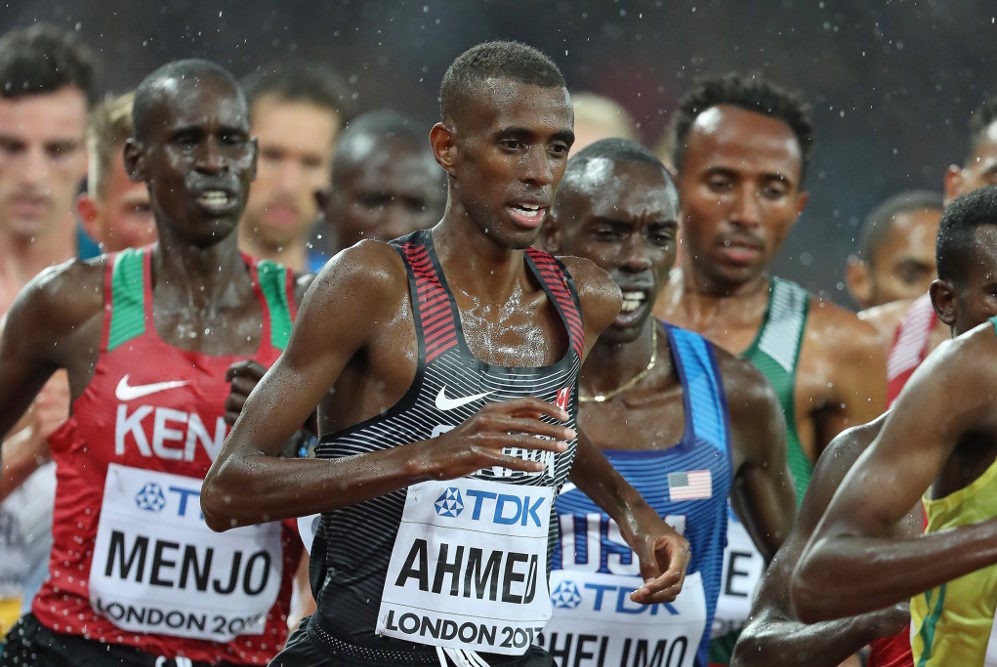
Ahmed managed to stay in contention and out of trouble early on in the race, going with Cheptegei, who took over the lead with four laps to go. With two laps to go, Ahmed took the lead, but in the end was out-kicked.
Ahmed also finished sixth in the 10,000m at the 2019 World Championships in Doha. Despite finishing off the podium, this is an incredible achievement for Canadian distance running. Ahmed grew up in St. Catharines, Ont., and ran at the University of Wisconsin. Since then, he has been training with the Bowerman Track Club in Portland, Ore., and his teammate, Woody Kincaid, finished 15th.
The 2018 Commonwealth Games silver medallist in 5,000m and 10,000m will be on the track again looking to reach the podium in the 5,000m heats on Tuesday, Aug. 3 at 7 a.m ET.
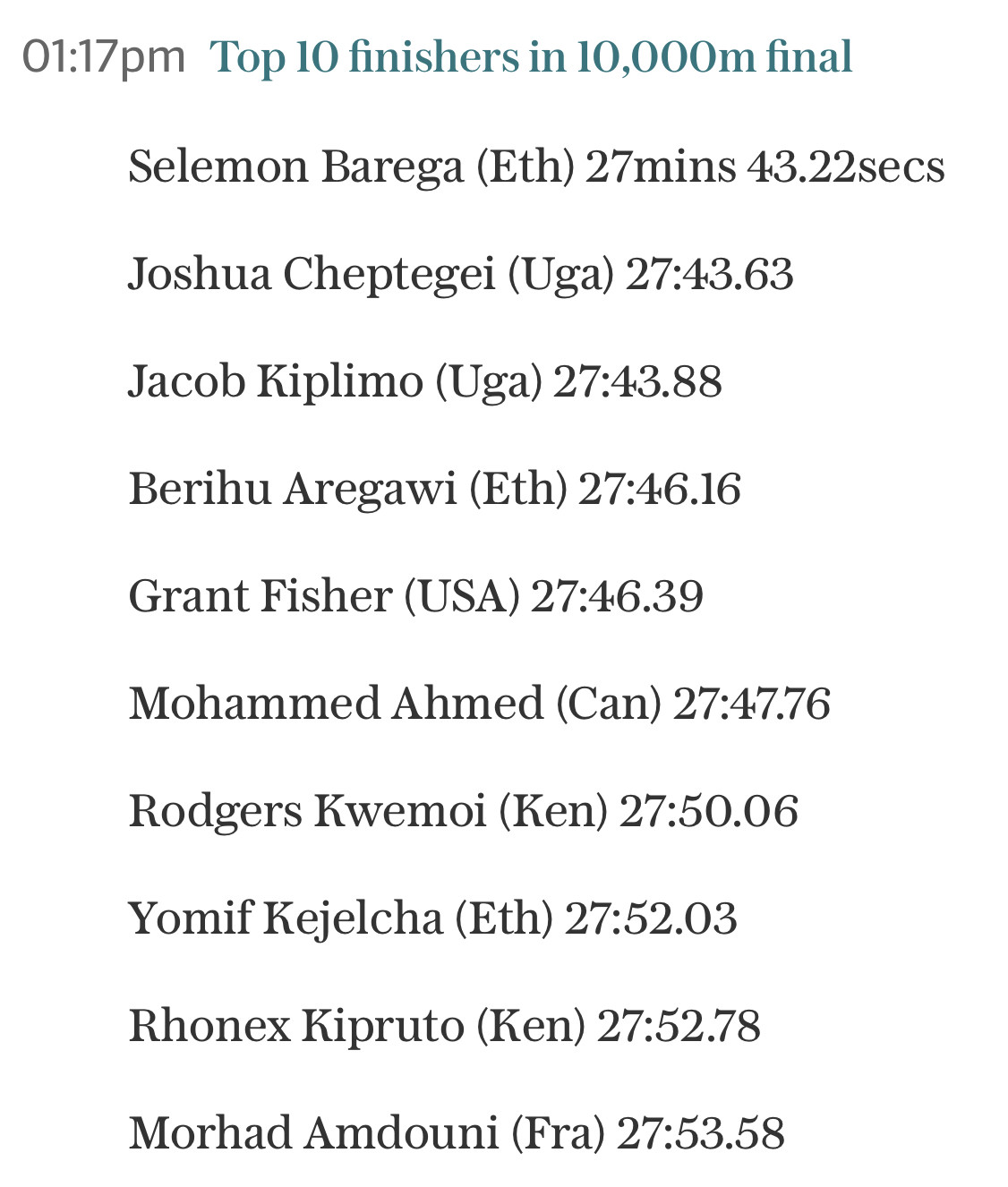
by Marley Dickinson
Tokyo 2020 Olympic Games
Fifty-six years after having organized the Olympic Games, the Japanese capital will be hosting a Summer edition for the second time, originally scheduled from July 24 to August 9, 2020, the games were postponed due to coronavirus outbreak, the postponed Tokyo Olympics will be held from July 23 to August 8 in 2021, according to the International Olympic Committee decision. ...
more...Without Jamaican Usain Bolt the 100m is suddenly a race again
The post-Usain Bolt era in the Olympic 100 meters begins this weekend as the United States seek to regain supremacy in the event they dominated for more than a century.
Jamaican Bolt won the last of three straight titles in 2016 in Rio de Janeiro and since his retirement the following year nobody has really stepped up to stamp their authority on the sport's most-watched race.
The U.S have won more golds in the event than all other nations combined, having taken 16 of the 28 Olympic titles contested, but their last success came via Justin Gatlin in 2004.

This year, though, they are back gunning to top the podium, even without the presence of banned world champion Christian Coleman.
Seven out of the eight sprinters with the fastest times in 2021 have been Americans, led by Trayvon Bromell whose 9.77 second run in Florida last month is the fastest of the year and marks him as the race favorite.
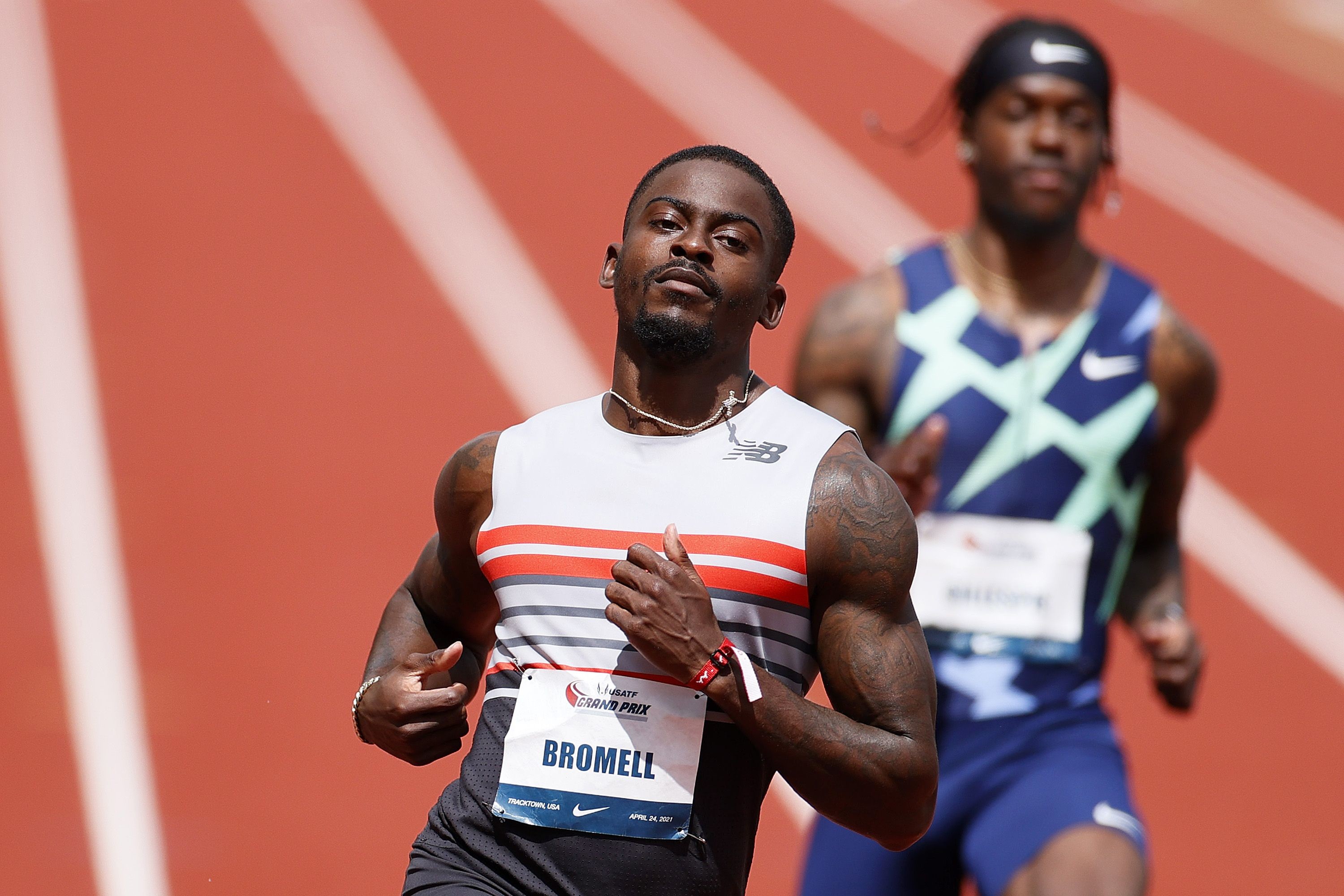
He won the U.S. trials in 9.80 to put a long and troublesome injury history behind him, but the self-described "silent killer" is not happy with the favorite tag.
"When you put yourself into that bubble, into that box, a lot of expectations come into it," he said recently. "When you start living in other people's world then you get off of your own plan."
Bromell's closest challenger is probably his compatriot Ronnie Baker, who came second to him at the U.S. trials with a time of 9.85.
Baker beat Bromell in Monaco, his second successive Diamond League win, and has run an impressive wind-aided 9.78s seconds in the past.
Unlike his compatriot, Baker is happy to blow his own trumpet. "I am one of the best runners in the world, hands down. I have been, since 2018," he said after his win in Monaco, a race that included his rivals in Tokyo.
He has also had to overcome injuries over the last few years, but he said that he was feeling confident heading into Tokyo.
"This year is probably the most technically sound I have been," he said. "I know I can run way faster than anyone."
While the U.S. sprinters, that include Fred Kerley, the 2019 400m world bronze medalist, are definitely contenders for all three medals, there are other runners coming to Tokyo with a mission, though unusually Jamaica look a touch off the pace.
Another non-American who can make some noise in Tokyo is the South African sprinter Akani Simbine who finished fifth five years ago and boasts the second fastest time of the year.
(07/29/2021) ⚡AMPby Omar Mohammed
Tokyo 2020 Olympic Games
Fifty-six years after having organized the Olympic Games, the Japanese capital will be hosting a Summer edition for the second time, originally scheduled from July 24 to August 9, 2020, the games were postponed due to coronavirus outbreak, the postponed Tokyo Olympics will be held from July 23 to August 8 in 2021, according to the International Olympic Committee decision. ...
more...The Detroit Free Press Marathon is going ahead with U.S.-only race
Detroit's cross-border marathon is staying on the U.S. side of the Detroit River this year, organizers say.
The Detroit Free Press Marathon announced that given the "fluidity" of the pandemic and restrictions at the border — and the race being less than three months away — a decision was made to proceed with a Detroit-only route.
"Running internationally is a beloved and unique component of our race, and because of that, we exhausted every opportunity and avenue, hoping that we would continue that tradition this year," the organization said on its website on Thursday.
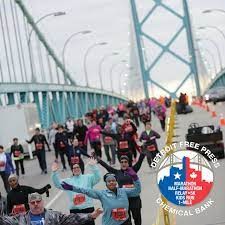
The marathon, half-marathon and marathon relay take place on Oct. 17. It's only the third time in the race's four-decade history that runners will be competing within Detroit only.
The route usually crosses the Ambassador Bridge and the Windsor-Detroit Tunnel.
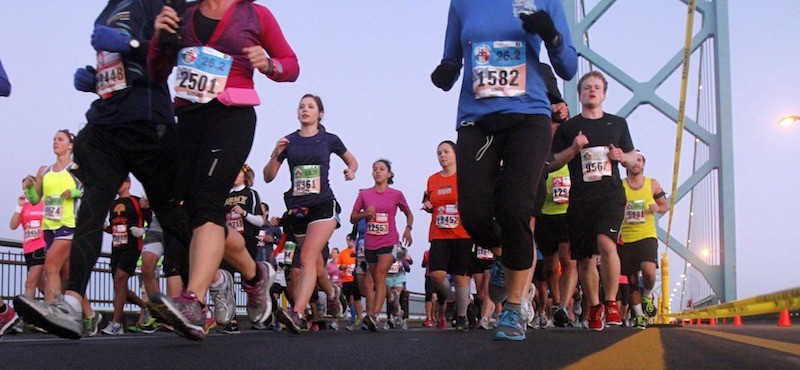
Last year's event was virtual, amid the pandemic and restrictions on non-essential travel at the border.
The Canadian federal government announced earlier this month that as of Aug. 9., U.S. citizens and permanent residents will be able to enter Canada for non-essential purposes if they're fully vaccinated.
The U.S. has yet to reciprocate to Canadians. The government recently extended the border shutdown until at least Aug. 21.
(07/29/2021) ⚡AMPby CBC News
Detroit Free Press Marathon
Our marathon course offers international appeal, traversing both downtown Detroit and Windsor, Ontario, crossing the border at both the Ambassador Bridge and Detroit-Windsor Tunnel. You will run through historic neighborhoods, around beautiful Belle Isle, and along the spectacular RiverWalk. ...
more...Want Stronger Bones? Running Builds Bone Strength
In the constant battle for health and longevity, you’ve got to take care of your bones. After all, they’re a major factor in keeping you upright and moving. Unfortunately, as you age, bone density can decrease and lead to osteoporosis. Before things get that far, there’s a lot you can do to ensure your bones stay strong for years to come.
According to the NIH Osteoporosis and Related Bone Diseases National Resource Center, weight-bearing and resistance exercises are great for your bones. This includes walking, running, climbing stairs, playing sports and lifting weights.
A study out of the University of Missouri looked at the bone density of men ages 25–60. After one year of performing high-impact exercises, the men experienced new bone growth. Basically, high-impact exercise caused the bones to adapt, become stronger and repair themselves, which included the formation of new bone tissue.
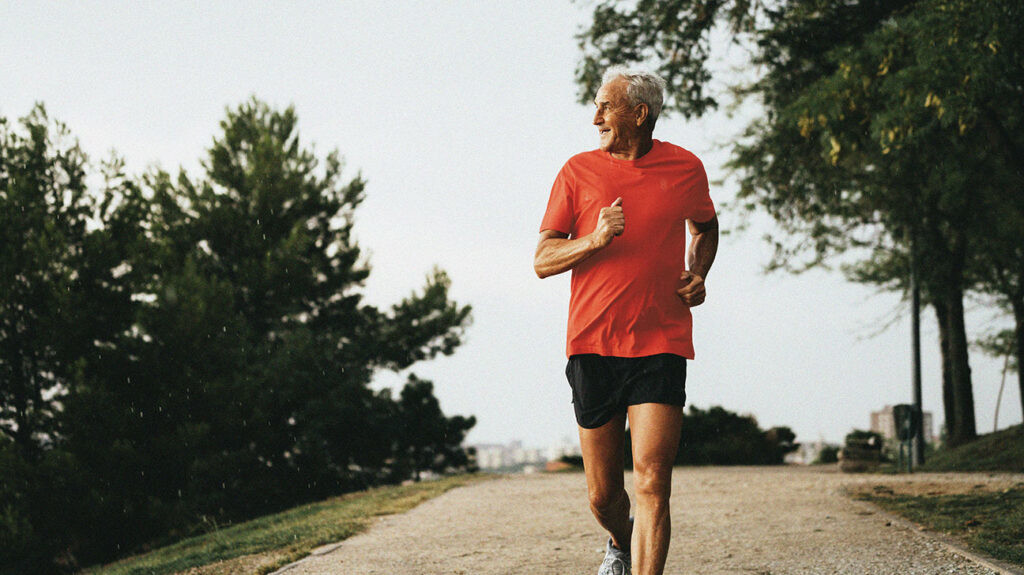
On the other hand, activities like cycling and swimming — while excellent for cardiovascular health — might not be doing your bones any favors.
Per a recent study from the Norwegian School of Sport Sciences, elite-level road cyclists had worse bone density than runners. When comparing middle-distance and long-distance runners with the cyclists, researchers noticed the cyclists had lower bone mineral density across the board — males and females alike. More than half of the cyclists were actually classified as having low overall bone density per criteria set forth by the American College of Sports Medicine.
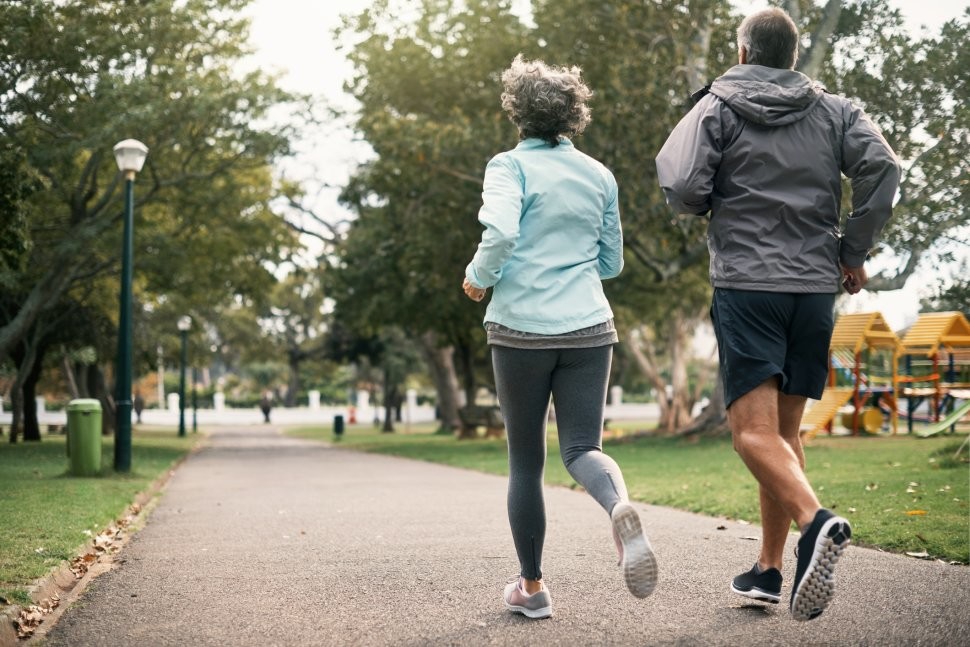
In fact, even though cycling is great for your heart and lungs, the bones in cyclists don’t show much difference from the bones of people who do not exercise. To address this problem, researchers suggest combining cycling with resistance training.
Running puts significant stress on your bones. This isn’t news to anyone who’s experienced sore knees or ankles after pounding the pavement. But as we’ve seen from the above studies, this pounding isn’t necessarily a negative thing, and it can actually be very beneficial.
Depending on your speed and gait, distance running can put up to three times your bodyweight on your bones and joints with each step. If you’re sprinting, that number can increase to seven times your body weight, according to the book “Build Your Running Body.” That adds up. If you’re overdoing it — or unlucky — such gravitational force can lead to shin splints and stress fractures. But each time your bones are subjected to this force, they also have an opportunity to change and improve.
Just as your muscles break down during exercise and then repair themselves, coming back bigger and stronger than before, so do your bones. One study even found sprinters (and tennis players) have 23% greater bone mass than people who don’t exercise. Another study found sprinters have 10–14% more bone mineral density in their hips.
The American Academy of Orthopedic Surgeons says most people begin to lose bone mass at around 40 years old. However, if you take the right steps — like going running, which involves taking many steps — you can slow that loss and even build new bone. All that extra bone comes in handy as you age.
(07/29/2021) ⚡AMPby Mapmyrun
Lake Biwa Mainichi Marathon organizers look forward
The 76th Lake Biwa Mainichi Marathon race held on February 28 this year concluded as the best edition ever held, with the establishment of a new Japanese men’s national record and the first ever performance of under 2 hours 4 minutes by an Asian athlete.
The Lake Biwa Mainichi Marathon boasted the longest history of any marathon in Japan. It has traditionally been a men-only elite race with approximately 300 entries each year. In order to catch up with the trends of the world’s major marathon races the race organizers have decided to move the race, leaving the beloved course in Otsu city in Shiga prefecture and relocating to Osaka, using the course of the present Osaka Marathon, and combining the elite race with the mass participation Osaka Marathon.
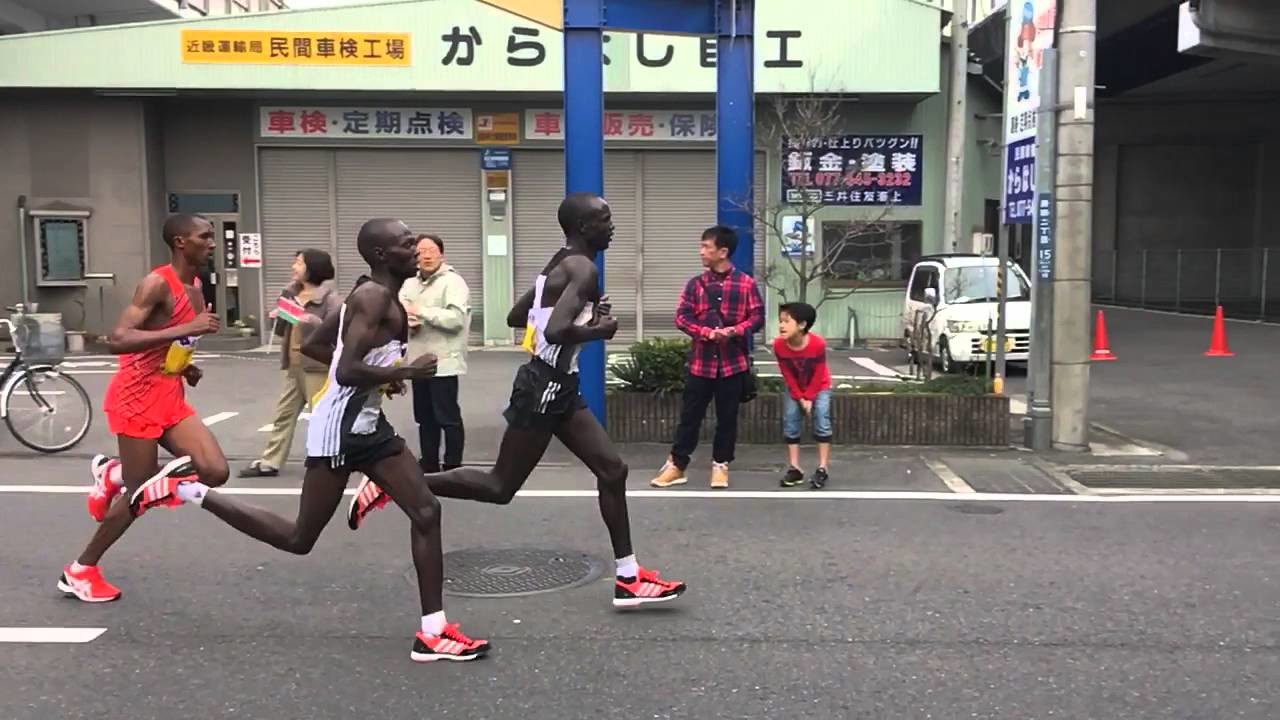
The 10th Osaka Marathon was to be held in November 2020 with 32,000 participants anticipated but had to be cancelled due to the COVID-19 pandemic. The organization of the event itself is perfect but until 2019 Osaka Marathon had not had attracted serious elite athletes.

On February 27, 2022 a new event had been planned, combining the 10th Osaka Marathon and the 77th Lake Biwa Mainichi Marathon with a total of 35,000 runners provided. Because of the continuing impact of the COVID-19 virus this number has now been revised to 20,000.
The elite race level of the Lake Biwa Mainichi Marathon will be maintained on the Osaka Marathon course route. The Japan Association of Athletics Federations (JAAF), the Osaka Prefecture and the Mainichi Newspapers will be the joint organizers of the race, and NHK will continue to broadcast on TV, providing live coverage in Japan and overseas.
The invited athletes will be sufficient in quality and quantity to retain a Gold Label. The Mainichi Newspapers will remain responsible for the management of the elite athletes.
(07/29/2021) ⚡AMPby AIMS
Osaka Marathon
In 2022 the Lake Biwa Mainichi Marathon and Osaka Marathon were held together. For 2023 the name of the marathon will be Osaka and both men and women can run the race. The original male-only competition was first held in 1946 and, having taken place every year since then, it is Japan's oldest annual marathon race. The early editions of...
more...Hunter and Davis are officially melting the Internet: Hunter on Instagram - They said I’d never walk, So I learned to run instead!
#TeamUSA long jumper Tara Davis & Paralympic athlete Hunter Woodhall are officially melting the Internet!! I hope they both win gold in the #TokyoOlympicGames!! 🇺🇸 Posted Gary Allen on FB.
After two-time Paralympic medalist Hunter Woodhall ran a season-best 11.04 seconds in the 100-meter T62 sprint at the U.S. Paralympic Team Trials for Track and Field on June 18 in Minneapolis, he picked up his phone and FaceTimed his girlfriend immediately upon stepping off the track.

Tara Davis was already on the other side of the country, preparing for the long jump competition at the U.S. Olympic Team Trials in Eugene, Oregon. Woodhall and Davis, who train at the University of Arkansas and University of Texas, respectively, are accustomed to regular FaceTime calls at all moments in time to keep their long-distance relationship strong.
In Tokyo, Woodhall is expected to compete in both the 100 and 400; at the last Paralympic Games in Rio he won silver in the 200 and bronze in the 400. While he’s no longer competing at the NCAA level — he turned pro in January — he’s still training with the Arkansas team, having adjusted his schedule to peak at Trials and the Games as opposed to indoor and outdoor collegiate nationals.
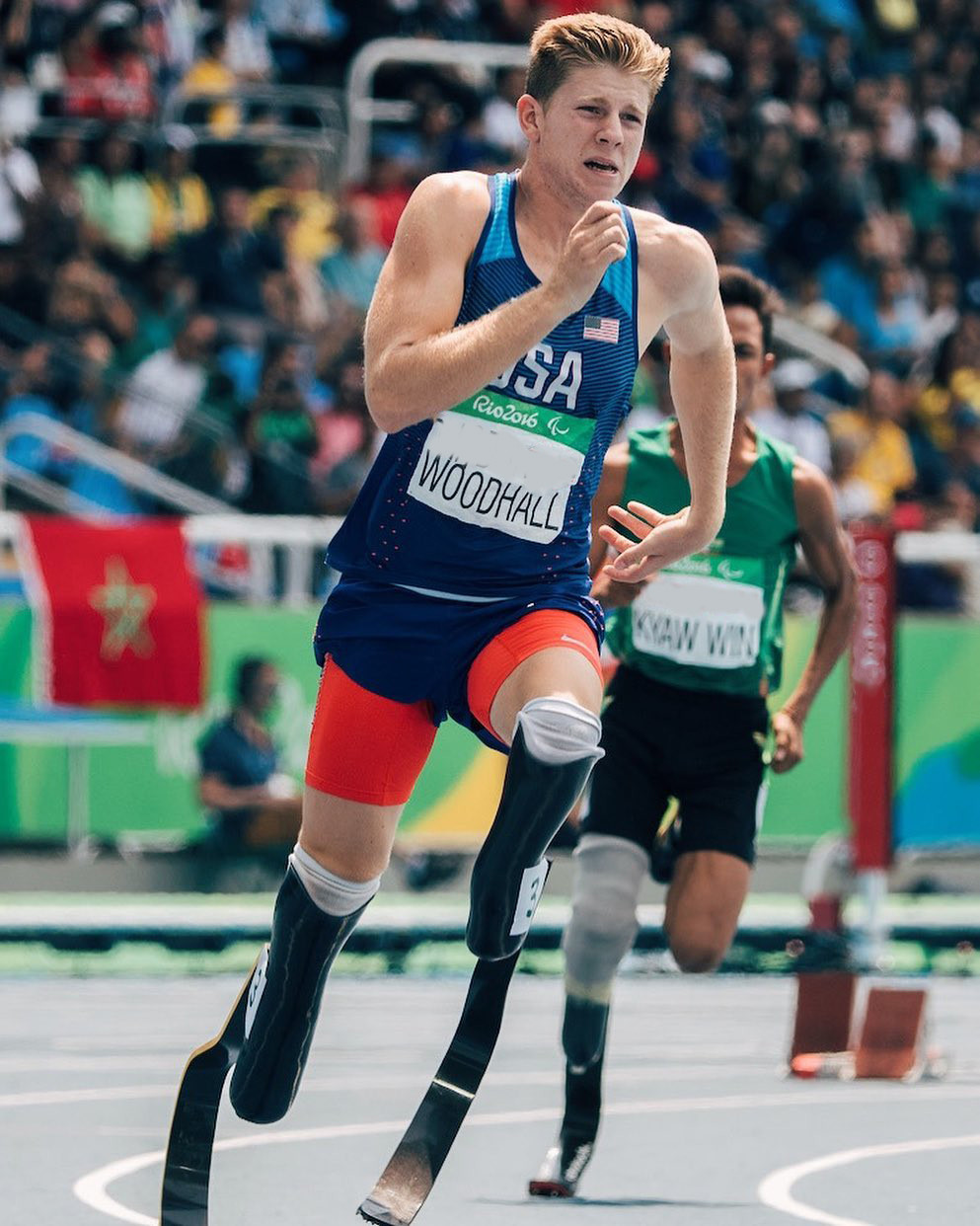
Davis was competing in her second Olympic Trials after finishing 19th in the long jump in 2016. She has held the American junior record in the event since 2017 and earlier this season broke Jackie Joyner-Kersee’s collegiate record set back in 1985.
Davis is also No. 2 at the junior level in the 60-meter hurdles.“I can't put into words how I'm feeling right now, there just are so many emotions,” Davis said to the website of the University of Texas, where she was an NCAA indoor and outdoor national champion.
“I say it all the time, I didn't think I was going to be here. I was going through so much I just didn't ever think I was going to be at the Olympic Trials. But here I am, and I was so grateful for the opportunity, and I took advantage of it.
”The couple, both 22, have been chronicling their journeys in their own YouTube channel, and Woodhall, a TikTok star who has more than three million total social followers across all his platforms, has been profiled by the likes of the New York Times and “The Ellen DeGeneres Show.
”The first double amputee track and field athlete to have earned a Division I athletic scholarship insists there will be as many reasons to follow the Para track and field athletes like himself in Tokyo, as the Olympic athletes like Davis.
“The biggest reason to tune in is because of the stories that come along with the Paralympics — things that people have had to fight through and go through just to be here,” he said.
“At the end of the day we are all humans and all in the same field. If people can come out here and compete after the things they’ve gone through and still be chasing their dreams, that shows that everyone’s on the same level.”
(07/28/2021) ⚡AMPWill this world record ever be broken? Maybe in another 100 years!
38 years ago Czech runner Jarmila Kratochvilova set the still standing world record of 1:53.28 over 800 meters for women. Is this record legitimate and will it ever be broken? Dave Ross asked on FB.
In 1983, Kratochvílová broke the 800 m world record with a time of 1:53.28. At the World Championships shortly afterwards, she set a world record of 47.99 seconds to win the 400 m.

Kratochvílová's 1983 400-metre world record of 47.99 seconds stood for two years until it was broken by her great rival Marita Koch in 1985. Koch's 400-metre world record of 47.60 seconds still stands as of 2021. Koch and Kratochvílová are the only women who have broken the 48 second barrier in a 400-metre laned race.
Her 800-metre world record is the longest standing track record in men or women's athletics, and was described by 1996 Olympic champion Svetlana Masterkova as ".. very fast. It's impossible for women to run so fast. It will last for 100 years."
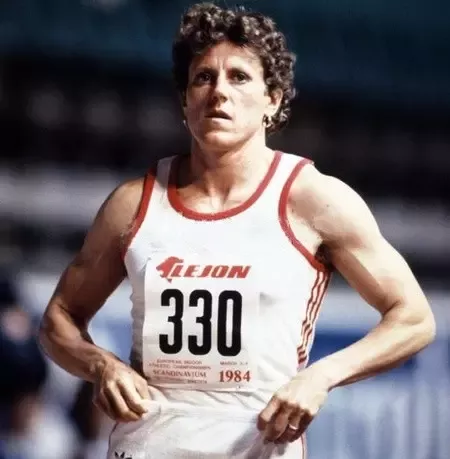
Kratochvílová was a late developer, not breaking 53 seconds for the 400 metres until she was 27, and she was 32 when she set her world records.
Her remarkably fast times and her atypical muscular physique spawned rumors of illegal drug use.
Kratochvílová has maintained her innocence, and although in 2006 the Prague newspaper Mladá fronta DNES claimed to have uncovered a doping program run by Czechoslovakia's Communist government, there was no link to Kratochvílová despite her being her country's highest profile athlete.
She and her coach of 20 years, Miroslav Kvac, maintain that it was rigorous training and high doses of vitamin B12 that account for her records, a claim treated with scepticism by several anti-doping campaigners. In 2017, she criticized a proposal by European Athletics to remove suspicion about drug-taking by voiding all world records set before 2005.
(07/28/2021) ⚡AMPOlympic Sprinter Switzerland's Alex Wilson Banned From Tokyo 2020 Denies Doping, Blames U.S. Meat
A Swiss sprinter who blamed failing an anti-doping test on meat he ate in the U.S. will not compete at the Tokyo 2020 Olympics after the Court of Arbitration for Sport (CAS) reinstated his ban on Wednesday.
Jamaica-born Alex Wilson, who was scheduled to race in the 100m and 200m, was suspended in April by the Swiss anti-doping agency after testing positive to trenbolone—a banned steroid—in an out-of-competition test back in March.
Wilson maintained he was clean and attributed the positive test to contaminated meat he ate in a Jamaican restaurant in the U.S. and successfully appealed the ban, which was lifted earlier this month by Swiss Olympic—the umbrella organization that covers Swiss sports and the Swiss Olympic Committee.
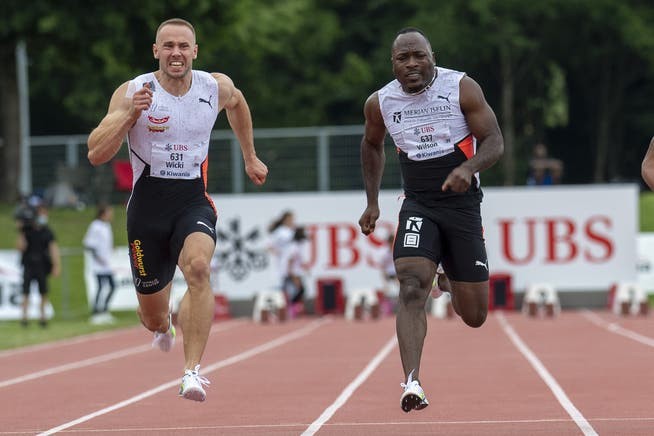
World Athletics, however, appealed the decision to CAS, which reinstated the ban.
"The Panel concluded that the provisional suspension imposed on the athlete on April 28 2021 should not have been lifted by the Disciplinary Chamber of Swiss Olympic," CAS said in a statement.

"It follows that the decision of the disciplinary chamber of Swiss Olympic dated July 2 2021 is set aside and the provisional suspension shall be reinstated with immediate effect.
"The present CAS decision does not prejudge in any way the decision which will be rendered by Swiss Olympic later on, once the disciplinary proceedings will have been completed."
In an official response following the ruling by CAS, Swiss Olympic said it regretted the incident.
"Swiss Olympic very much regrets this case and would be very disappointed if the offense was confirmed," the statement read.
"Swiss Olympic is convinced that the fight against doping must be conducted with all consistency."
The bronze medalist in the 200m at the European Championships in 2018, Wilson broke the European record in the 100m with a time of 9.84 earlier this month at a meeting in Marietta, Georgia.
While the record was not ratified it marked a significant improvement from Wilson's previous six performances over the distance this year, where he had never clocked a time below 10.38.
Wilson isn't the only athlete due to compete in Tokyo to have been suspended over alleged anti-doping violations.
On July 14, the International Swimming Federation (FINA) announced two swimmers due to represent the Russia Olympic Committee at the 2020 Olympics had been provisionally suspended.
(07/28/2021) ⚡AMPby Dan Cancian
Tokyo 2020 Olympic Games
Fifty-six years after having organized the Olympic Games, the Japanese capital will be hosting a Summer edition for the second time, originally scheduled from July 24 to August 9, 2020, the games were postponed due to coronavirus outbreak, the postponed Tokyo Olympics will be held from July 23 to August 8 in 2021, according to the International Olympic Committee decision. ...
more...Athletics Kenya (AK) have named World 2019 bronze medalist Rhonex Kipruto as Geoffrey Kamworor's replacement in Kenya's 10,000 meters team for the Tokyo
Geoffrey Kamworor, who sustained an ankle injury in training this week, was a big medal prospect in the team that also has national cross country champion Rodgers Kwemoi and Weldon Kipkirui.
The two left the country last Friday and will be competing in the final on July 30 where Kenya is expected to bag its first medal in athletics.
Kipruto, World Under-20 10,000m champion, withdrew from the Kenyan trials with five laps to go.
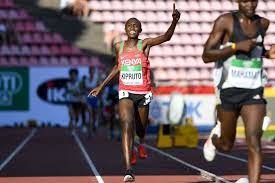
General Team Manager for the Tokyo Olympic Games Barnaba Korir said Kipruto has officially joined the team after clearance from World Athletics and necessary paperwork is ongoing.
“We are pleased to announce that Rhonex Kipruto is the latest inclusion to our athletics team for the Tokyo Olympics. He has already reported at Kasarani Stadium where the remaining part of team Kenya are in residential training in a bubble camp.
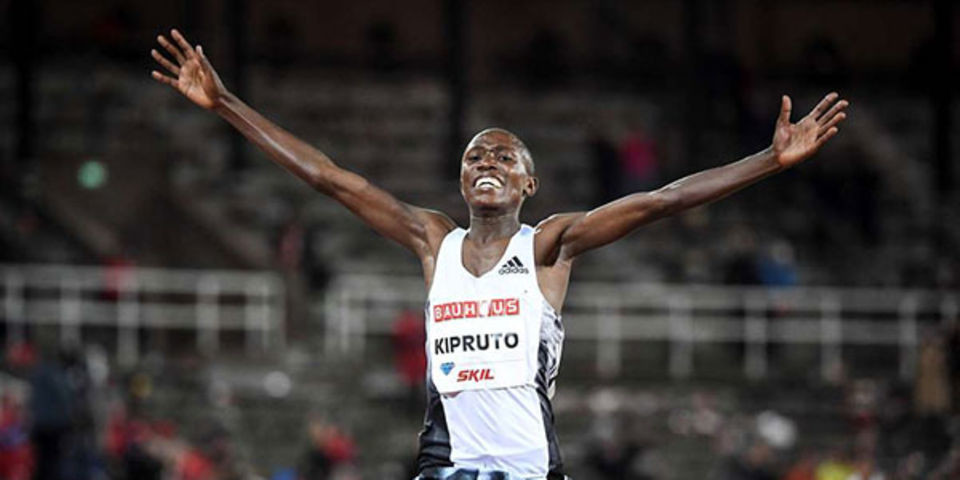
"The decision was arrived at after AK sought clearance from the Athletics Integrity Unit (AIU) on his anti-doping testing status, which I am pleased to say he has been given the green light,” Korir said via his official Facebook page.
Kipruto told Nation Sport that he is happy to get a chance to represent Kenya in what will be his first appearance at the Olympics.
“I’m really sorry for my good friend Kamworor and I want to wish him quick recovery so that he can continue with his career. On my part I’m delighted becaue I will be able to represent my country once again and we will work hard to win something good for our country,” said Kipruto.
He also revealed to Nation Sport that his first Covid-19 test came out negative and he was going to be tested for the second time, a requirement before jetting out for the Games in Tokyo.
“I got the results and they are negative. We are doing another test just to be sure because this is now a requirement before travelling,” said Kipruto.
Kipruto is currently the fastest man in 10km on the road having clocked world record time of 26:24 after lowering Uganda’s Joshua Cheptegei’s time of 26:38 in Valencia, Spain in 2020.
The two will clash again when they line up for the 10,000m final on Friday after Cheptegei floored Kipruto during the 2019 World Championships in Doha, Qatar winning gold ahead of Ethiopia’s Yomif Kejelcha who took silver with KIpruto settling for bronze.
“We shall be battling out again with Cheptegei whom we have met in various races. He is a good athlete but I don’t want to say much for now but just to give my best, teamwork will be paramount,” he added.
(07/28/2021) ⚡AMPby Bernard Rotich
Tokyo 2020 Olympic Games
Fifty-six years after having organized the Olympic Games, the Japanese capital will be hosting a Summer edition for the second time, originally scheduled from July 24 to August 9, 2020, the games were postponed due to coronavirus outbreak, the postponed Tokyo Olympics will be held from July 23 to August 8 in 2021, according to the International Olympic Committee decision. ...
more...Speed Work vs. Endurance Running
“Going for a run” means something different to everyone. Mileage always varies, and there are myriad things to focus on; from form and speed, to distance and strength, it can be daunting to try and figure out which factors will give you the best results. Luckily, a simple mix of speed work and endurance running will kick off some key physiological adaptations—and (done properly) will naturally help refine your form. Let’s dive in to what that looks like in practice!.
First, let’s take a look at what it means to “sprint.” While competitive running defines a sprint as 400m and under, we’re going to treat a sprint as a fast, 10-30 second effort, since it’s easier to measure time than to measure distance on a training run. Sprinting (or speed work) is useful in training because it taxes our anaerobic system and increases our ability to buffer and process lactate. Speed work also creates high-intensity muscle fatigue by increasing the demand for power.
Also, because these are short bursts of effort, you need to arrive at correct run form faster, locking in proper foot strike and arm swing to quickly increase your speed. In terms of foot strike, that means we need to be sure our weight is coming down in the middle of our foot, and that we’re not rolling over towards the inside or outside of the foot. As for our arm swing, we want to keep it parallel, not letting our arms cross over the midline of the body, as that can put unnecessary strain on our back and shoulder muscles. Good, upright posture and a tight core will help with both of these, and should always be among our top priorities when we run.
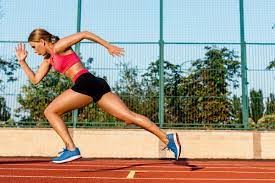
Speed and power aside, it’s also important to think about your form during speed work to avoid injury. Sprinting forces your muscles to do very hard work in a short amount of time, and when your muscles are working harder, they are more vulnerable to injury. Focus on keeping your movements controlled and efficient to help avoid tweaking anything during speed work.
By contrast, long efforts (upwards of 60 seconds) increase your endurance by creating sustained low-intensity muscle fatigue. Distance running works your aerobic system, and increases your body’s ability to deliver oxygen to working muscles.

In addition to testing the endurance of your running form, long runs require you to work on stabilizing your breathing, which (again) good posture can help with. To test your endurance running form, simply take note of where you’re sore after a long run. Sore abs, glutes, hamstrings, and quads are all good indicators of proper running form, but sore muscles in your back, neck, and shoulders likely indicate a hunched posture, and/or a twisted arm swing that crosses over your midline. Sore feet and ankles could be the result of an uneven trail, but may also indicate an uneven foot strike if the soreness occurs after a road run.
Because distance running puts your body under stress for longer, it can increase injury susceptibility gradually over time. These injuries will be more subtle than acute, but can take longer to recover from. Take note of any soreness that doesn’t go away after a day or two of endurance running—you might be due for some new shoes or a gait analysis.
Mobilizing is imperative in order to reap the benefits of your runs, no matter their distance or speed. So get out that foam roller, and stretch out the big and the small muscles that power your run. (If you need some ideas on what or how to foam roll, check out the video to learn the basics!)
In addition, be sure to include at least one day of strength training per week. Stronger muscles are less susceptible to injury, and the more we strengthen the muscle groups that support correct running form, the more natural that form will feel.
By maintaining a good form during both speed and endurance work, those muscle groups will fire up as well, and eventually you won’t even have to think about your form! If you’re not sure exactly how to strength train, try either this workout or this one to get some initial ideas.
So how do we combine these all ideas to reach our peak performance? It’s ideal to practice a relatively equal combination of endurance running and speed work, combined with daily mobility and a day or two of strength training per week. You can do as few as two runs a week and maintain fitness, just make sure that you don’t slack on your strength and mobility, which will ultimately enable your most efficient running form. Incorporating just one longer run and one day of speed work (focusing on 10-30 second sprints) per week will help take your running to the next level.
(07/28/2021) ⚡AMPby Training Peaks






